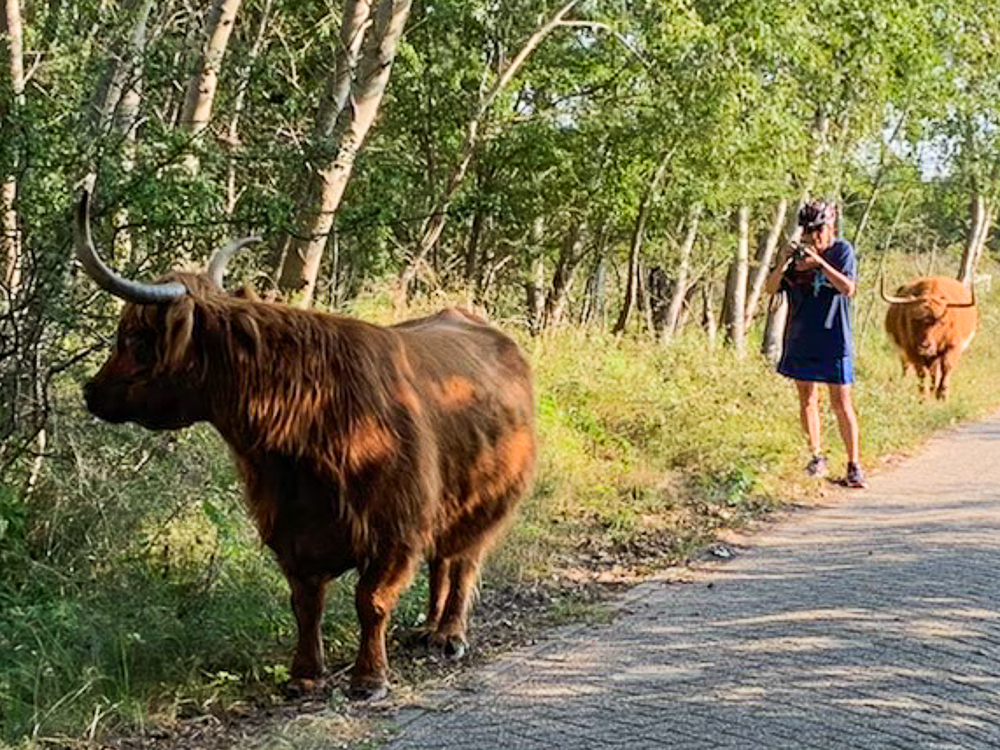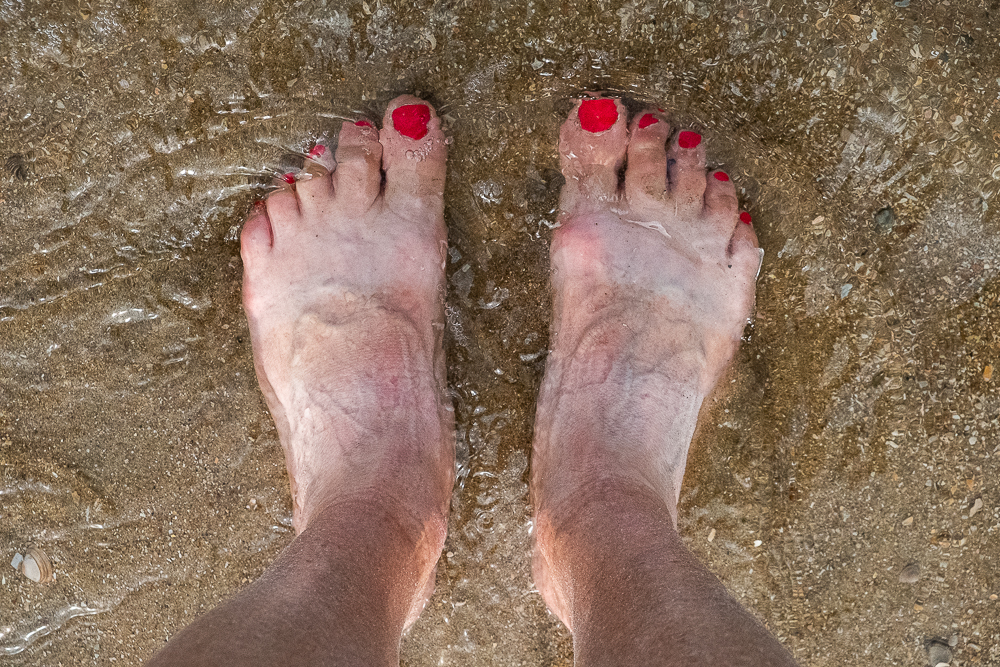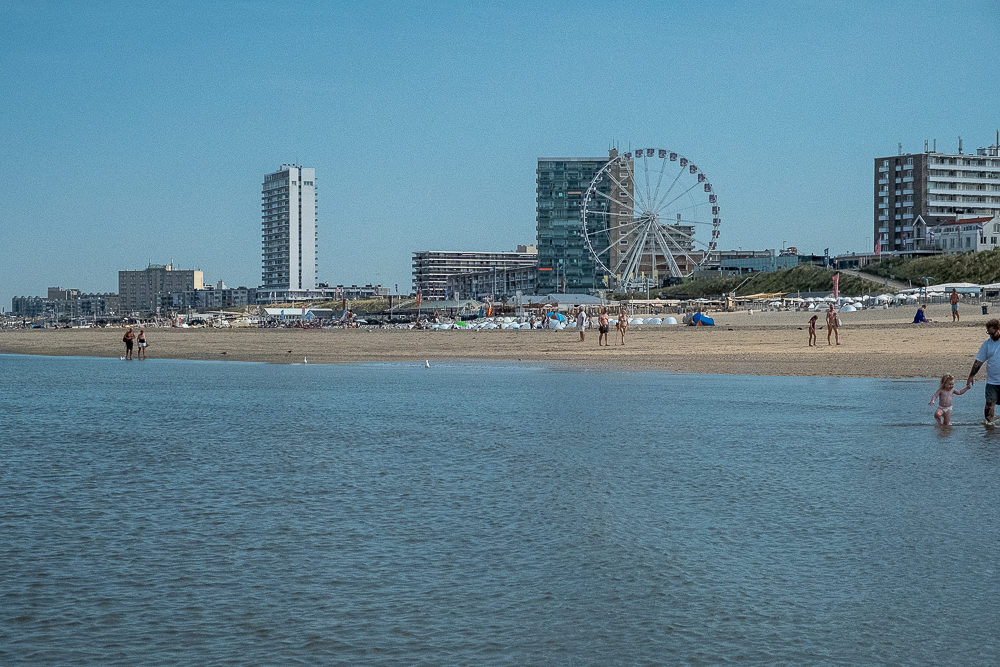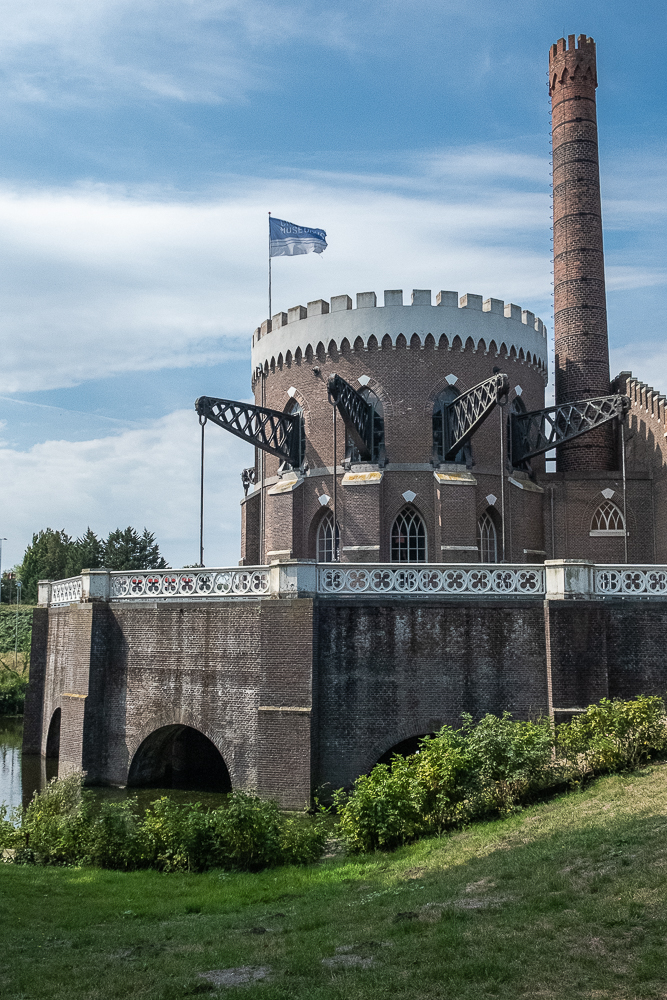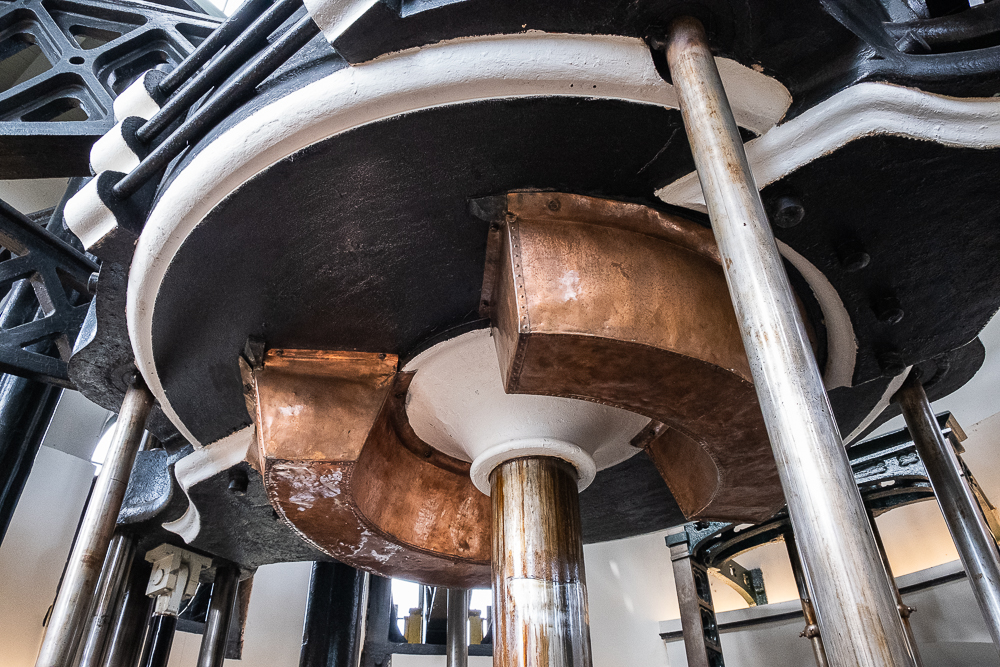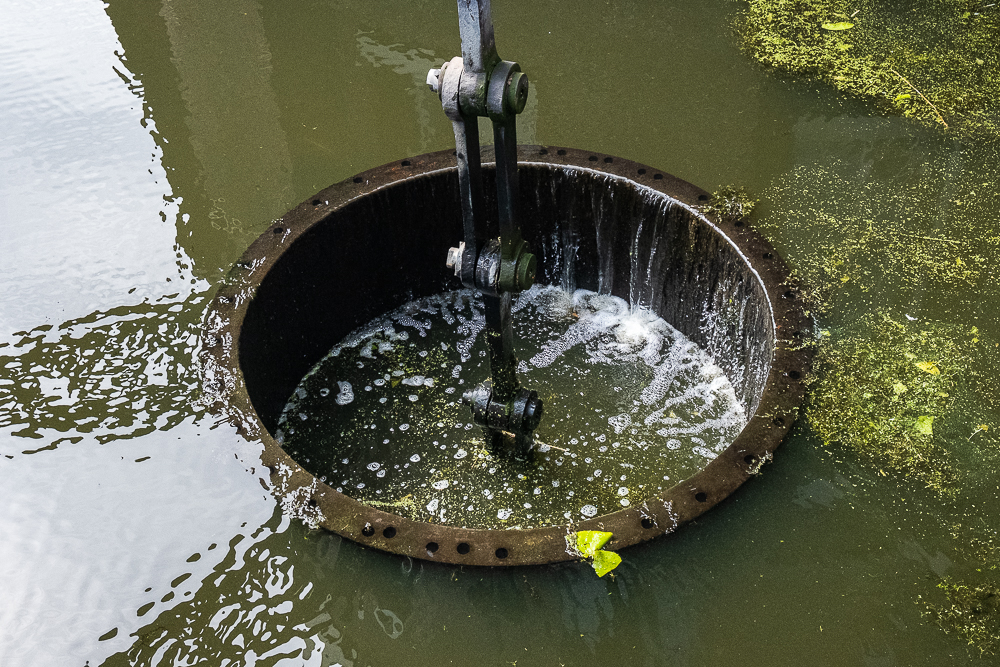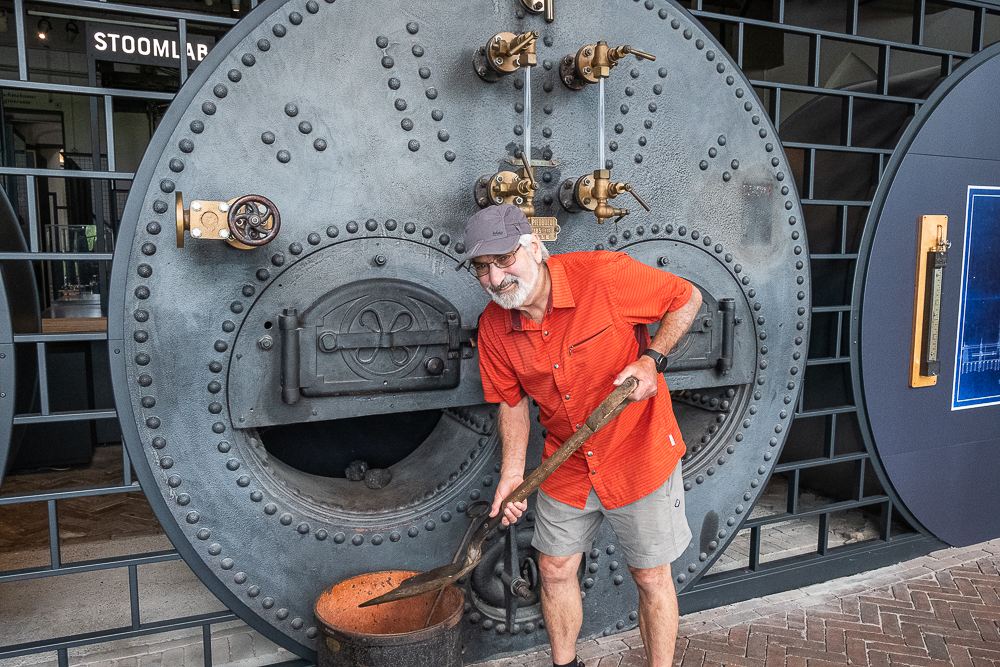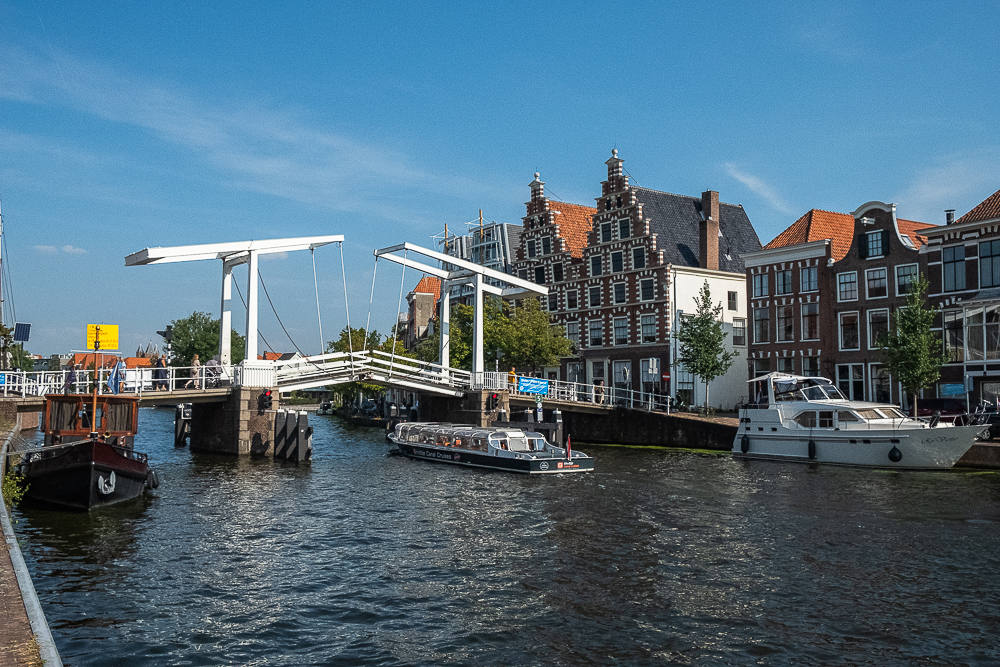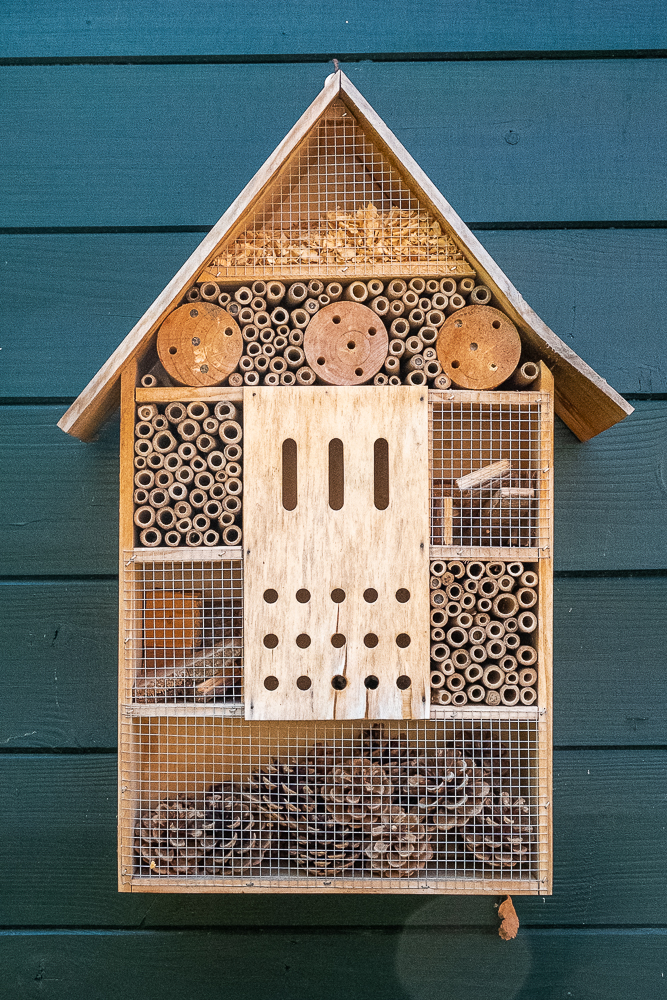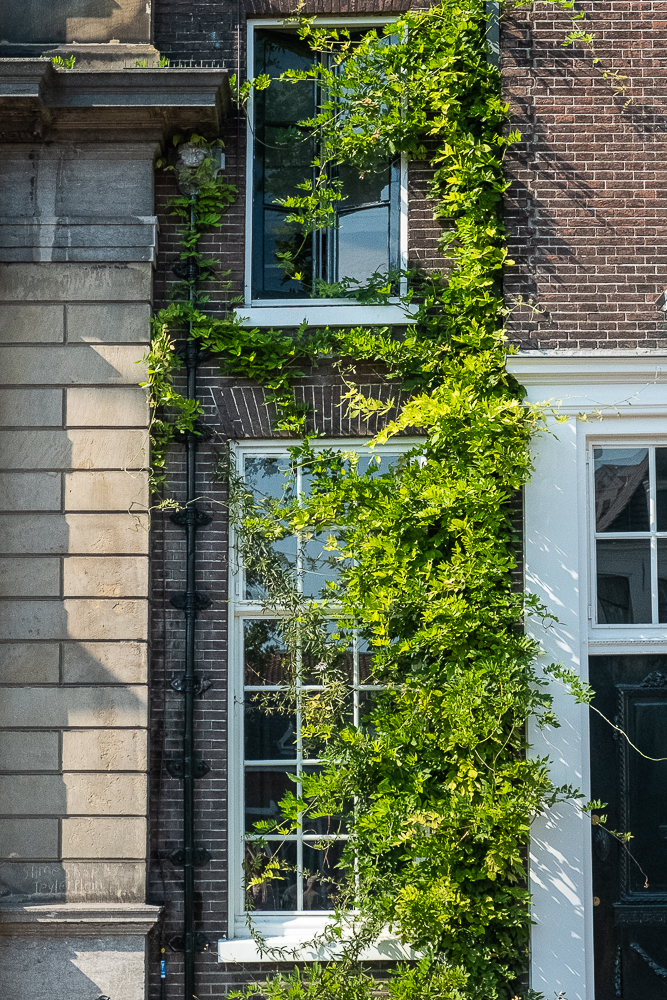After taking over 2,500 photos during my recent adventure to Germany, Holland, Luxembourg, and Belgium, I selected the following 40 photos as a “photography showcase.” Posted here without further comment! 🙂
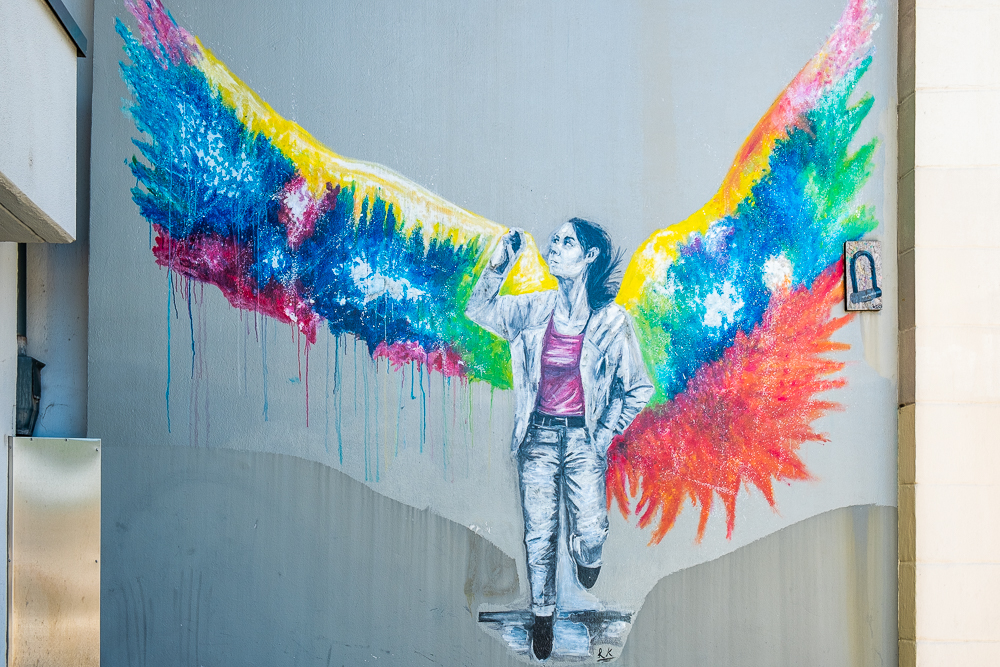


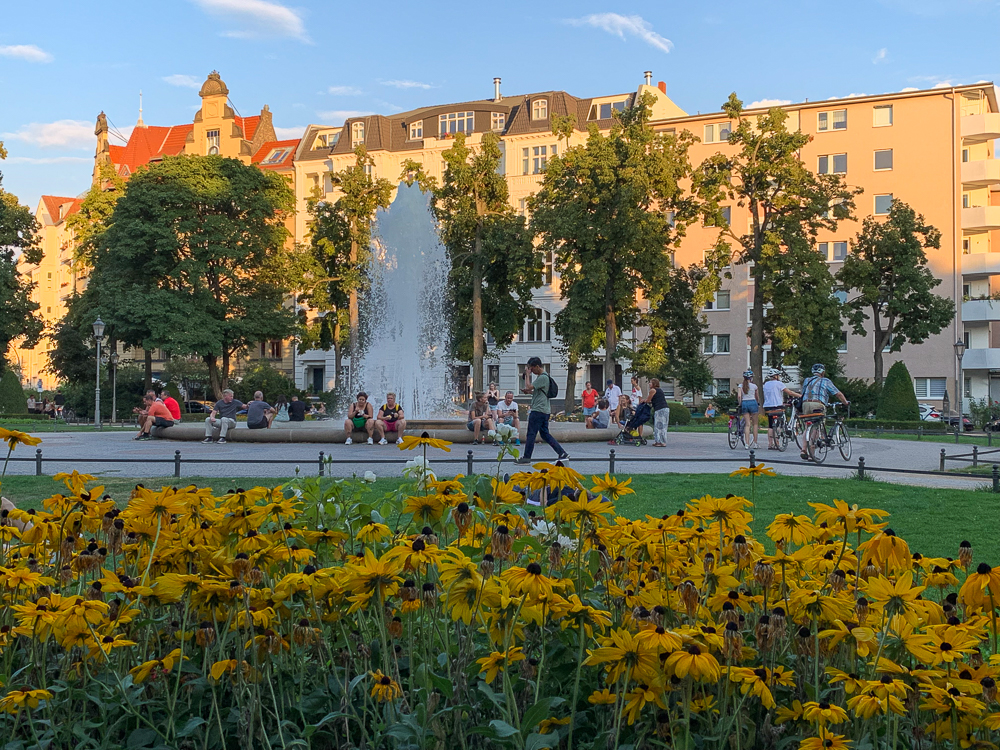
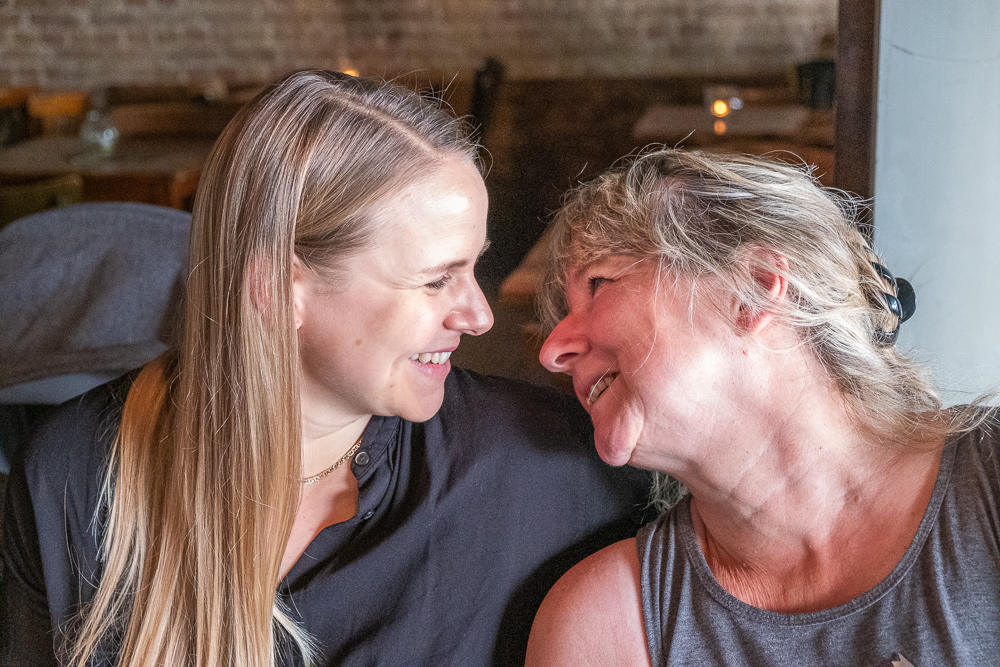
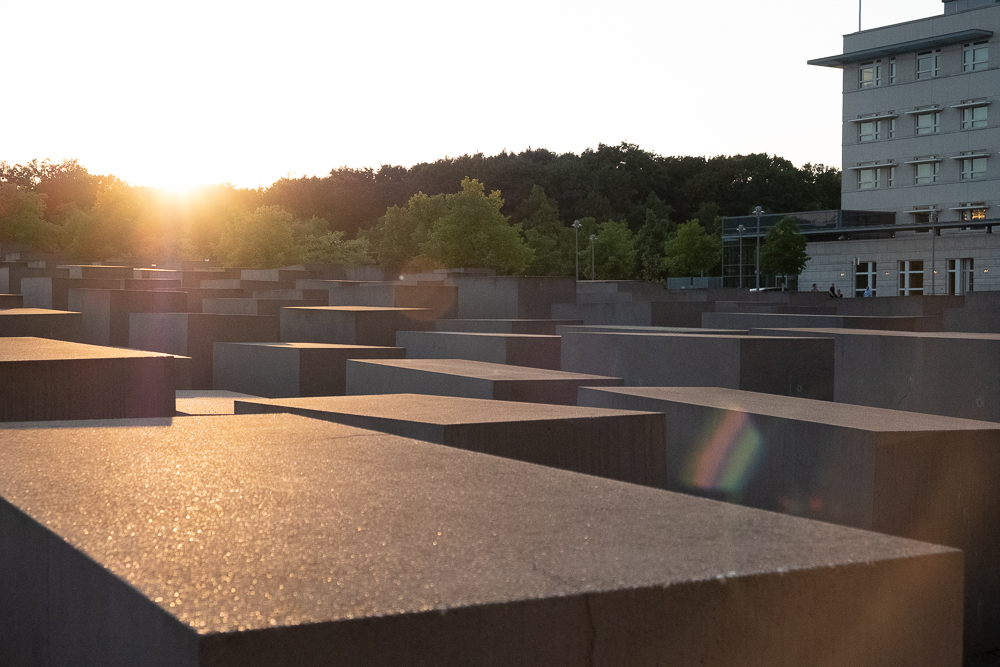
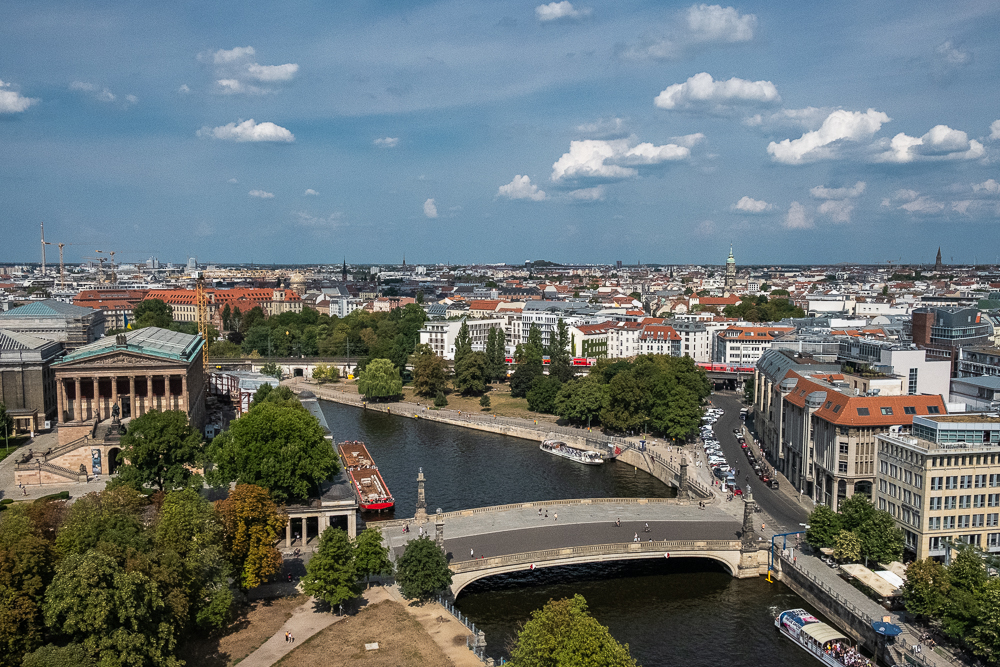
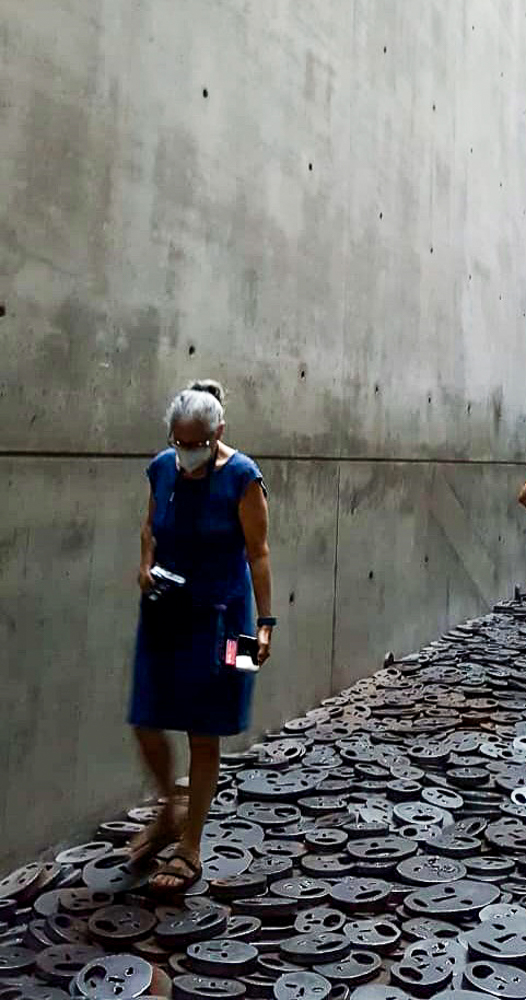
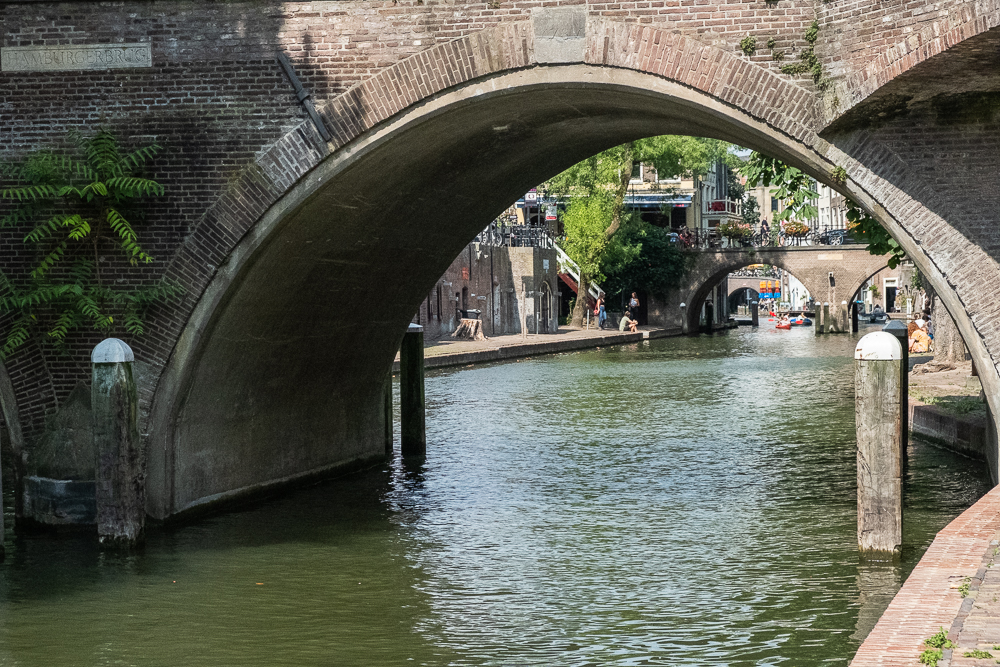
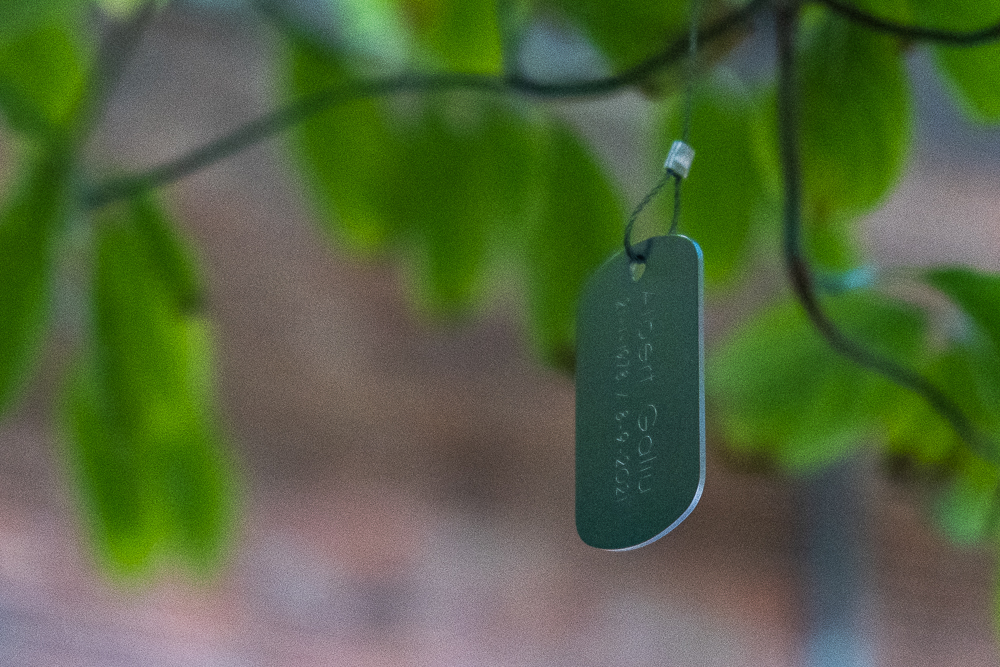
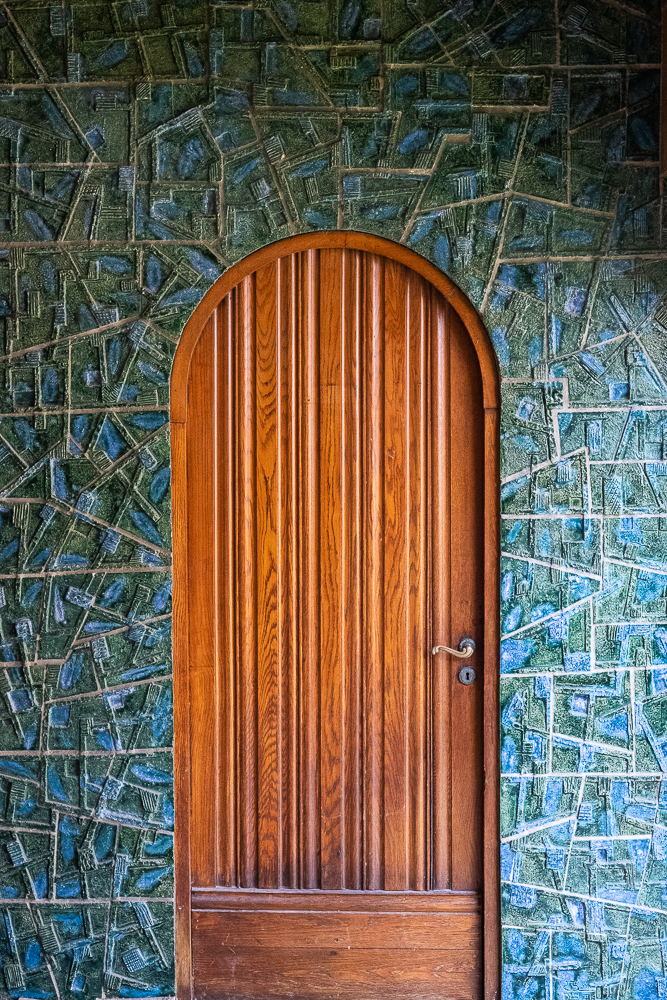

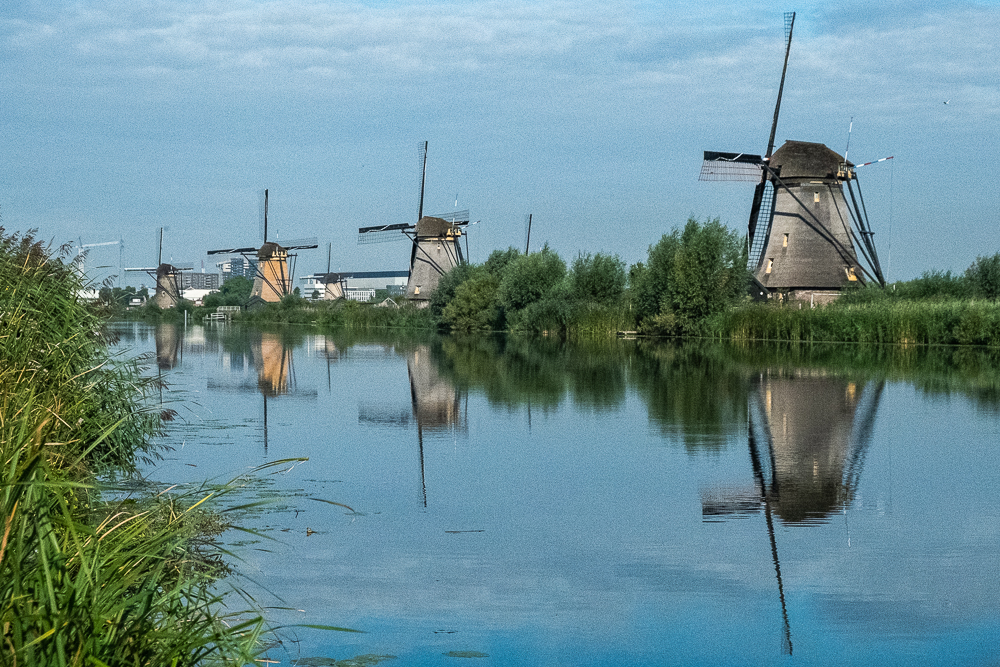
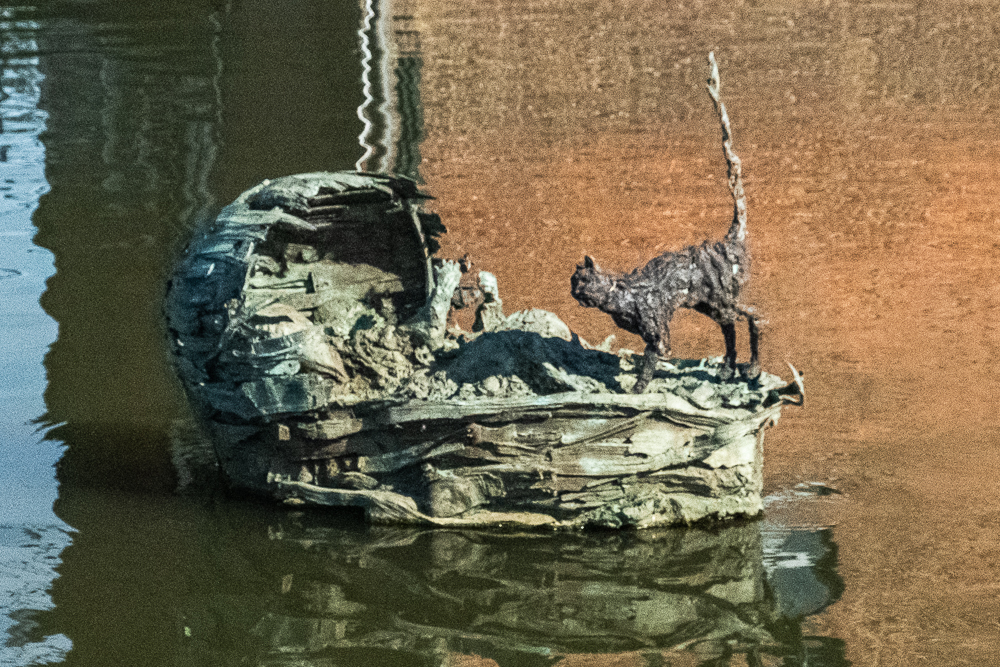
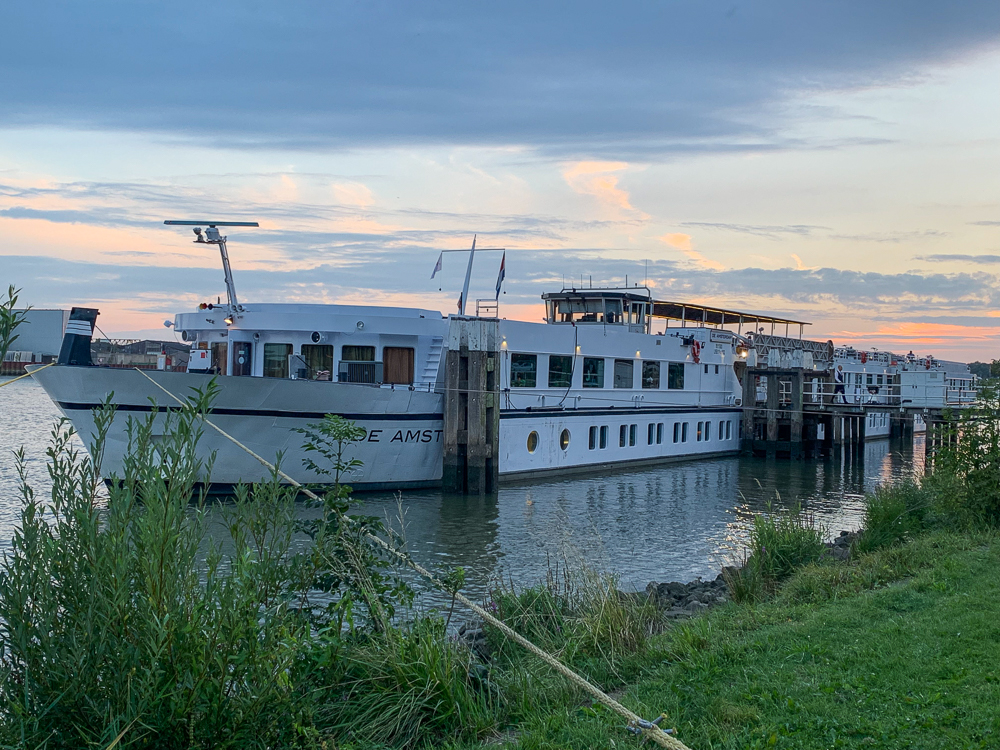
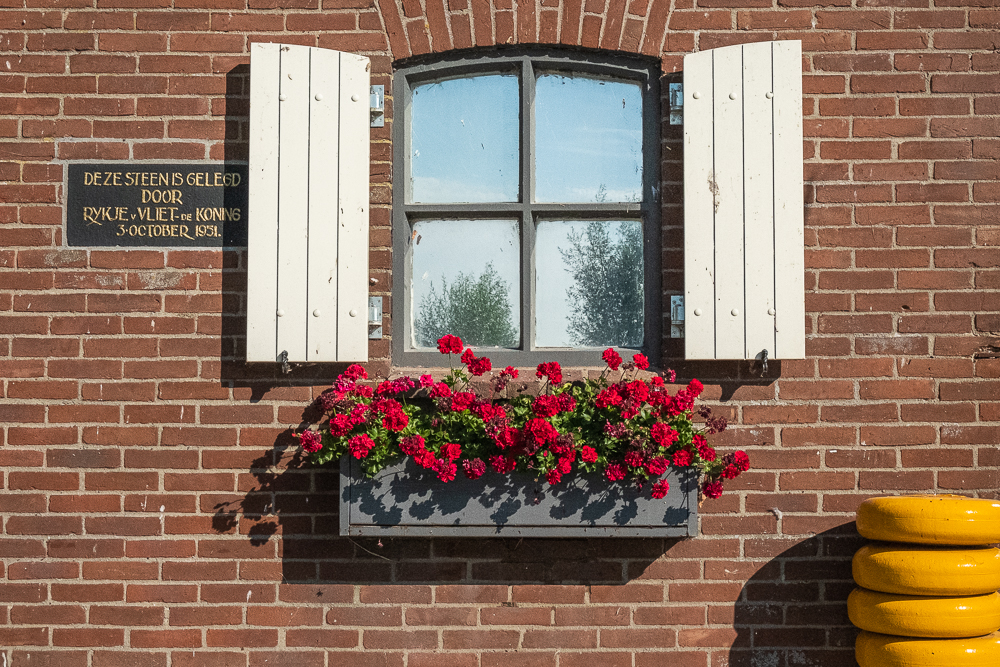
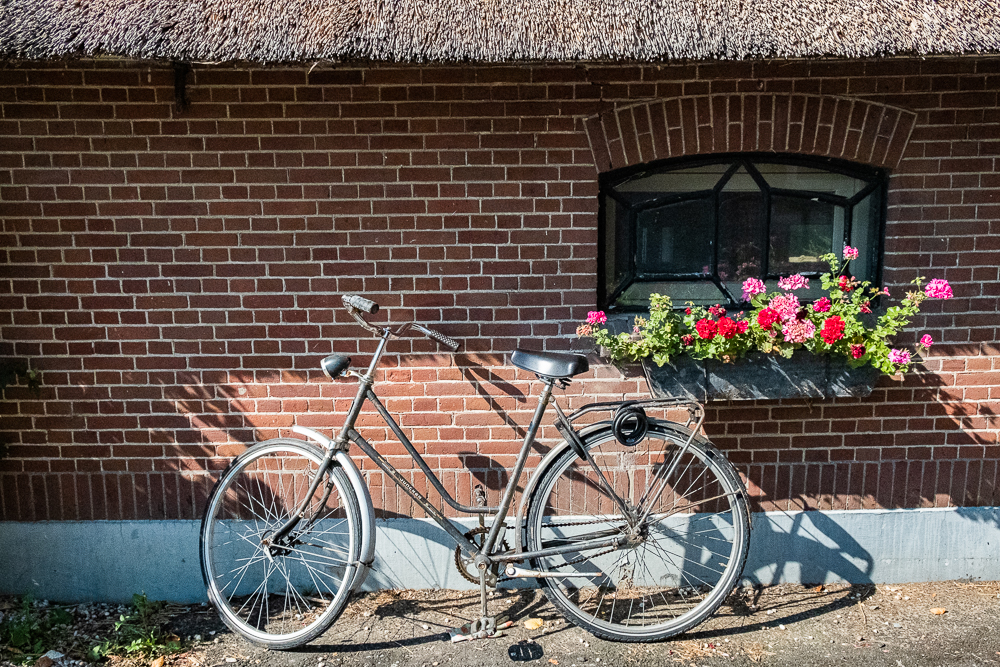
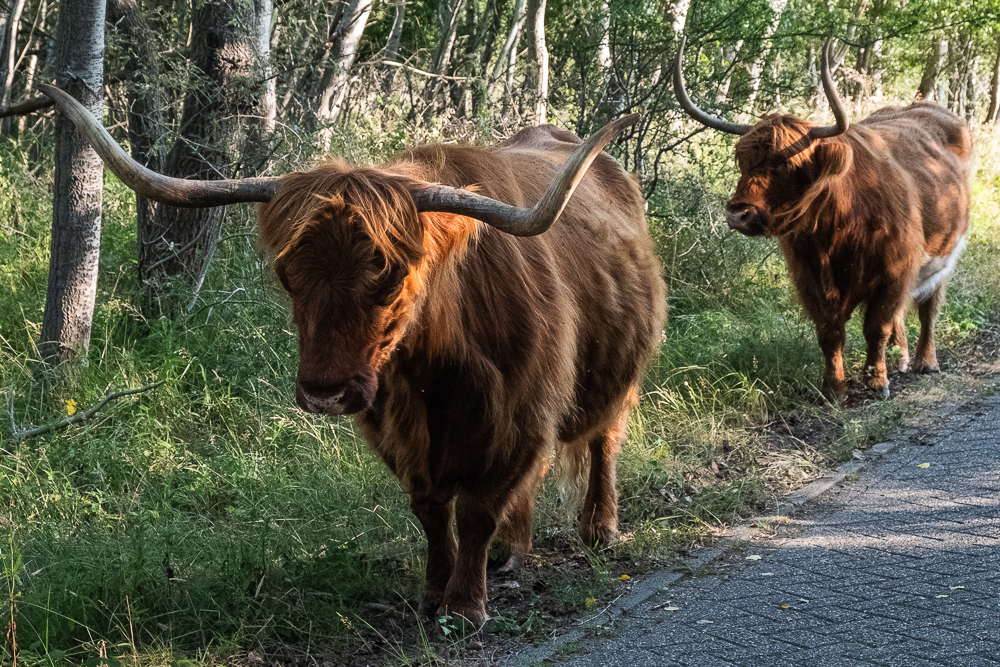


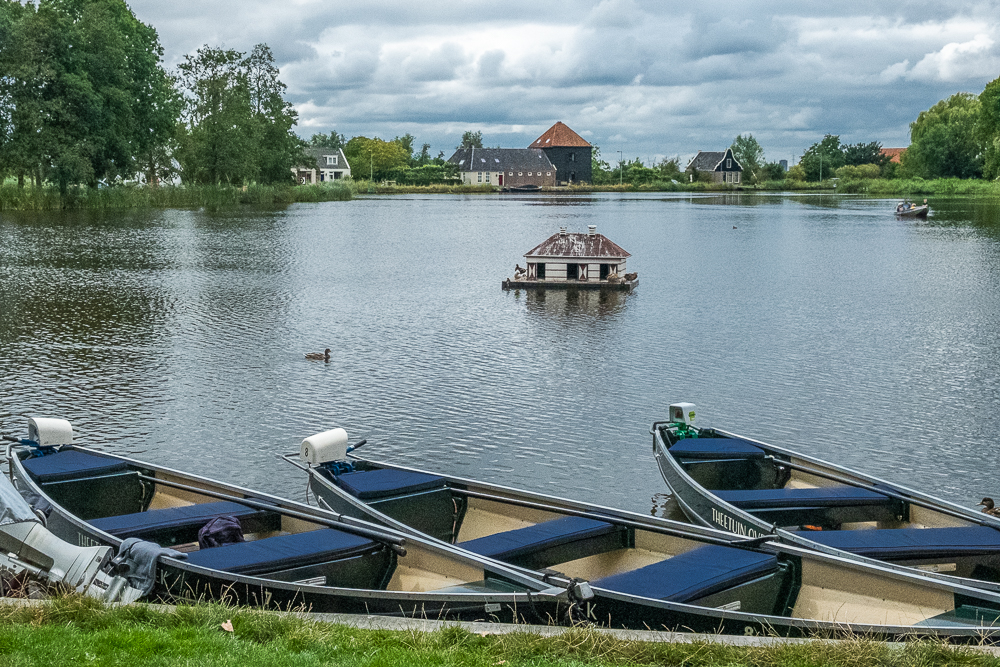



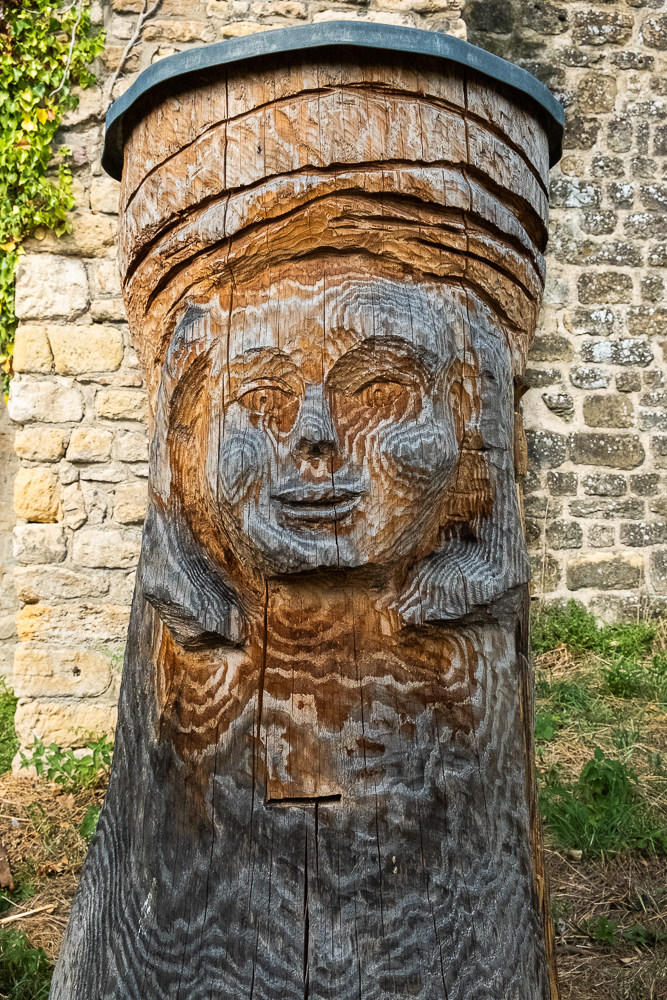
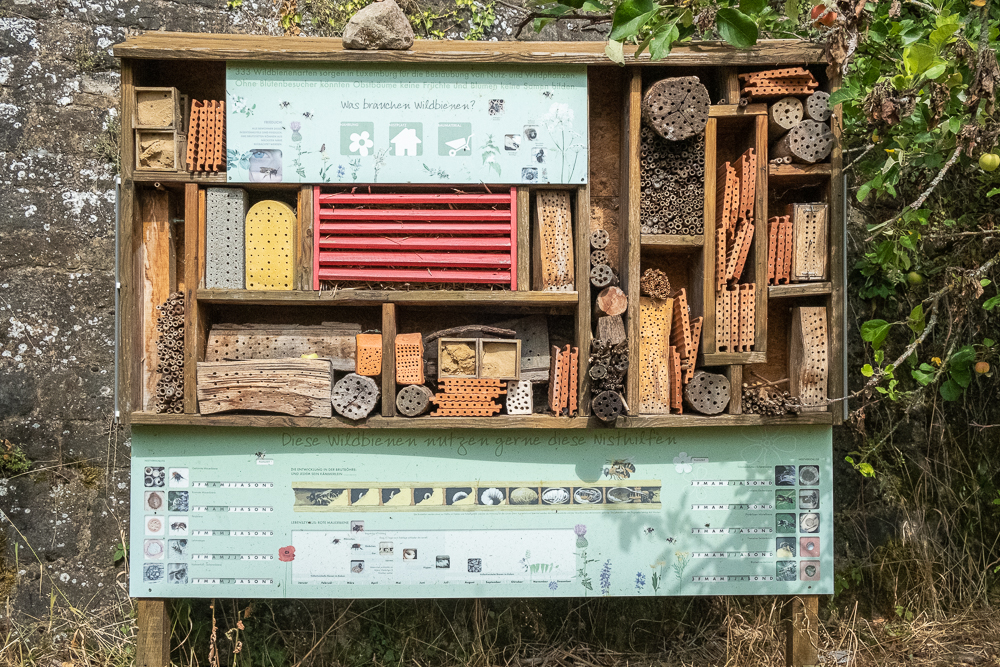
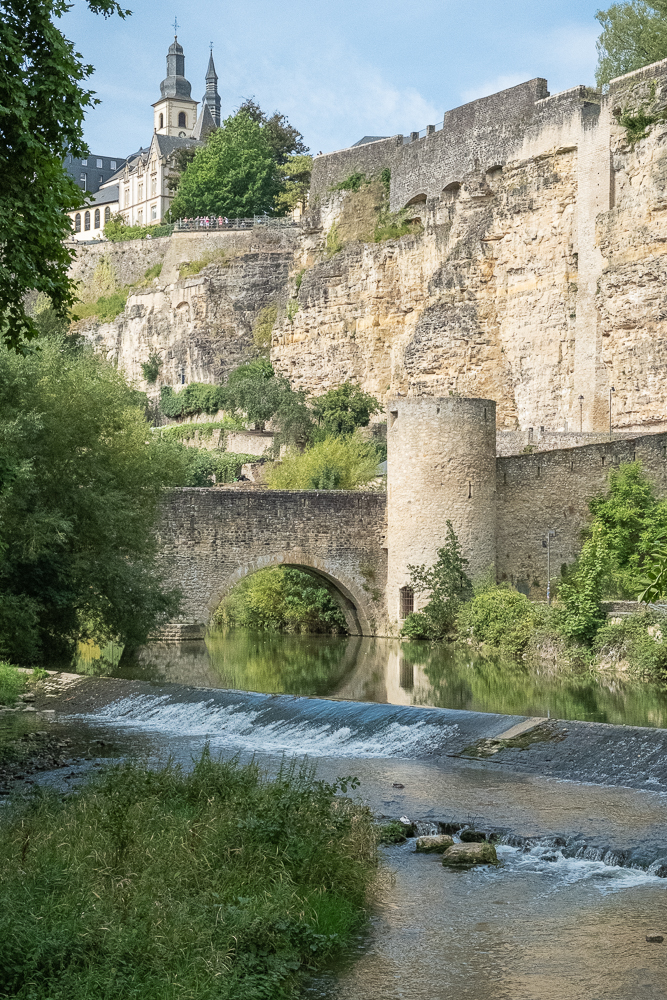
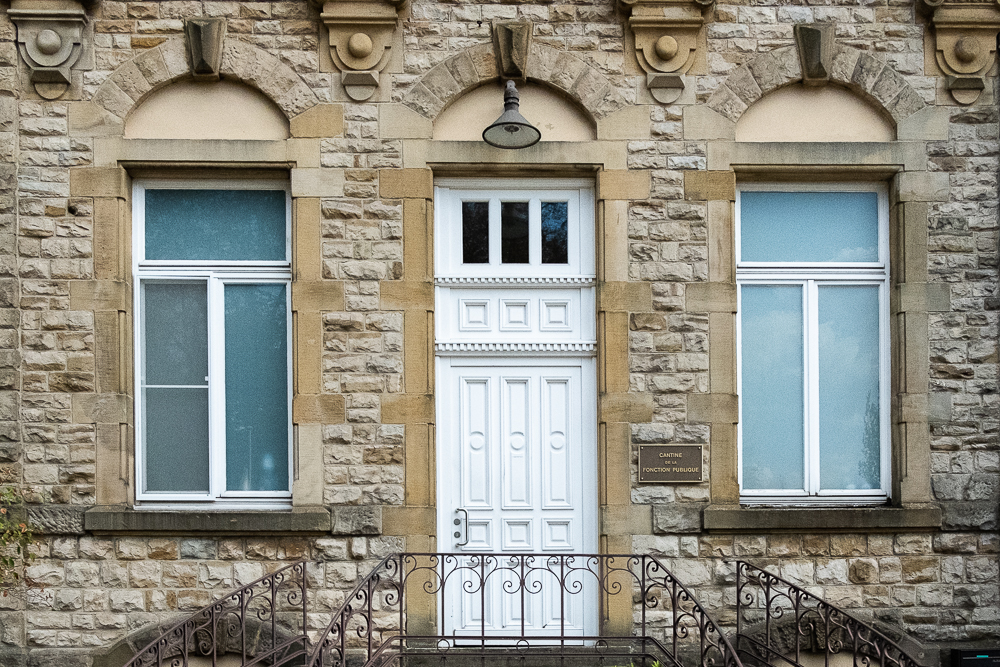

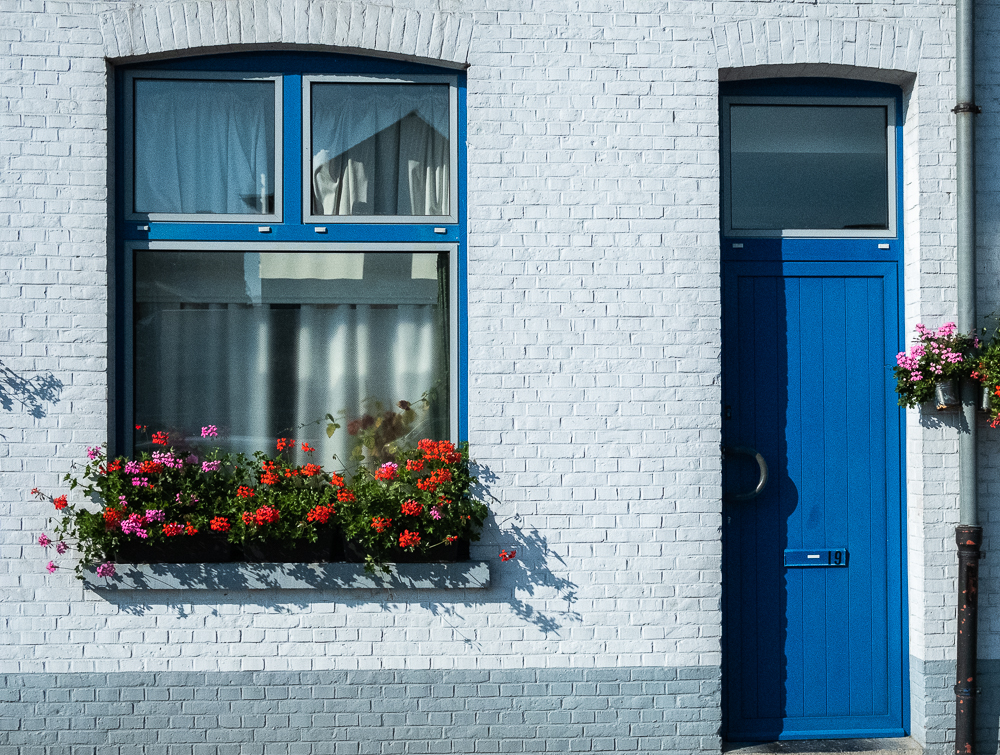
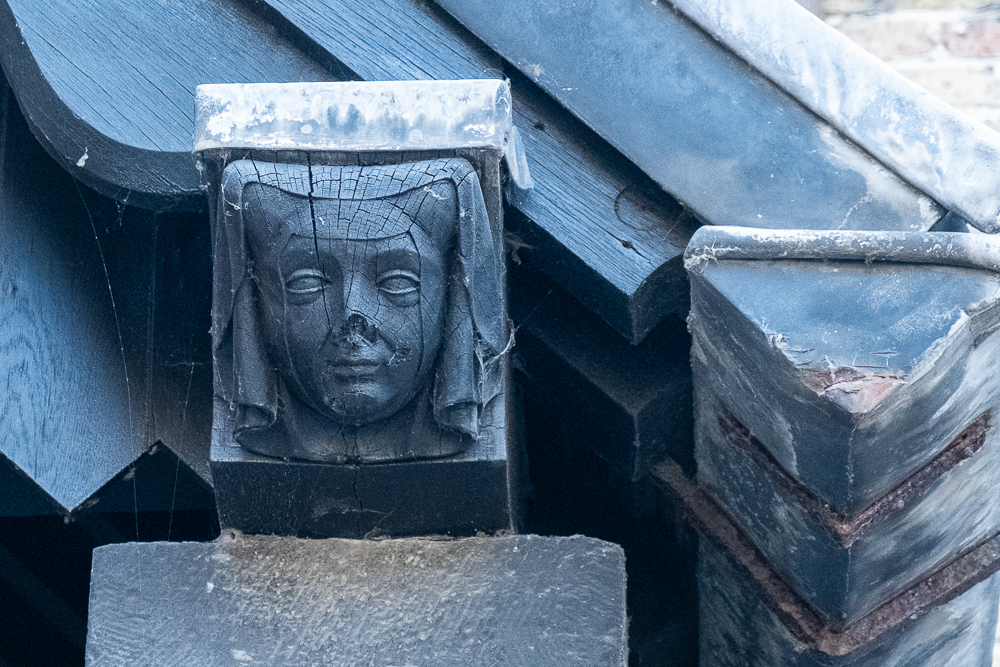

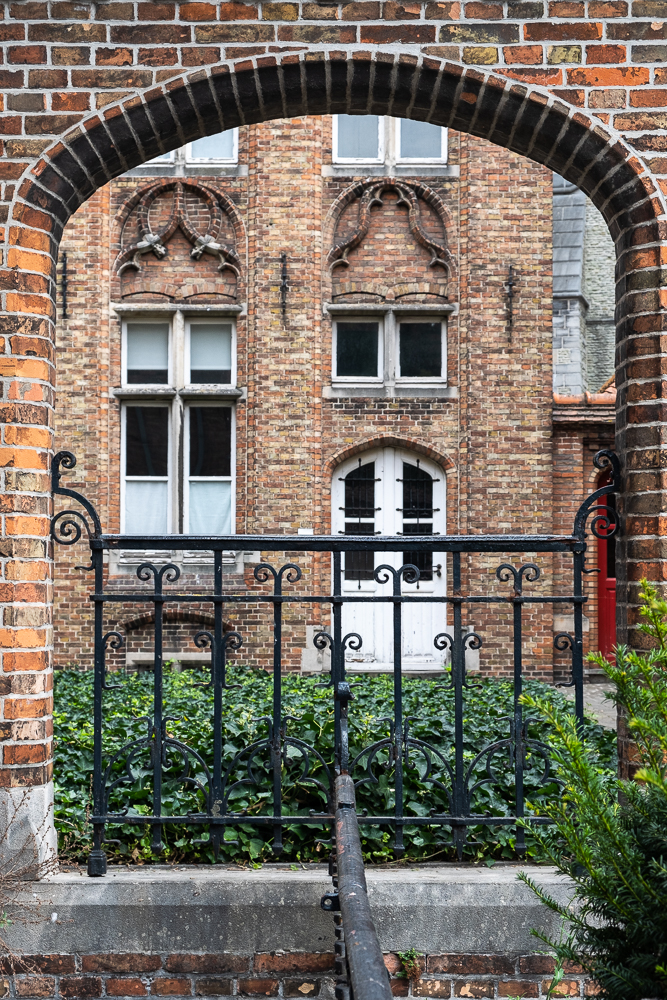


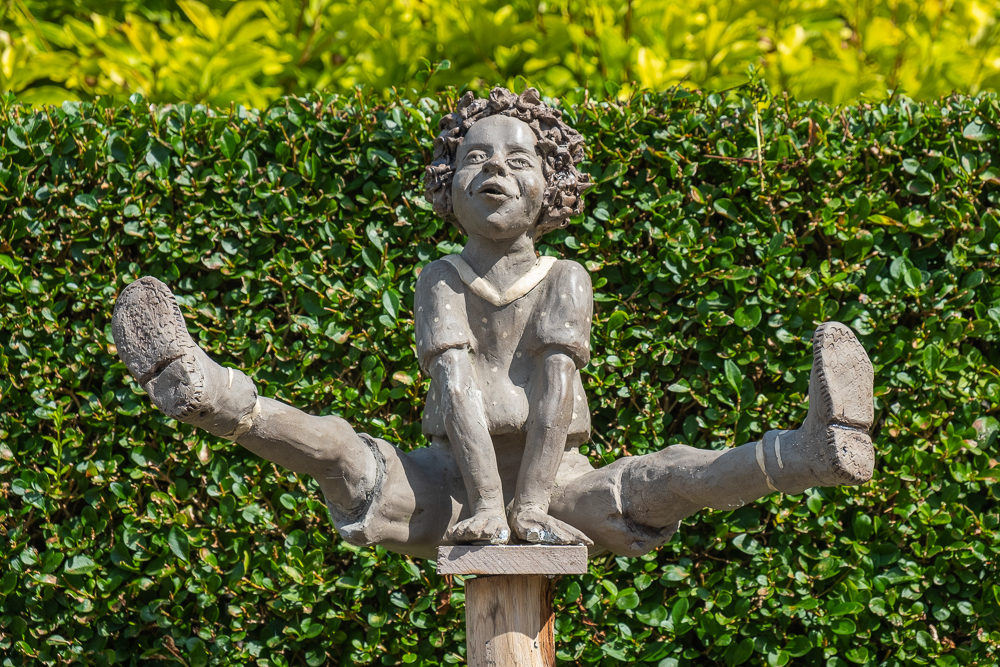
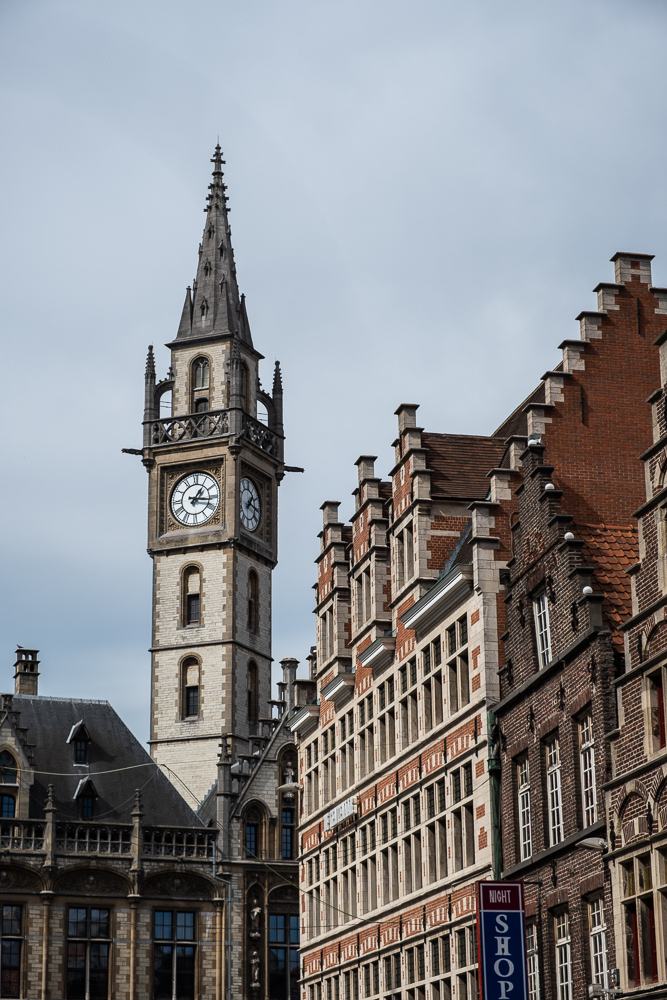
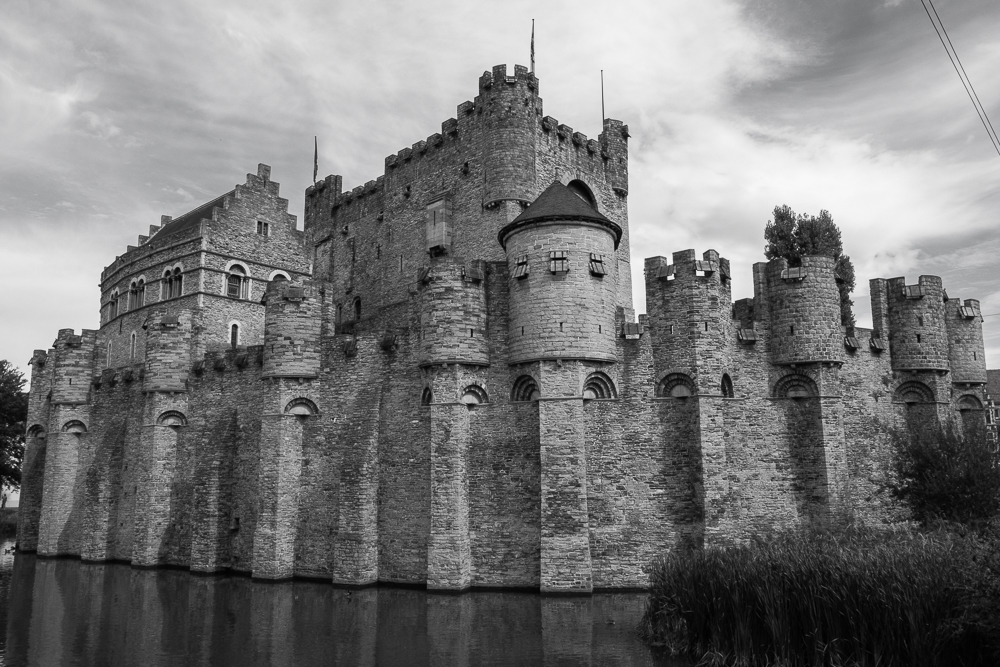
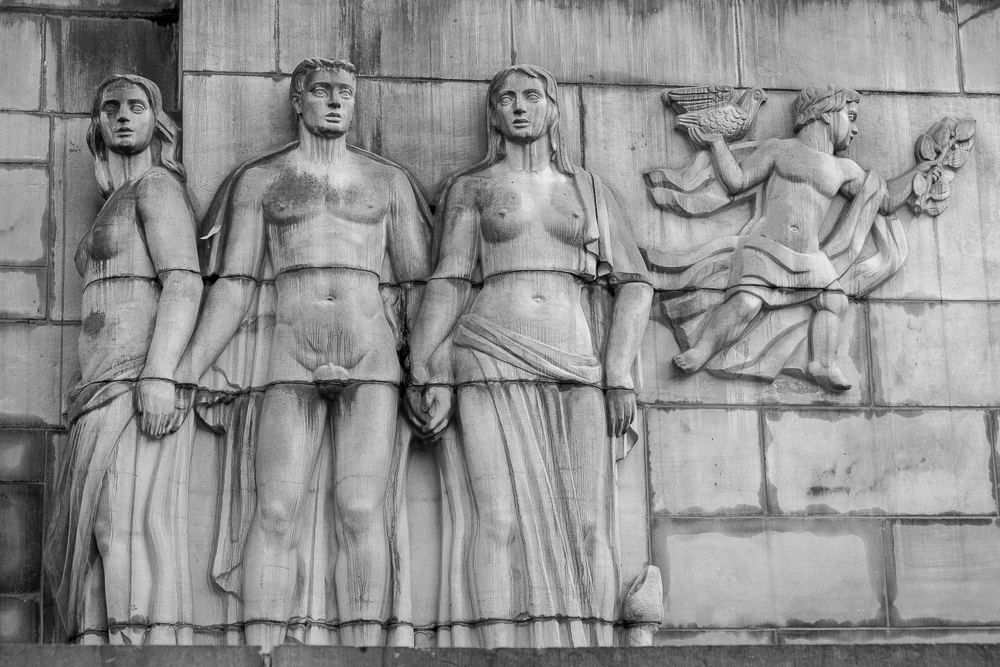

After taking over 2,500 photos during my recent adventure to Germany, Holland, Luxembourg, and Belgium, I selected the following 40 photos as a “photography showcase.” Posted here without further comment! 🙂








































C Plan: Before this trip began, I knew – being a bit experienced with travel – that I would need to be adaptable. In the world even before covid, flexibility was key to enjoyable travel. Joel coined the term “Plan C” for traveling nowadays. My interpretation of Plan C revolves around planning for Covid, Climate, and Conveyances. This has definitely been a Plan C experience! Covid: Although I did not (as of writing this!) get Covid this trip, Astrid did. This meant flexibility on the part of her cousins and me while in Germany, so Astrid could recover. It also means that she and I must return – together – to Germany! Climate changed Joel’s and my barge&bike trip from exploring the Mosel and Saar rivers to meandering through South Holland and spending a couple of days in Amsterdam. I used many Conveyances this month: trains, planes, automobiles, buses, trams, barge, bikes, feet! Plan C for Conveyances resulted in two major changes: a different barge&bike trip; and a train strike in Amsterdam, necessitating a very long bus travel day.
Components: This trip had three components: Germany with Astrid and her cousins, the Netherlands with Joel, and solo travel in Luxembourg and Belgian. All three components exceeded my expectations, even with the necessary Plan C adjustments. As previously mentioned, although I missed having Astrid show me Germany, her cousins Jutta and Barbara did an amazing job sharing their country with me and allowing me to see Germany through their eyes. Cycling, on my e-bike, in the Dutch countryside, along canals, and on dikes with Joel coupled with the luxury of barge cruising make me excited for another boat and bike trip. Solo traveling – or “squirrel traveling” as I call it – presents unique challenges and opportunities. I enjoyed this component of my trip, especially the squirrels that delighted me – meeting and hanging out with interesting people.
Christine and Daniel: For the first two components of this month-long European adventure, I didn’t have to make any lodging decisions entirely on my own. For the third component, it was all on me. In Luxembourg, I stayed at a hotel…which seemed more like a dorm room. In Brussels, my AirBnB was comfortable yet on the third and fourth floors of an 1800s building without air conditioning – meaning it was HOT at night. Also, it was very noisy since I was in the city center with bars and restaurants right under my open windows. The owner was nice, but I met her only once. In Bruges, however, I stayed at Christine and Daniel’s B&B Stoega, my favorite lodging! As I mentioned in earlier posts, Christine and Daniel are phenomenal PEOPLE, not just great hosts. I know opening their home to guests is a type of business, and it felt more like staying with friends than being a paying customer. They are warm, helpful, kind, intelligent, talented… I could go on and on! I repeat what I’ve said before: WHEN you’re in Bruges, I STRONGLY suggest you stay with Christine and Daniel at B&B Stoega. I look forward to keeping in touch with them and, hopefully, seeing them in California soon.
Conversations: This is why I travel!!! Yes, I love seeing new places, architecture, sculptures, gardens, museums, etc. Even more, though, I love talking to PEOPLE. I had so many engaging and enlightening conversations this trip. Jutta and Barbara, along with their husbands Hans-Juergen and Hermann Josef, helped me better understand Germany – not only the history of the Holocaust and the division of Germany and Berlin into East and West but also the modern country. My table companions on the barge were fun, kind, and interesting. In Bruges, I had a fabulous time sharing meals, sites, and conversations with Janet and Geerte – and, of course, I loved chatting with Daniel and Christine! I had a surprisingly fun time in Brussels hanging out with Steve and his pied piper group of travelers. Steve, a 41-year old married Australian man with three children, gathers people together whenever he travels. With his wife and kids in Germany visiting her family, he was solo in Brussels and joined my free walking tour. When the tour ended, he said whoever wants to get a beer and fries, follow him. About a dozen of us did – and revelry and chats ensued. Steve said he does this whenever he travels – he gathers people from tours, hostels, etc. – and creates an opportunity for everyone to socialize and talk. He said he feels this is what travel is really about: talking to a range of people. I completely agree!
Crowds vs. Value of Tourism: Okay, I get it. For many countries or communities, tourism adds significantly to their economies. Hey, I’m from San Luis Obispo where tourism helps our coffers. The challenge, though, is balancing the benefits of tourism with an overabundance of tourists. Especially following the lockdowns necessitated by the pandemic, I understand the urge to travel – the travel bug bites me, too! Nonetheless, I don’t enjoy crowds. For example in Bruges, where I stayed for four days, the first couple of days had minimal crowds. Then, the weekend arrived and, along with it, throngs of people often from cruise ships. Good thing I enjoy long walks in the country to small villages because that’s exactly what I did to remove myself from the hordes of tourists.
Cobblestones: I know cobblestones add ambience and help a city seem quaint. I love how they look and how they make me feel when wandering streets and alleys. However, walking on uneven stones or pulling a rolling suitcase going bumpity-bump can be a bit cumbersome and annoying. For some people who have turned an ankle (not me!) while walking on cobblestone, they can even be dangerous.
Cornering: Using a thesaurus, I tried to find a “C” word as a synonym for “aging.” Since I couldn’t find one, I’m using the word “cornering” instead. I feel like I’m turning the corner from young vibrant traveler to a bit older traveler. I like some of the comforts my age and privilege provide, such as barge travel and not counting every penny. (I remember my year in Israel… I had a journal and, in the back, kept track down of every cent I spent!) I also am, I would say, 5% slower than I was in 2019 BC (Before Covid). It takes me a bit longer to figure things out, to get moving, to find my groove. By my calculations, 5% per year would mean in 20 years, when I’m 82, I’ll have completely slowed down. I guess that’s okay!
Coin Purse: I’m sure it could have happened to me earlier before I “cornered” a bit as a traveler, but losing my focus causing me to forget my coin purse annoyed me. I could say it bummed me out, but although I’m not happy about the mishap, I’m not devastated. I hid my passport and extra credit cards in my luggage, so they weren’t lost. I wish I would have done the same with my cash… I use it so seldom… I should have kept, say, €50 in my purse and hid the remaining €100. Expensive lesson learned.
Conflicting Emotions: Whenever a trip ends, I have conflicting emotions. This trip is no different. I’m a bit tired and ready to be home. The stress of traveling, especially as I “corner,” tires me. I miss my family and friends. What will I do first? Hug Emmett, of course! I may even shower before I see him. 🤣 I love my home and my life at home. I look forward to relaxing in my own house, sleeping in my own bed, and spending time with my San Luis Obispo friends. Nonetheless, I love traveling! I love seeing new sites, exploring new locales, talking to new people! Another trip is on the horizon…after I recuperate from this one!




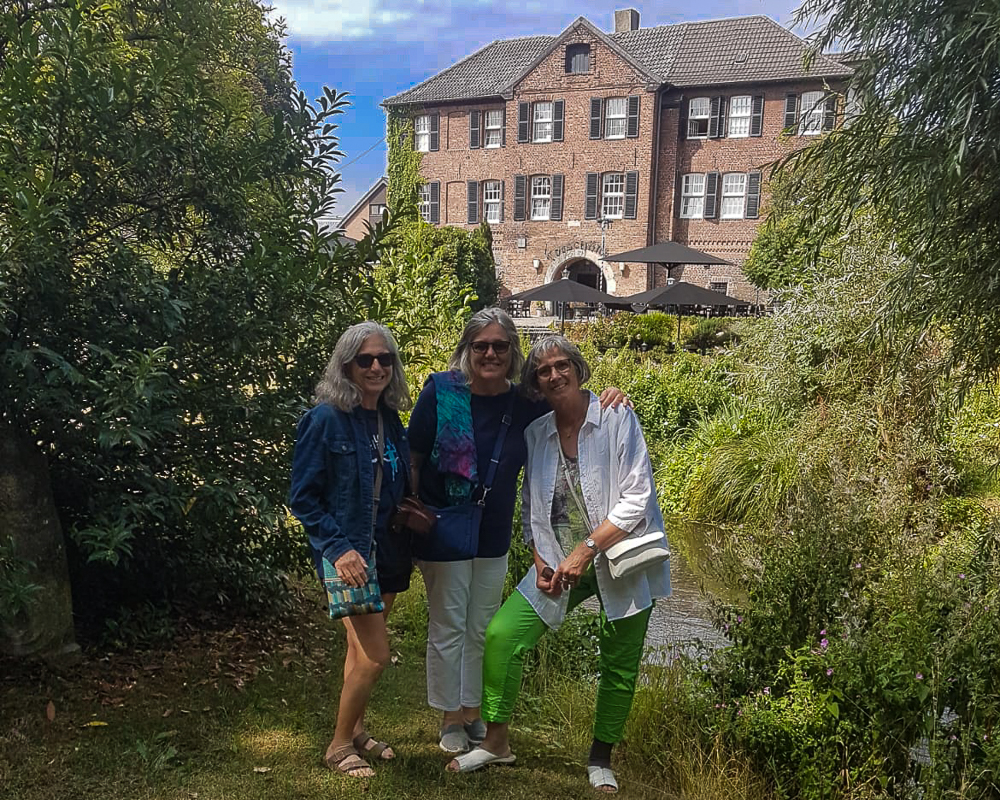

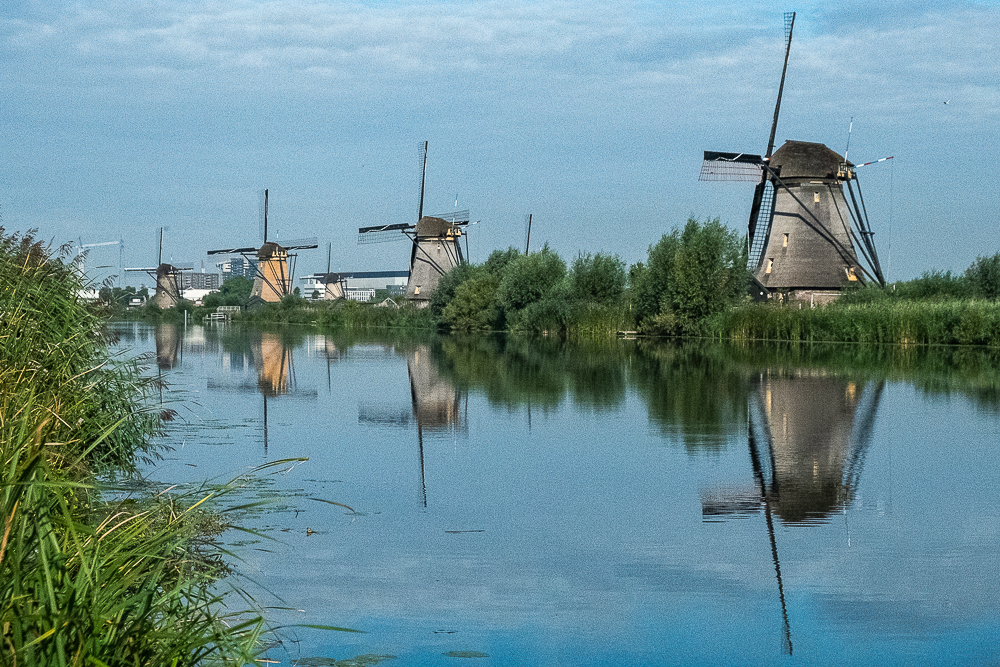



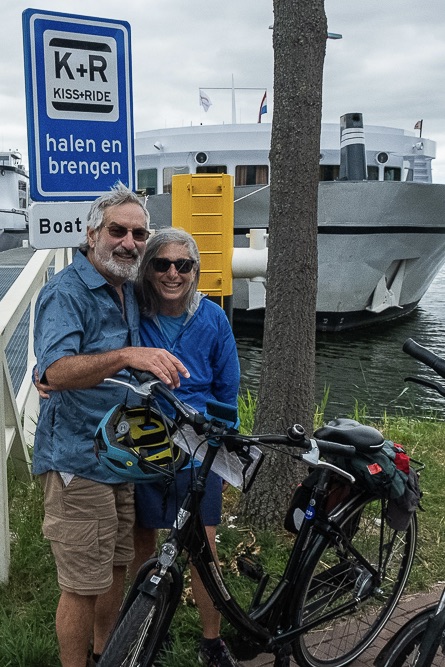



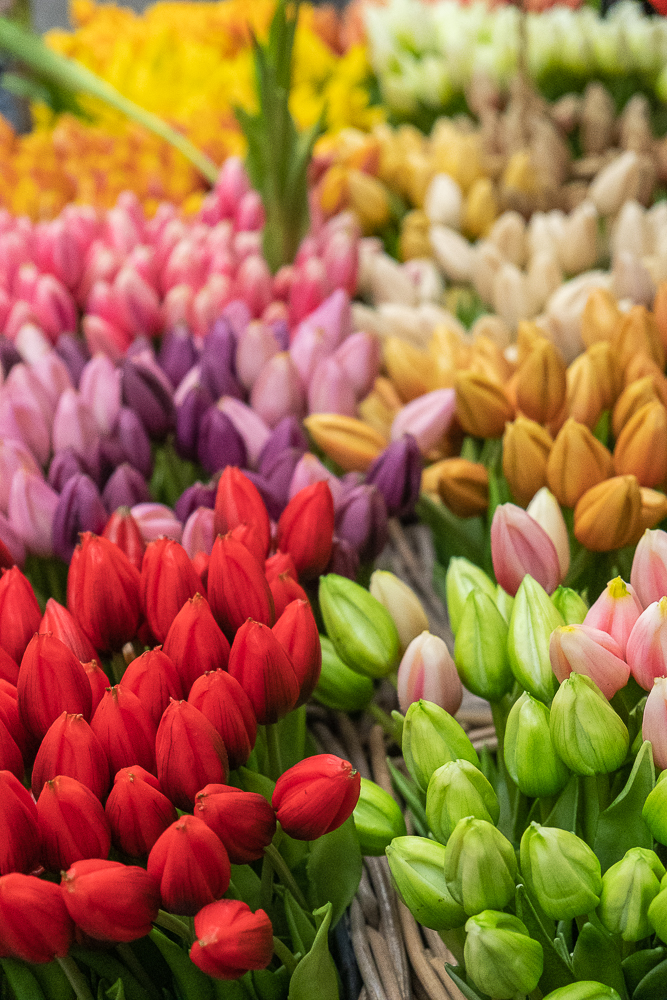



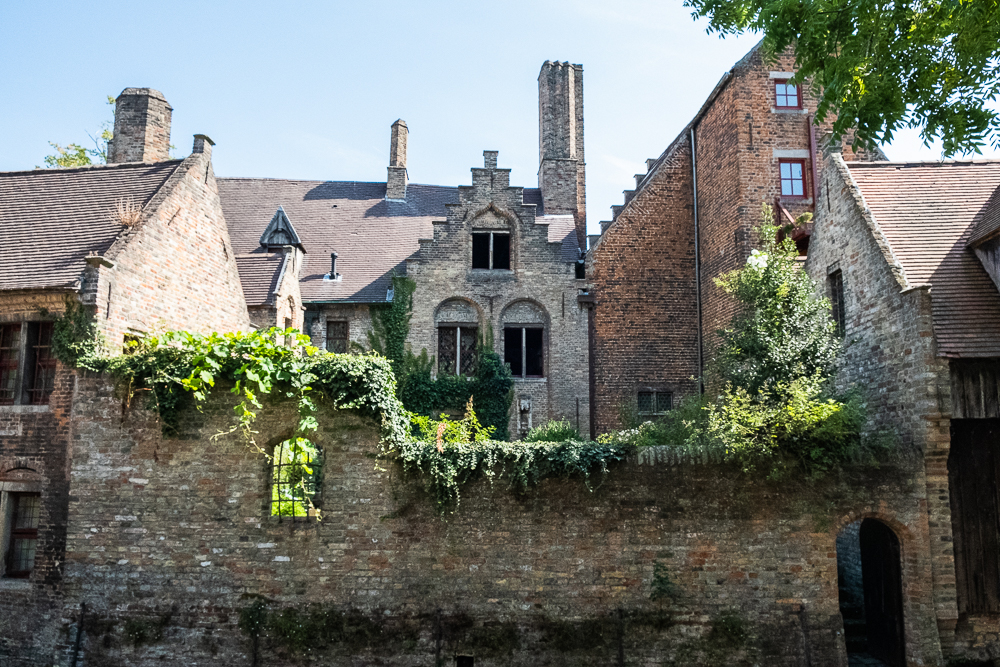
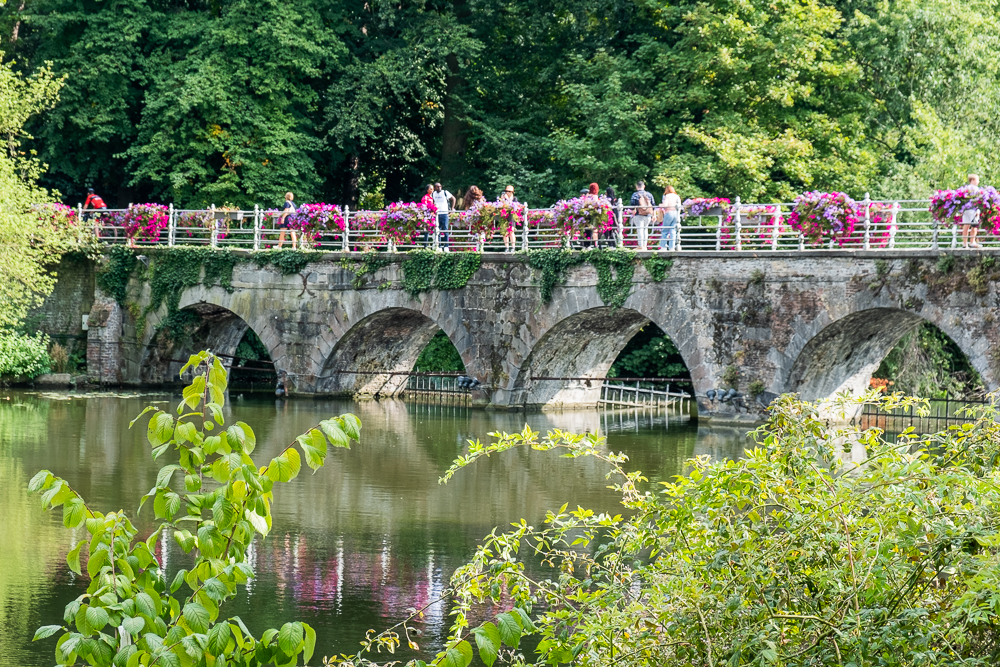
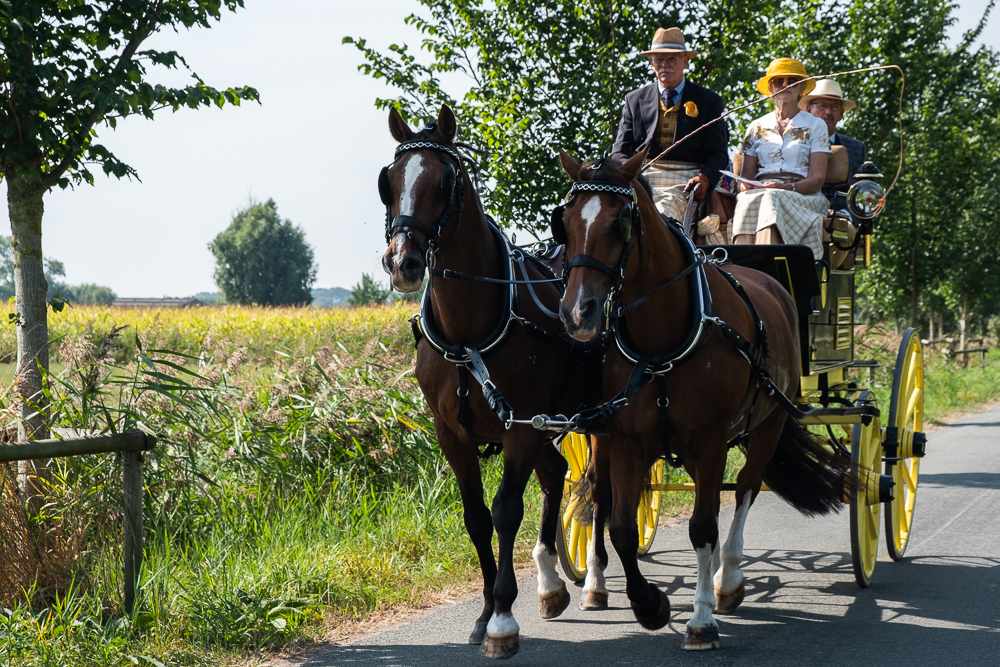
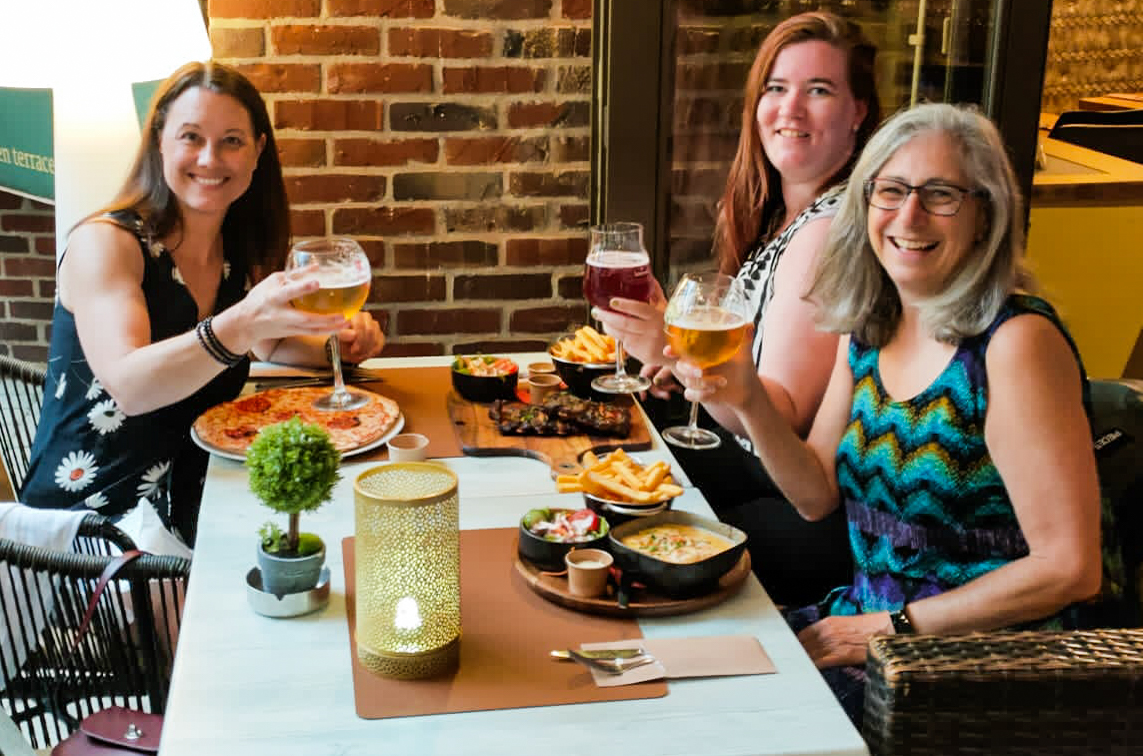
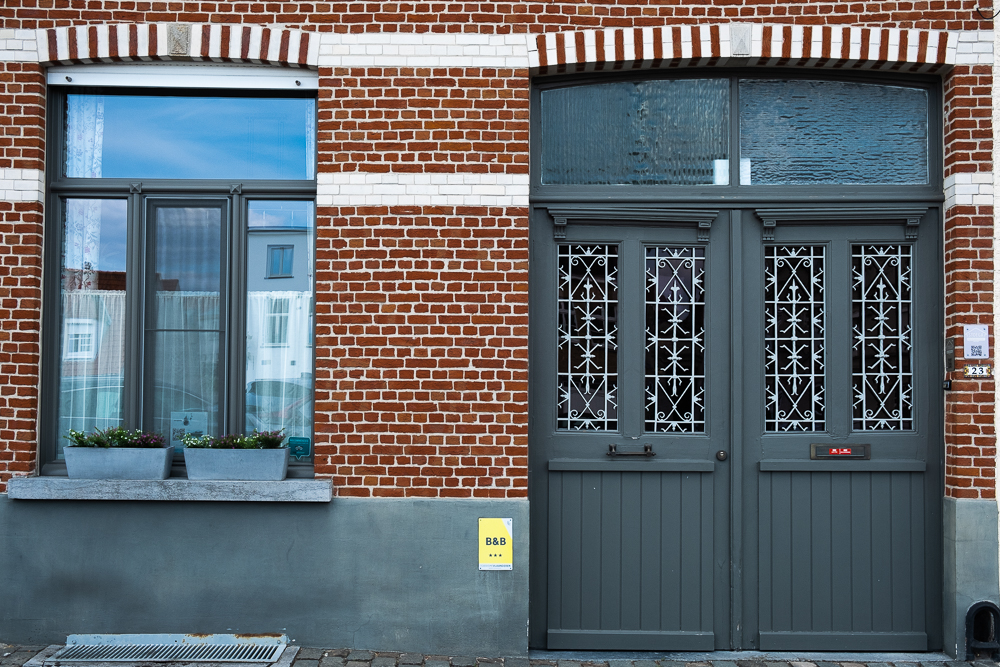
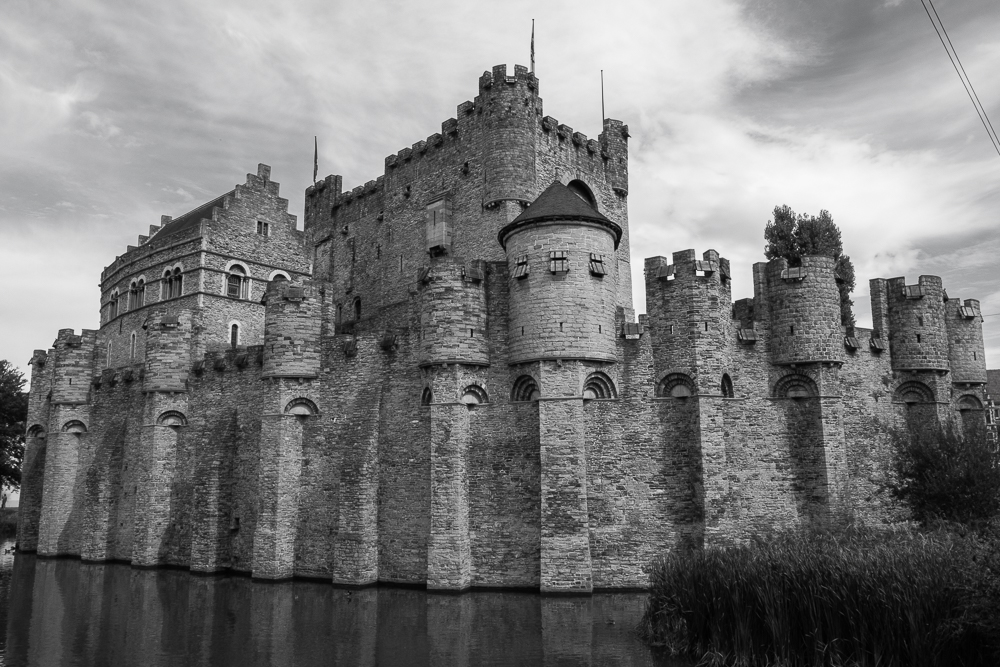
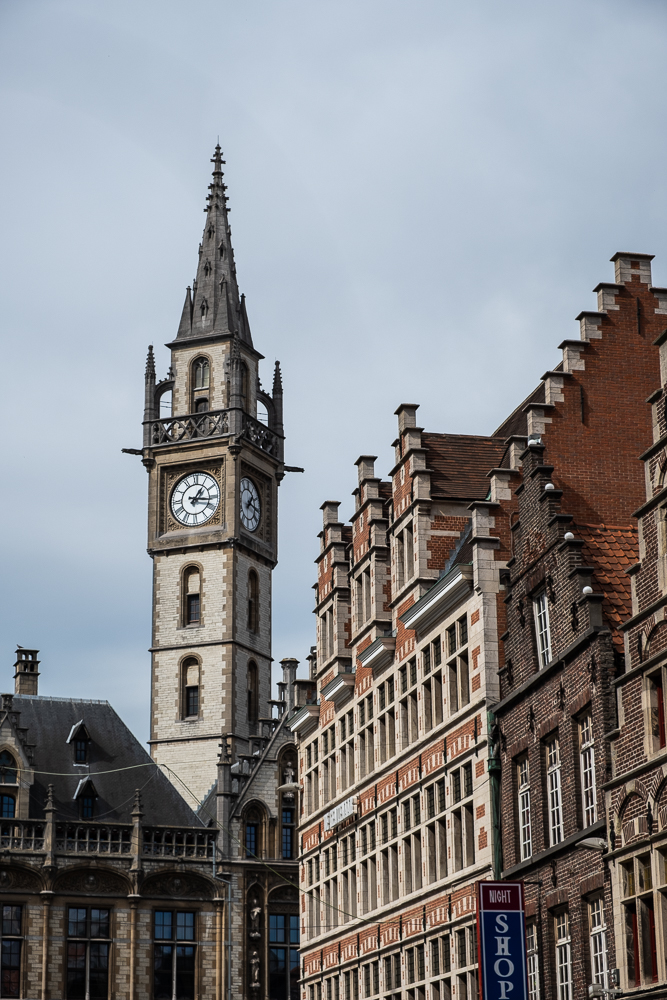
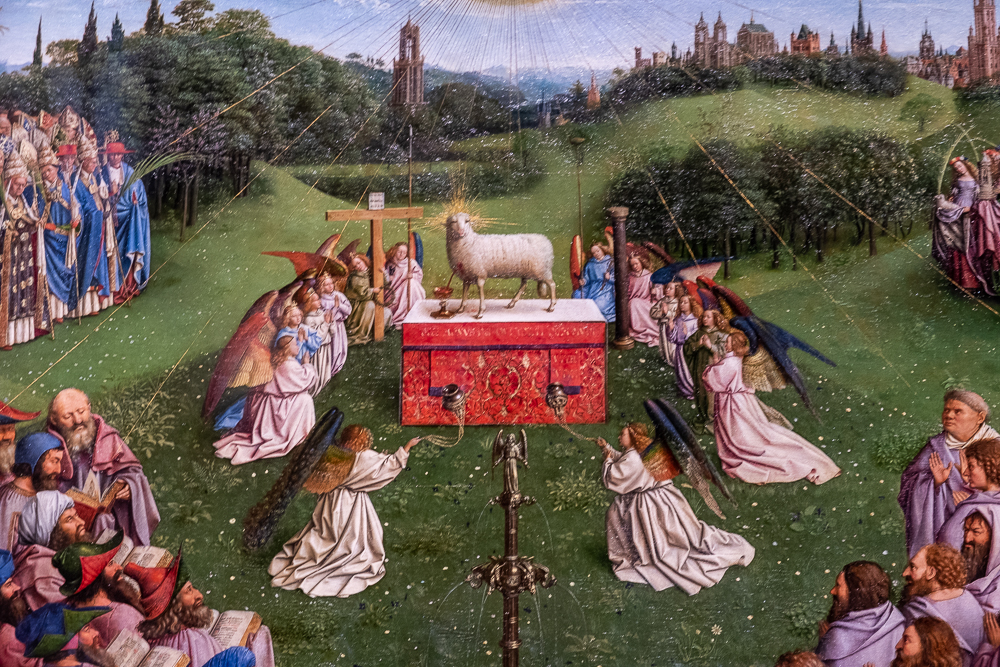


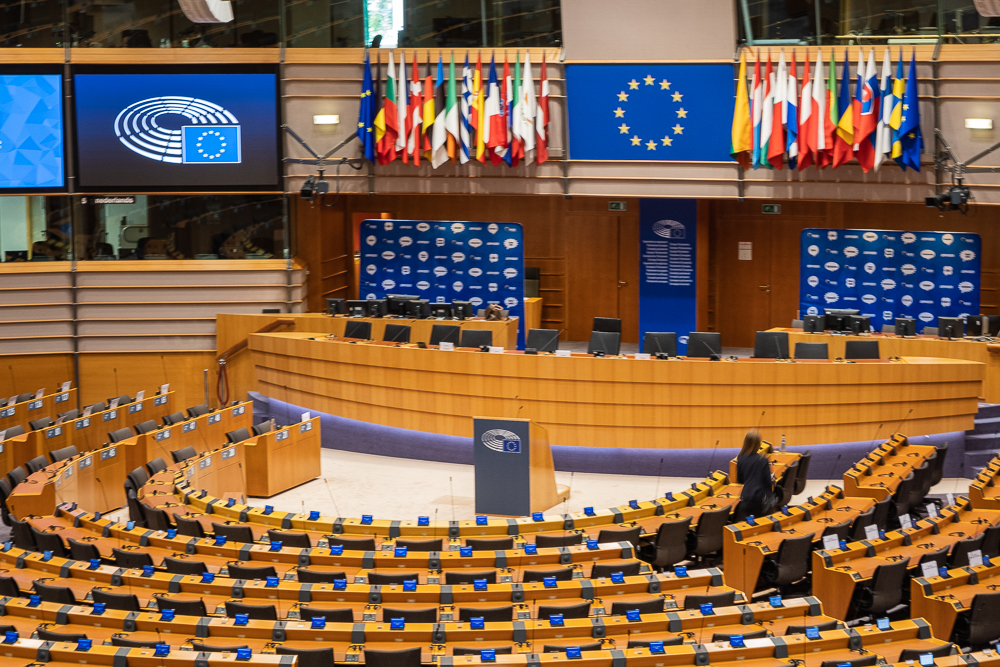
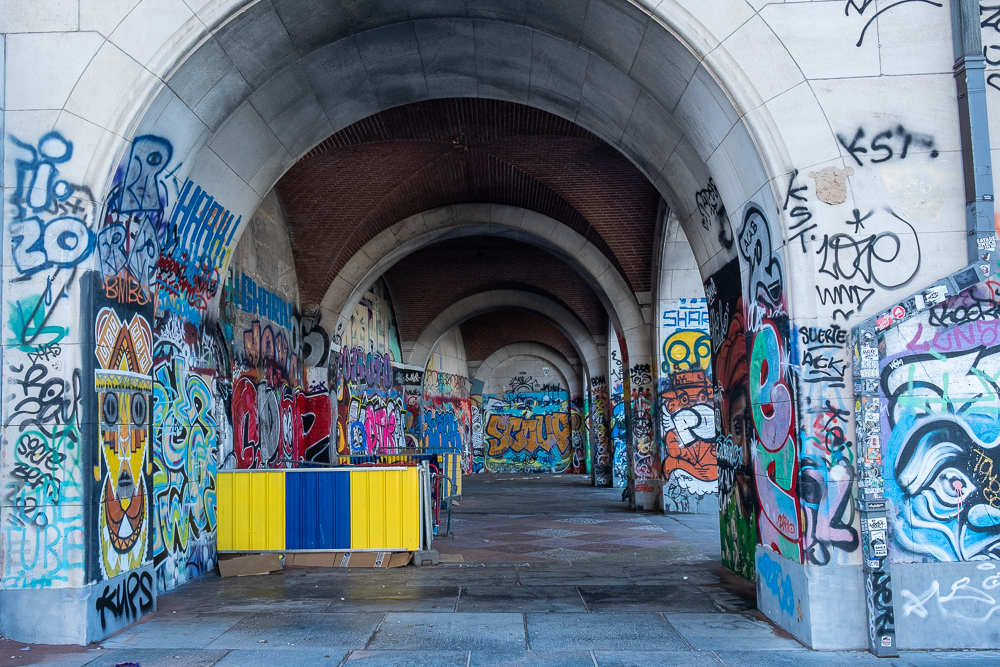
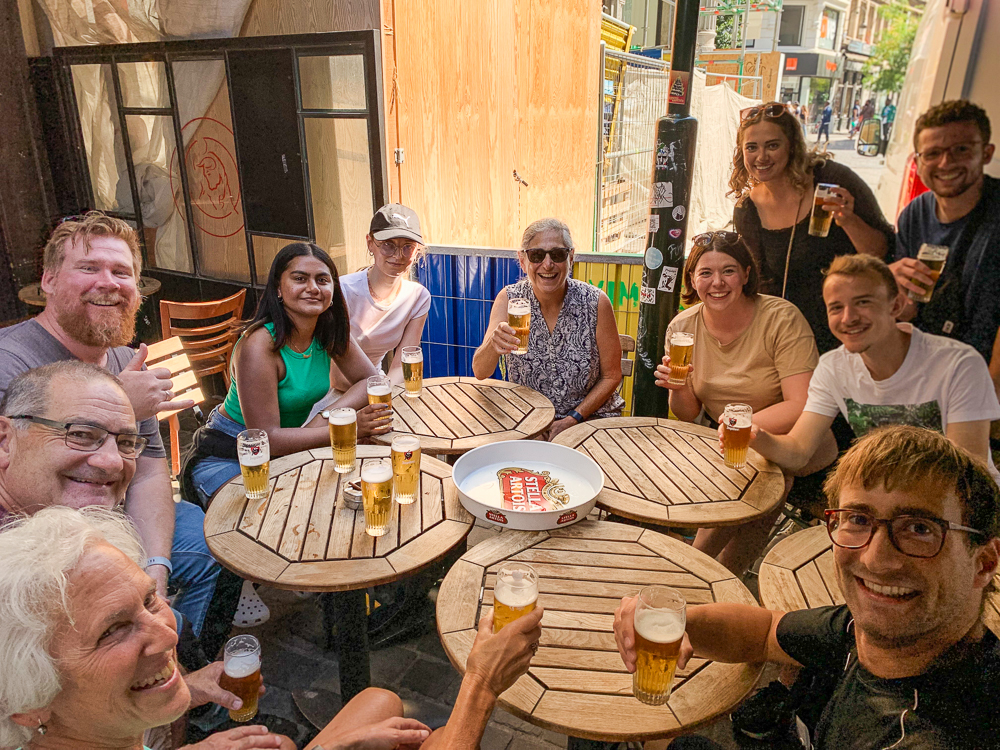
For my last full day of my trip, tomorrow being a long and exhausting travel day, I hit some of Rick Steves’ hot spots: City Museum, European Parliament, and Royal Museums of Fine Arts of Belgium. Additionally, I returned to the Grand Place and, due to being frustrated with yesterday’s photo, Manneken-Pis. Of course, I needed to round out my eating tour of Brussels with a waffle and chocolate!

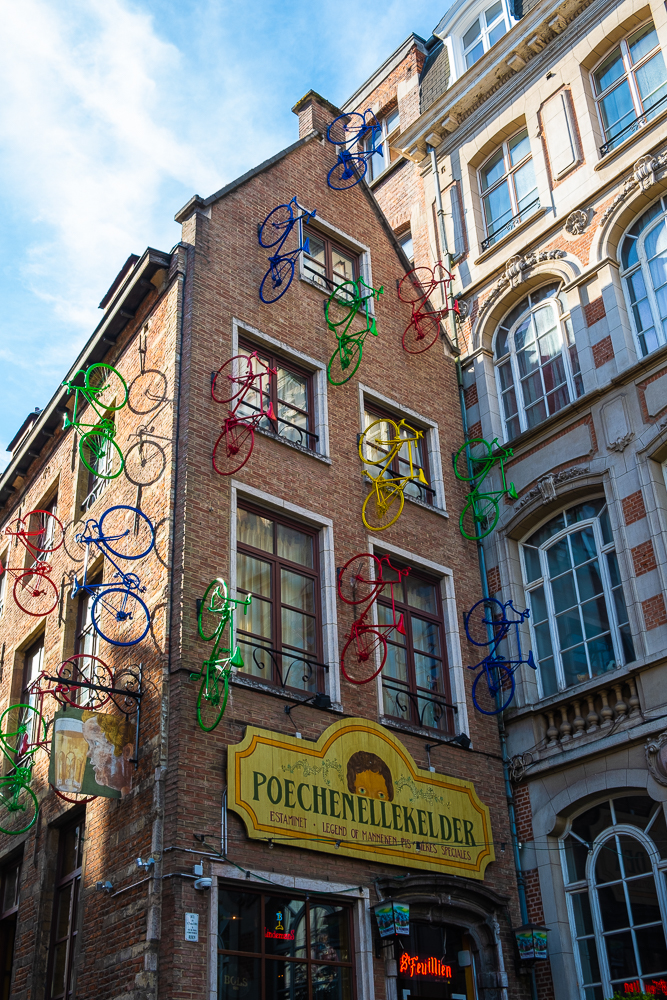



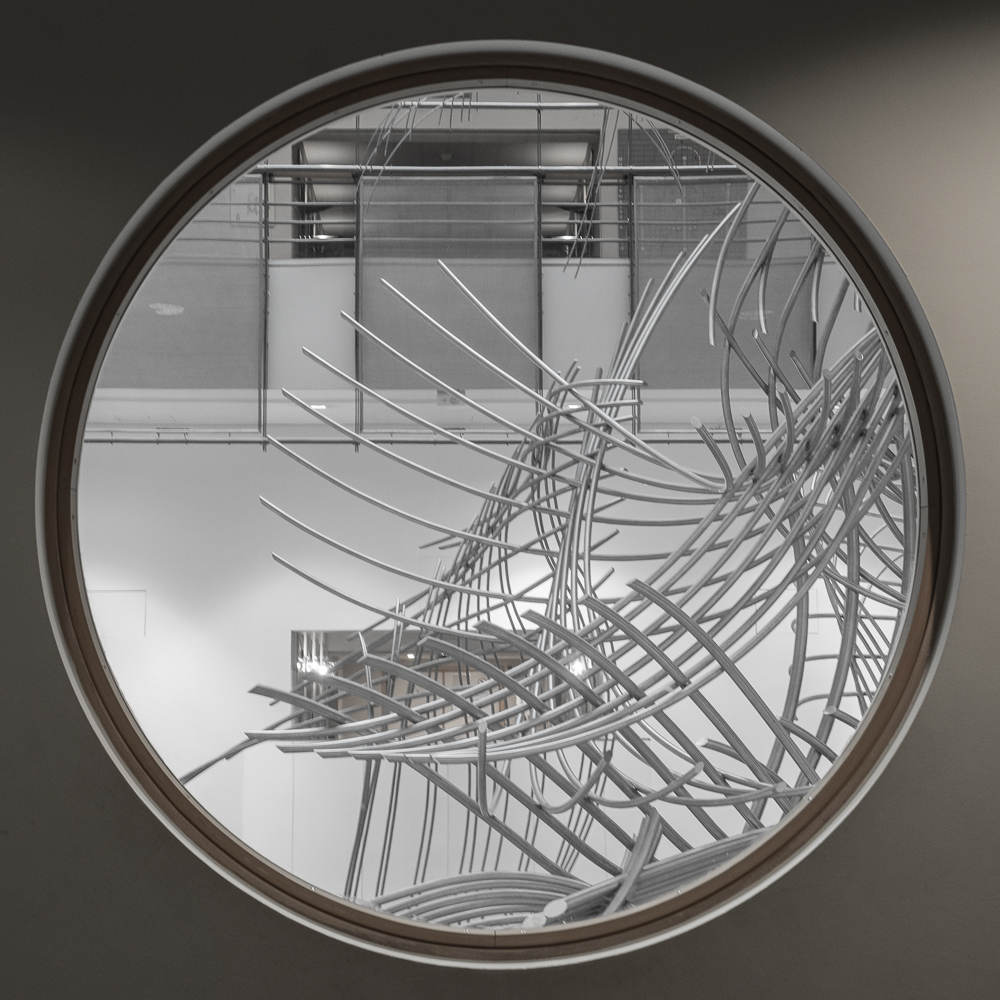
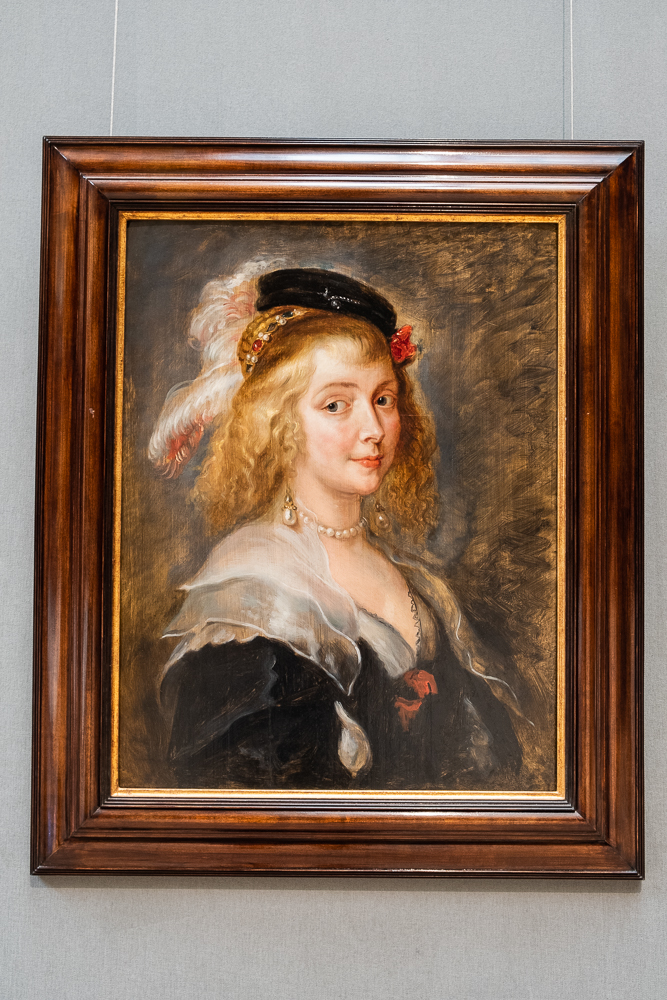

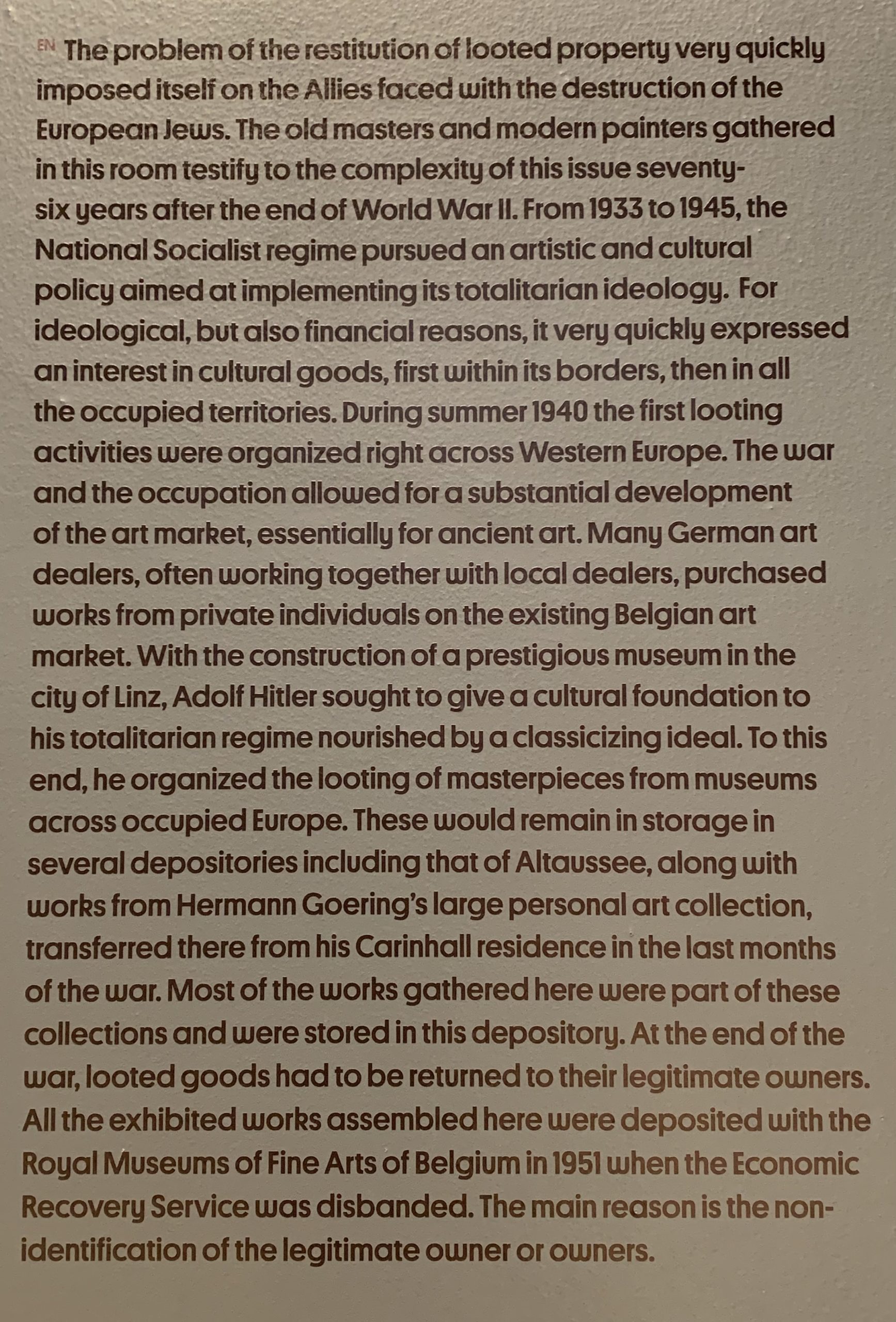

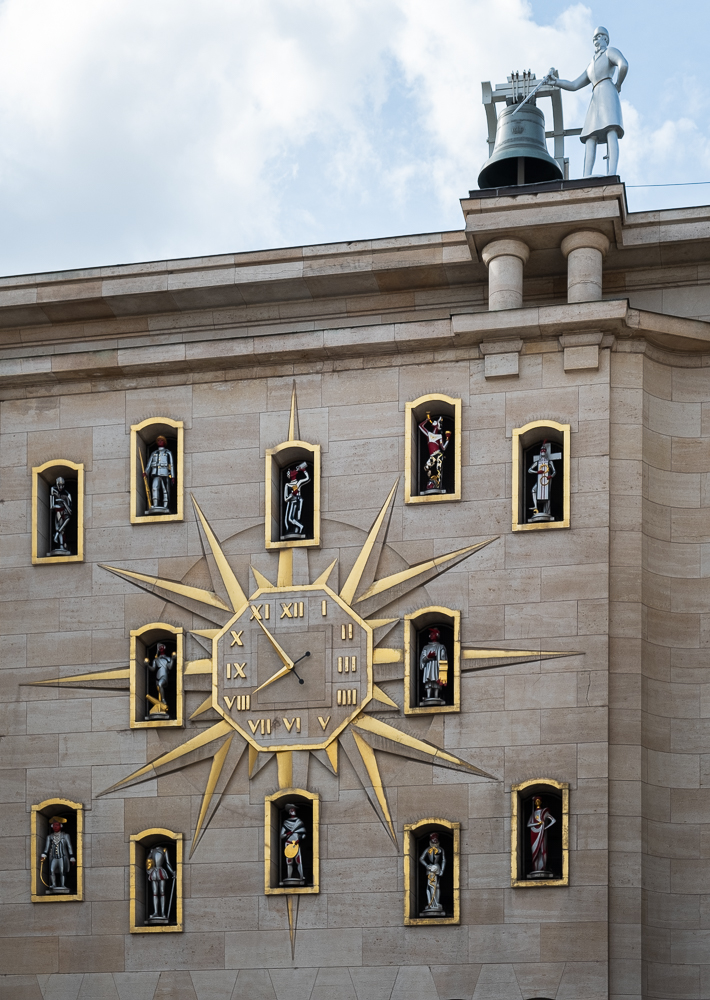
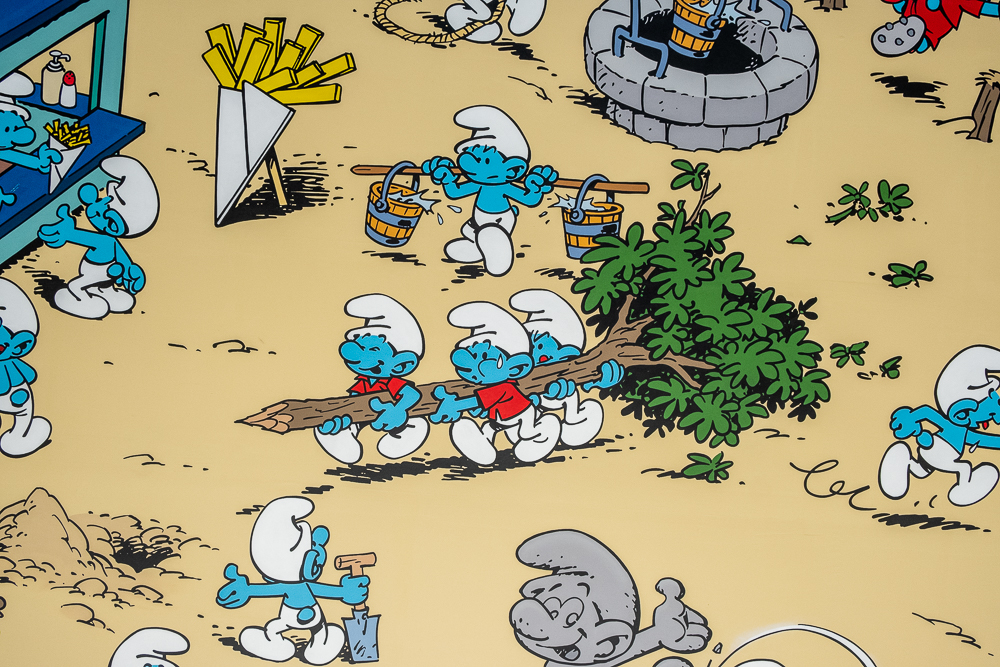
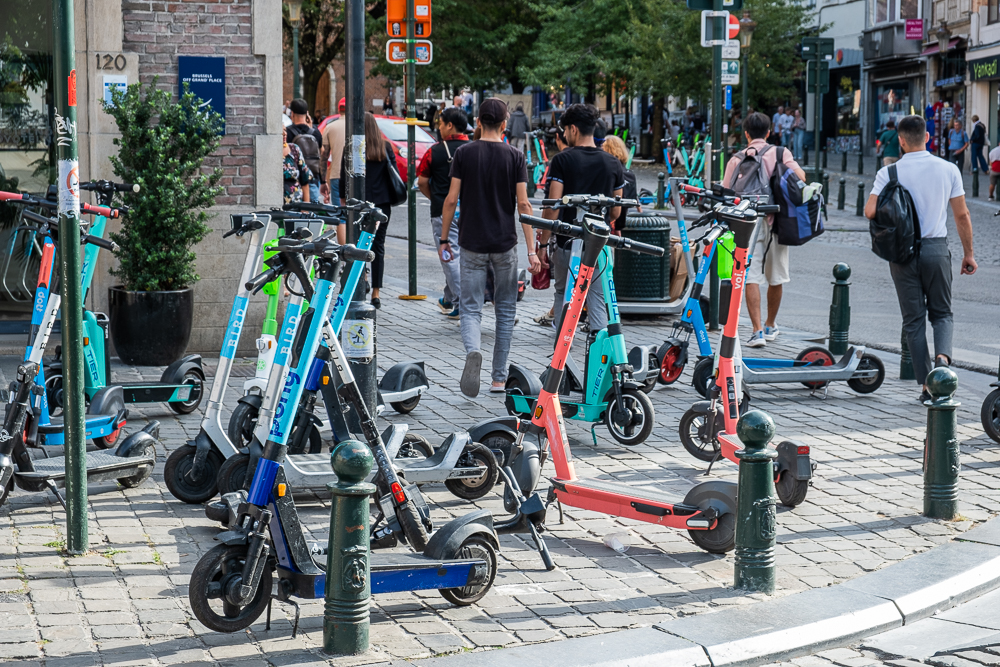

After my busy (and eventful…) day in Ghent, I arrived last night in Brussels. I enjoyed dinner in the Grand Place, eating outside until the rain began to fall. I finished my dinner inside the restaurant. Yep, I’m still a bit nervous about eating inside (corona…), but I chose eating while remaining dry.
Today was a bit of a mishmash. Tristan, my free walking tour guide for my 10:30 am tour, did a fine job. He’s only been doing this for a couple of weeks, so as he became more comfortable, he did a better job. We saw the major sites near the center of town, all near my AirBnB.
When the tour ended, an Aussie announced the “next tour,” beer and fries! About a dozen of us joined him. We found a pub and drank (lots of) beer and then a place to buy fries (frites). One couple from Cincinnati will be on a barge & bike tour with the same company Joel and I used, boatbiketours.com. They’ll be heading from Bruges to Amsterdam. Most of the others are students or recent grads.
I’m typing this at about 7:00 pm… At 8:00 pm, many of the us will be meeting in the Grand Place for dinner and, of course – ya know, it’s Brussels! – beer. 🙂

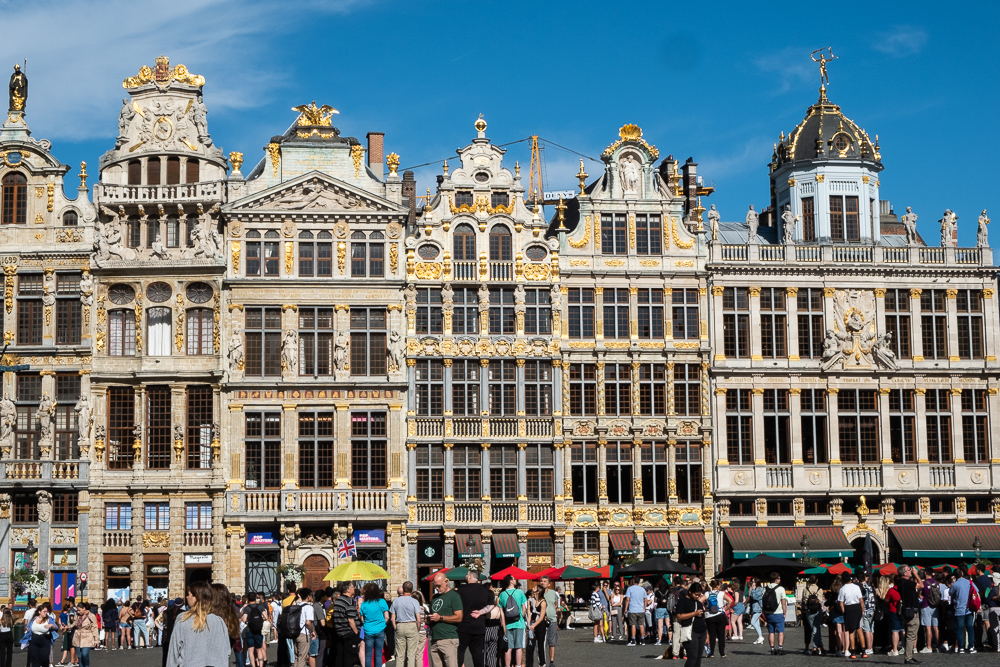
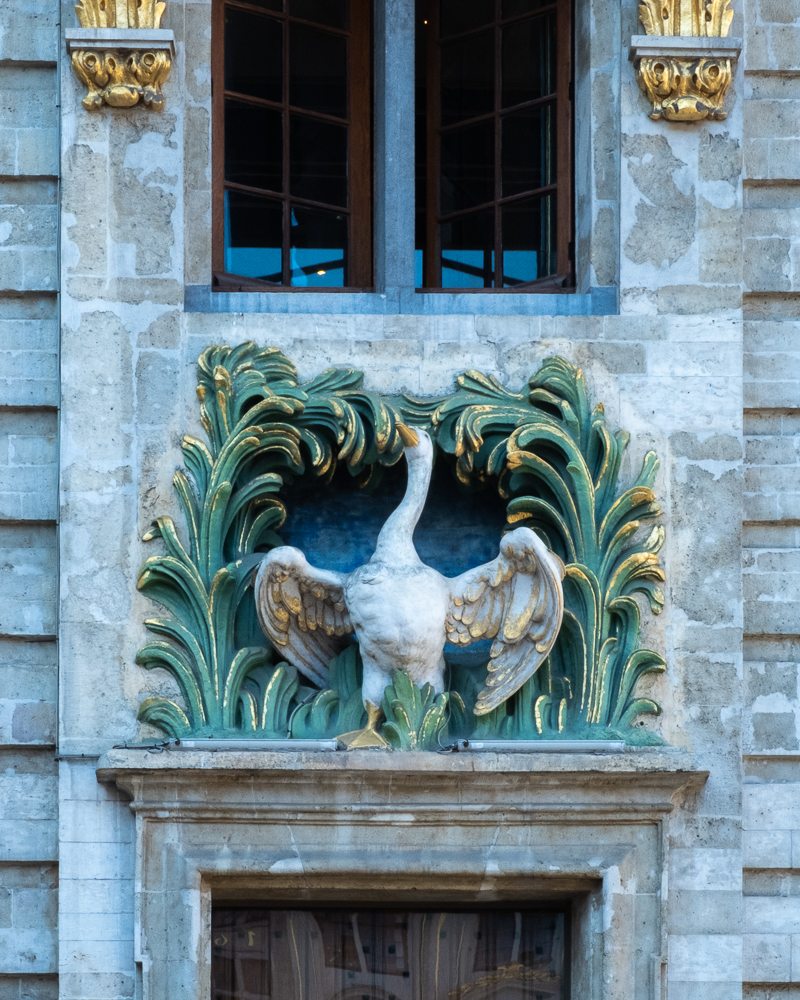

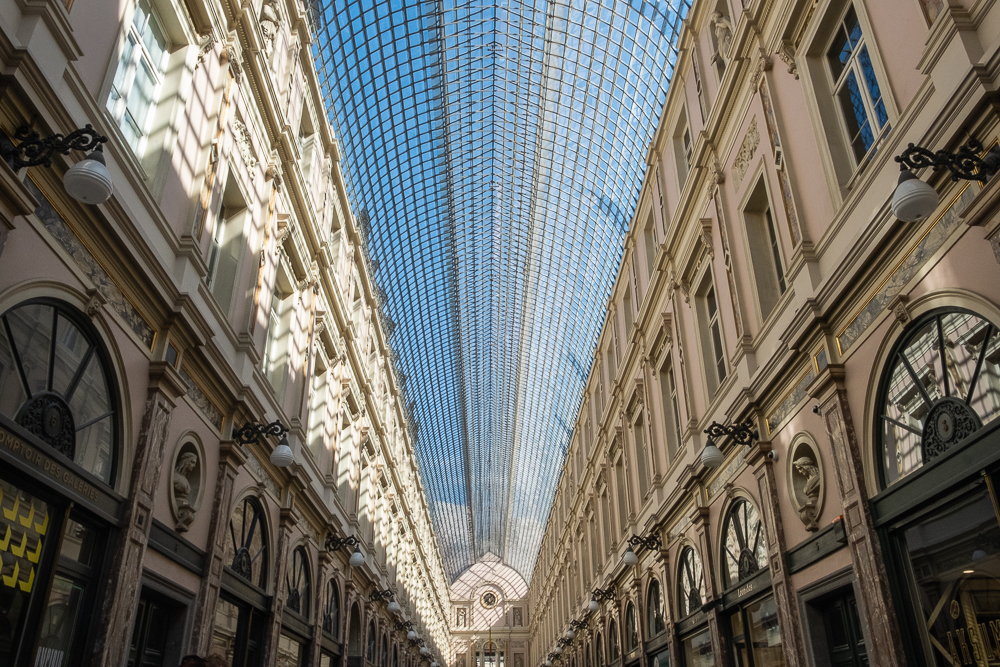


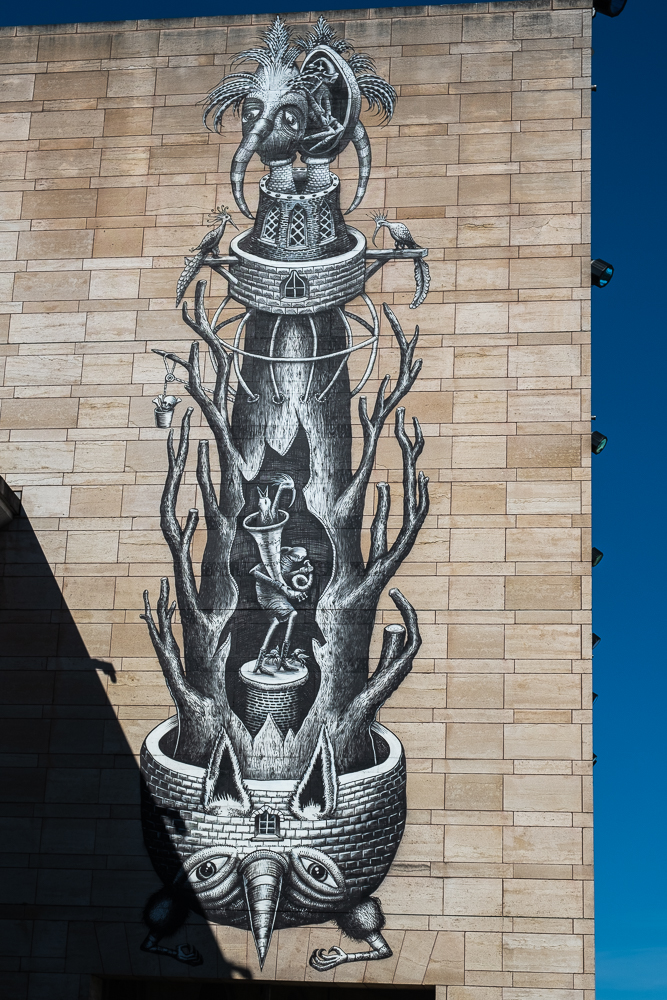

Oops! Had to happen, eh?
While preparing to stop in Ghent on my way from Bruges to Brussels, I said goodbye to my FABULOUS B&B hosts, Christine and Daniel, and hopped on my train. At the Ghent Central Train Station, there were only a few luggage lockers. All were full until – yay! Two people emptied a locker and I tried to reserve it. The pay pad wouldn’t take my Apple Pay, the way I’ve paid 99% of the vendors on this trip, so I dug out my coin purse with my debit card and…left my coin purse by the luggage lockers! Oh, well. I have my passport for ID, and I hid extra credit cards in my bags. I locked my lost cards, ordered a new drivers license, and notified the train station about my lost coin purse. Biggest bummer is the €150.00 which is lost forever…
I am NOT, however, going to let this mishap ruin my day or my trip! 🙂
This morning, during my lovely breakfast at B&B Stoega, I asked Christine about the best way to get to the train station. She offered to give me a ride. So nice! Then I discussed photography with Daniel. He’s a talented photographer who is taking his retirement hobby to an amazing level. I’ve taken one course; he’s getting a degree in photography! If you would like, take a look at some of his creative work on instagram: @phototrail_dd. And when (not IF!) you visit Bruges, I HIGHLY recommend B&B Stoega!
Ghent is so different than Bruges! Bruges’ medieval buildings present a unified perception of the city. The main sites are clustered within its walls, allowing visitors to imagine what the city was like long ago. Ghent has some similar sites – churches, cathedrals, a castle, plazas, fountains, canals – but they’re interspersed with modern buildings and facilities. Ghent is less unified than Bruges.
In Ghent, I had to see the Ghent Altarpiece, or ‘The Adoration of the Mystic Lamb,’ by the Van Eyck brothers in St. Bavo’s Cathedral. One can explore the cathedral free-of-charge, but to see the Mystic Lamb, there’s a charge. I decided to go whole hog – or should I say whole sheep?! – and paid for the augmented reality tour. Wearing a special headpiece, I saw holograms as I listened to speakers sharing the history of the Mystic Lamb. So cool! I’ve never done anything like this and was very impressed with the engagement of augmented reality!
Following the Mystic Lamb, I wandered around the city, making sure to take a look at Gravensteen, a medieval castle. Next up? The dragon on top of the Belfry of Ghent!
Now, I’m ensconsed in my AirBnB in the center of Brussels. Soon, it’ll be time for more exploration!

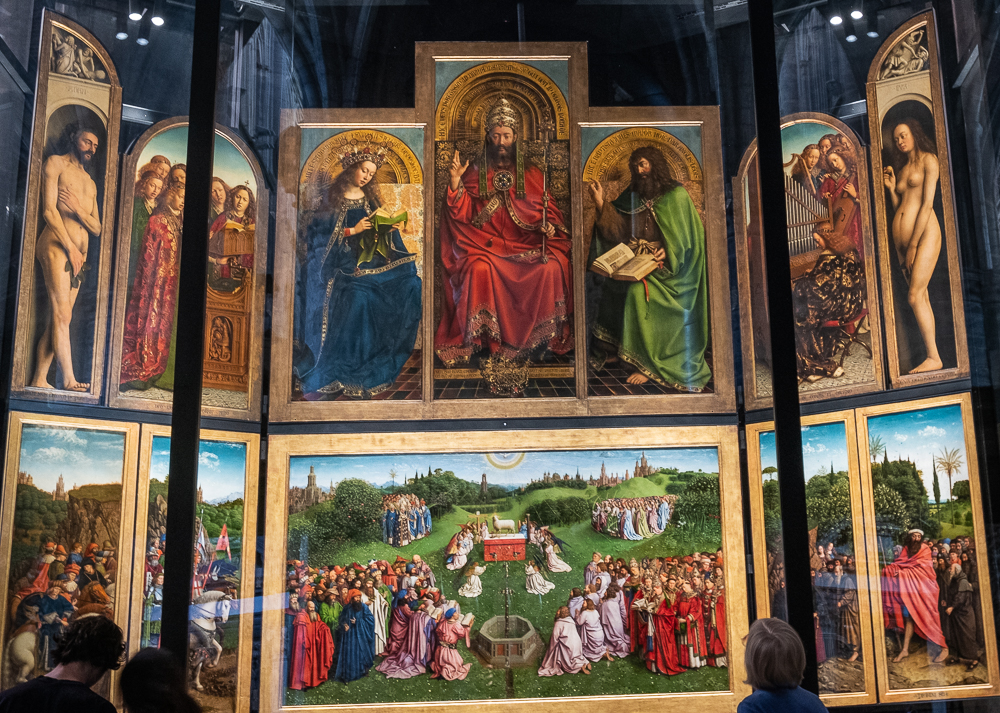


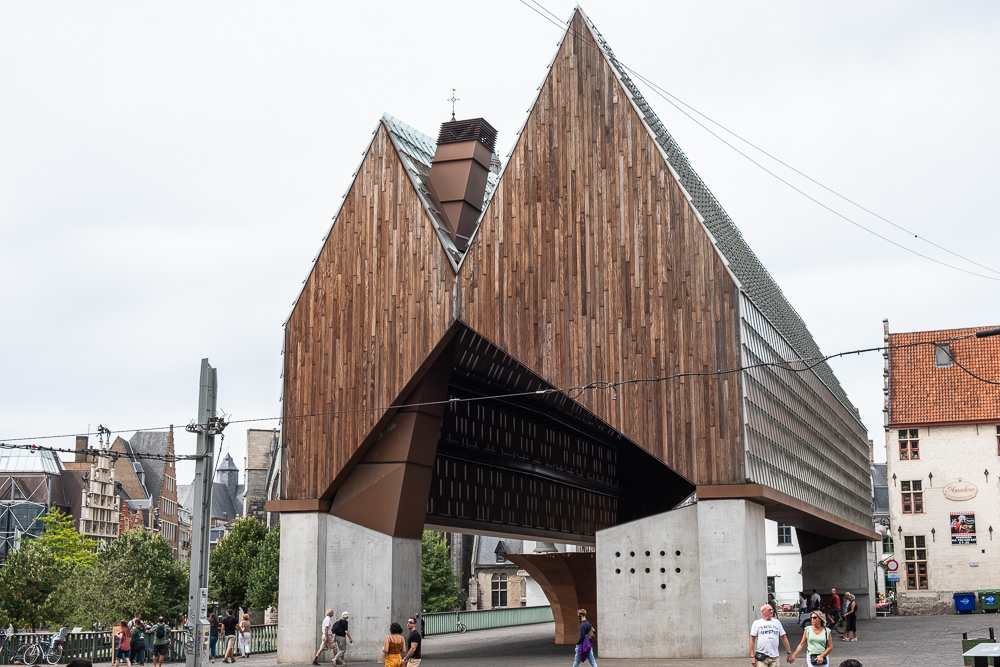



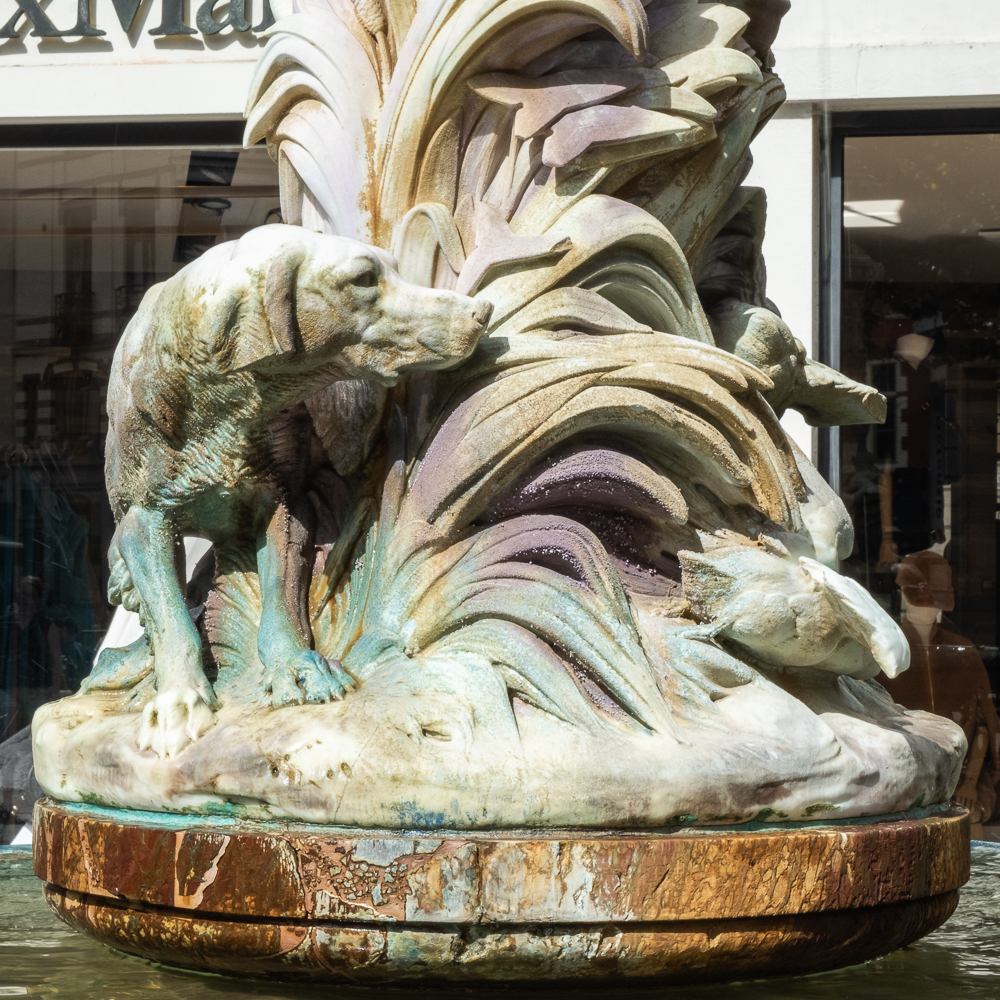
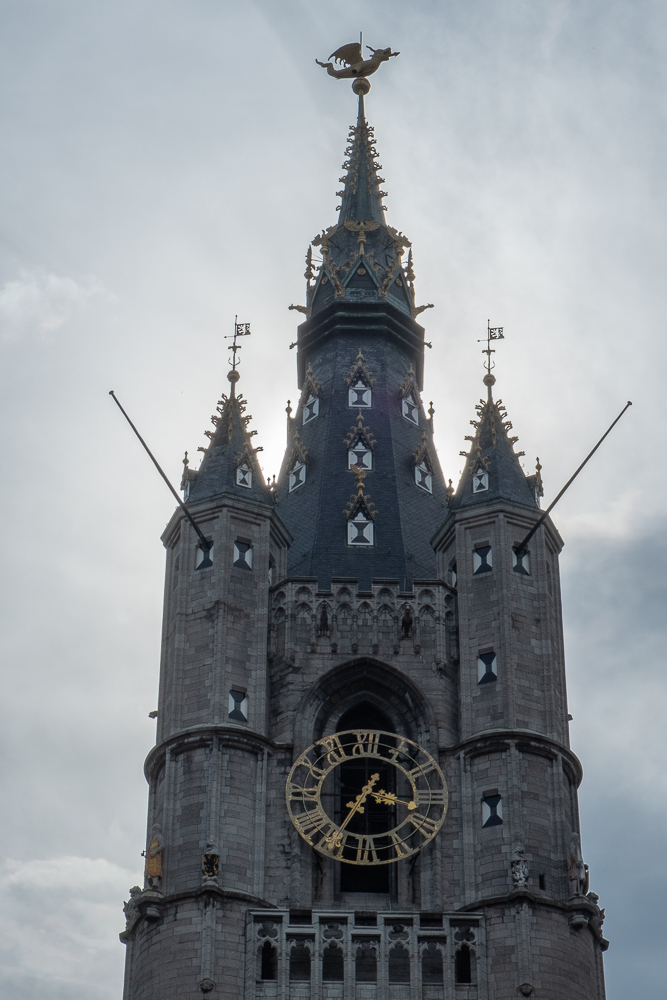
In the summer of 2019 BC (Before Covid), I taught for the University Studies Abroad Consortium (USAC) in Torino, Italy. After my teaching stint ended, I solo traveled to Krakow, Prague, Cesky Krumlov, Bratislava, Budapest, and Athens. (A few days later, Joel met me in Athens, and we continued onto Crete for his son and now daughter-in-law’s destination wedding.)
What became apparent to me is that as much as I enjoy cities, especially the architecture, gardens, and “surprises,” I do not enjoy crowds. I also need nature! I need to be out of the city and, preferably, in the hills or, at the very least, on a trail.
When my host Christine and I were chatting a couple of days ago, she suggested, knowing that I like to walk, a day trip to Damme, a nearby village. I decided to take her advice, prepared my backpack, and headed to Damme this morning. (My initial thought was to take a boat on the canal back to Bruges, but it wasn’t available today. No problem! It felt good to have a ten-mile day!)
What did I see? Canals, a windmill, horse-drawn carriages, cows, vintage cars, cute buildings… It was another wonderful day!
[Note: Such a wonderful day, I had to sort through 133 photos! These represent my favorites from today.]
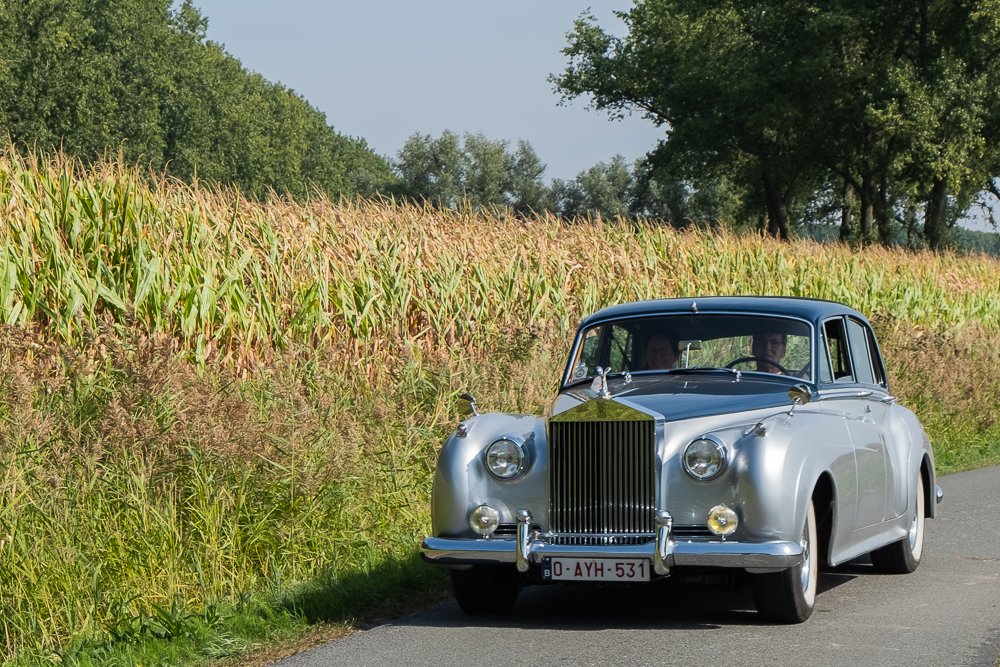
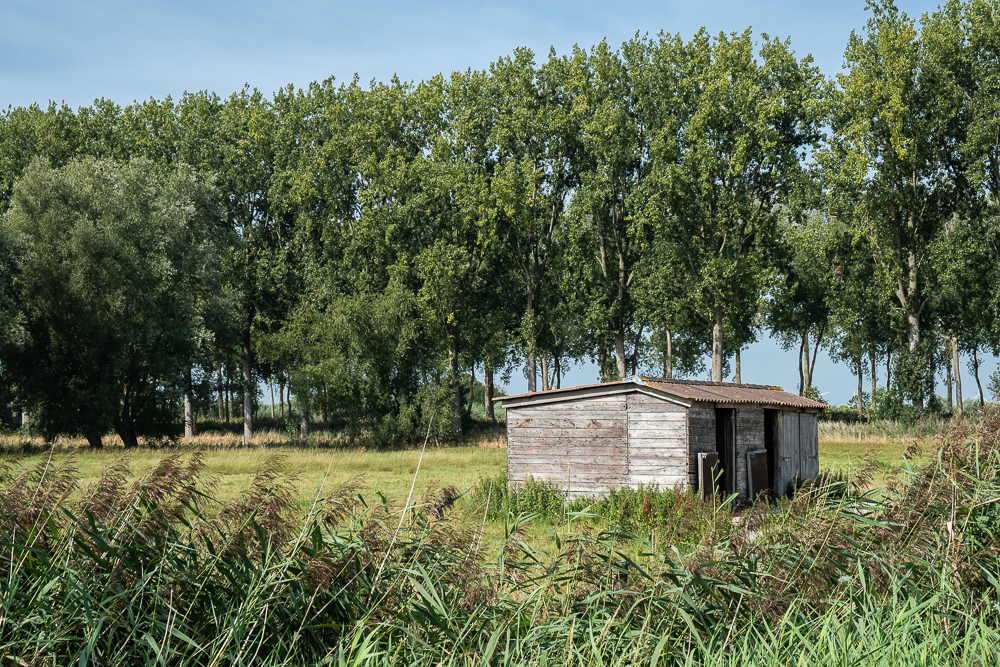




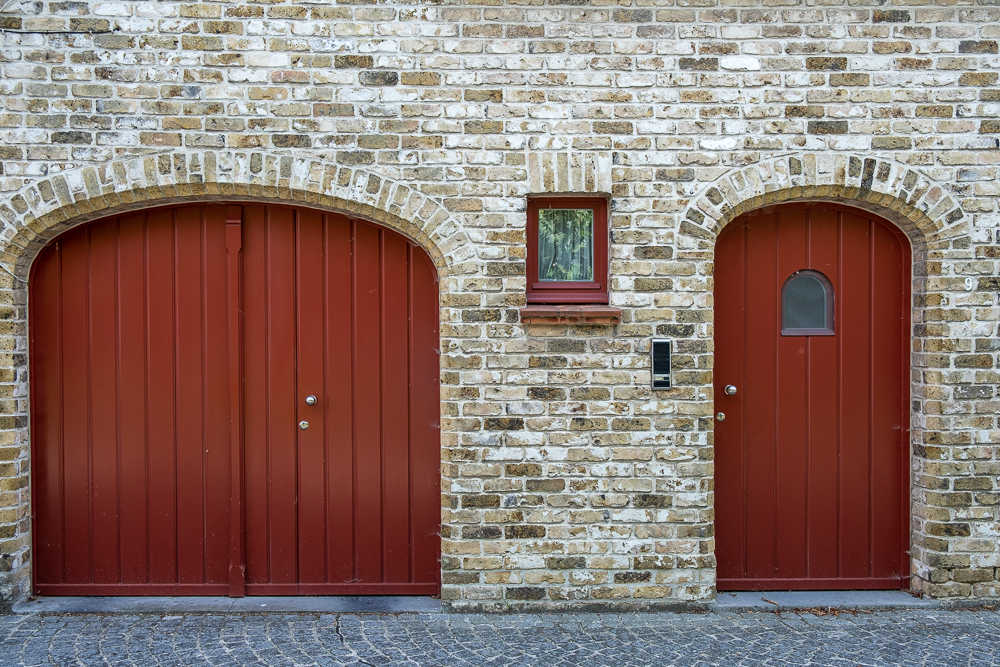

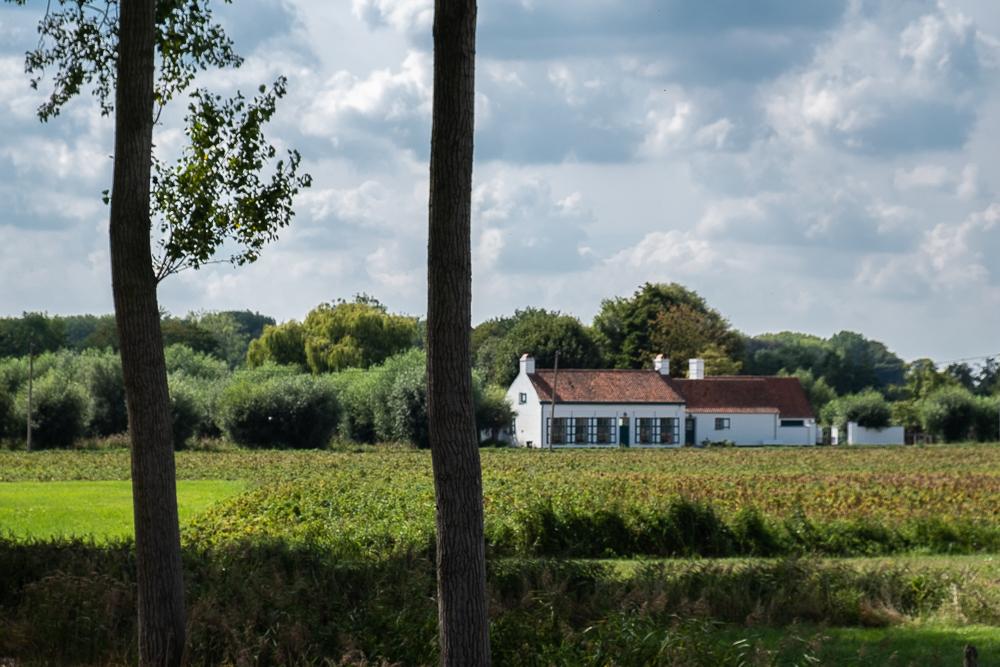
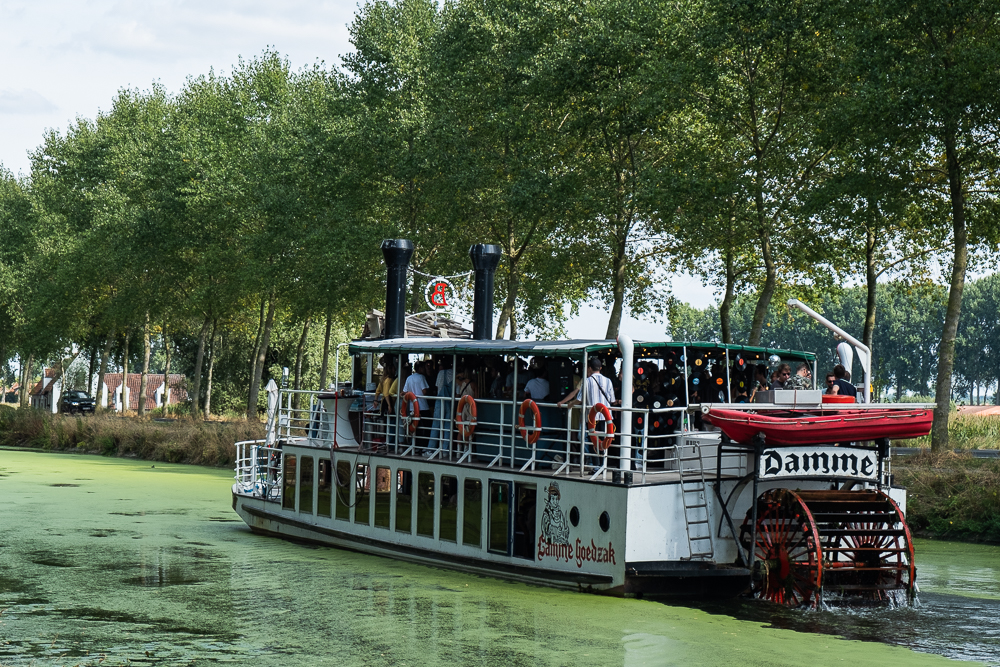
Today, I took it a little easier.
Following my delicious breakfast at my B&B, I met Geerte in the market square, thinking we’d see the first “knighting” in 430 years. Oops! That’s scheduled for tomorrow, not today.
Instead, we sat in the courtyard of the Belfry of Bruges, a medieval tower, to listen to the 11:00 am free, live carillon concert. Next, we visited Church of Our Lady so we could see Michelangelo’s famous white marble sculpture, Madonna and Child, the only sculpture of Michelangelo to leave Italy during his lifetime. The sculpture was stolen twice from Bruges. First in 1794, French revolutionaries captured the piece, which was returned after Napoleon’s final defeat at Waterloo in 1815. In 1944, German soldiers smuggled the sculpture wrapped in mattresses using a Red Cross truck. A year later, the “monuments men” recovered Madonna and Child from a salt mine in Austria.
Geerte left for Utrecht after seeing Madonna and Child, so I meandered over to Garlic and Greens, a vegetarian Indian restaurant for a relaxing and delightful lunch.
Then what? I thought about going into some of the churches, cathedrals, and museums I’ve seen from the outside. However, the crowds! I’ve been in Bruges since Thursday afternoon, and the quantity of tourists was quite manageable. This changed today! Cruise ships arrived, visitors from nearby towns arrived, people from all over arrived. Time to move out of the city center. I walked to Beguinage Monestary and relaxed on a bench, with my book, by Minnewaterpark.
Slowly, with camera in hand and no map, I strolled (via a gelato shop!) back to my B&B.
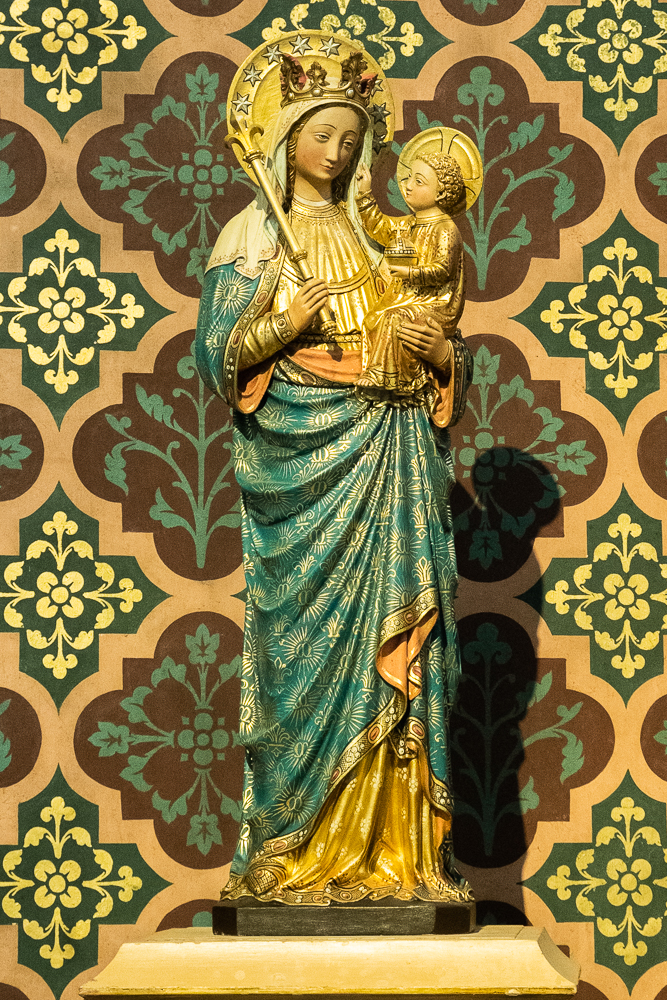

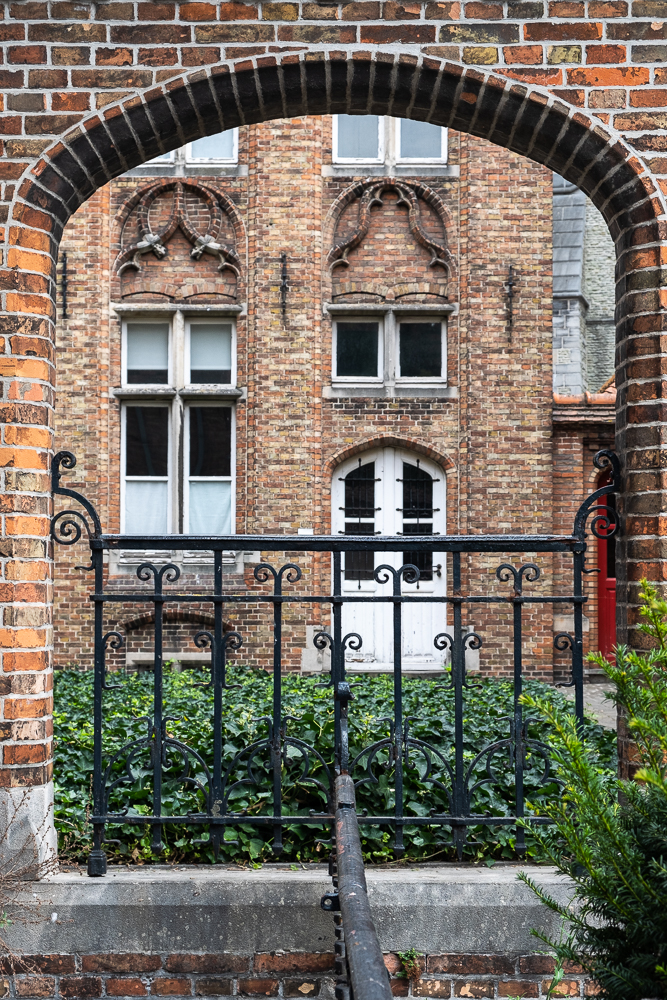
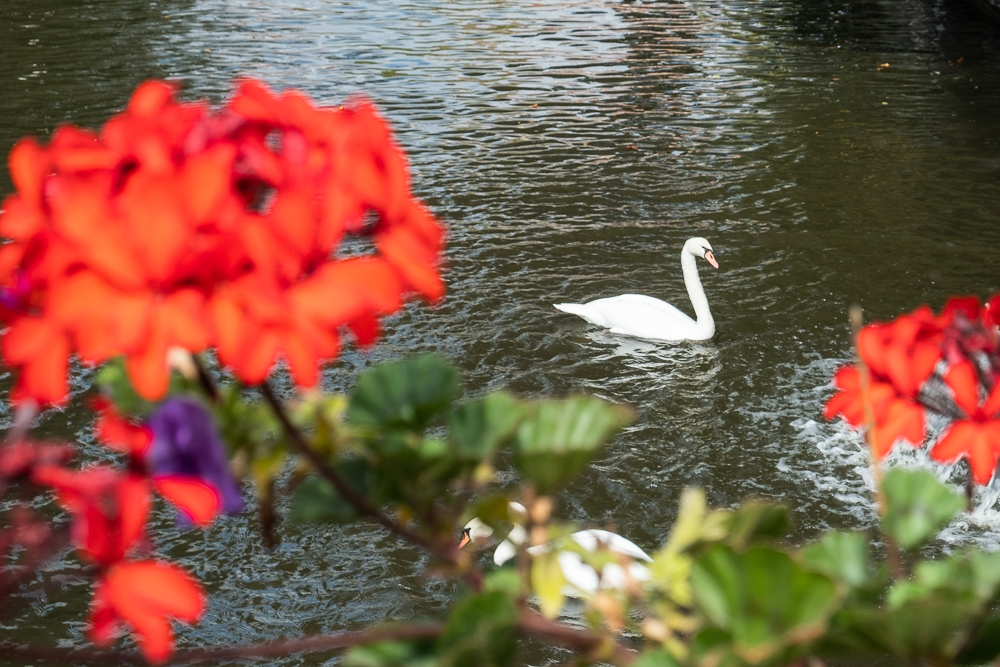



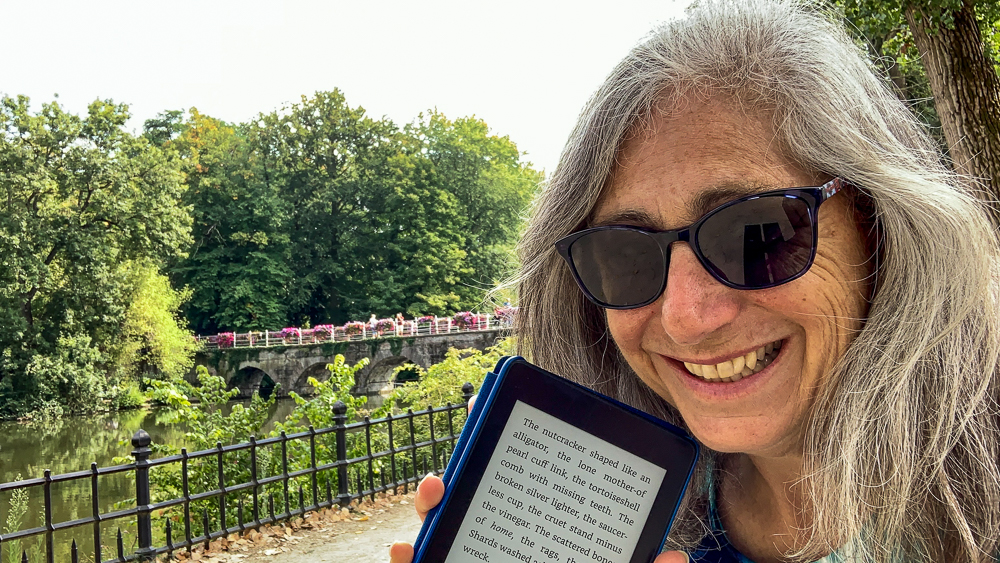

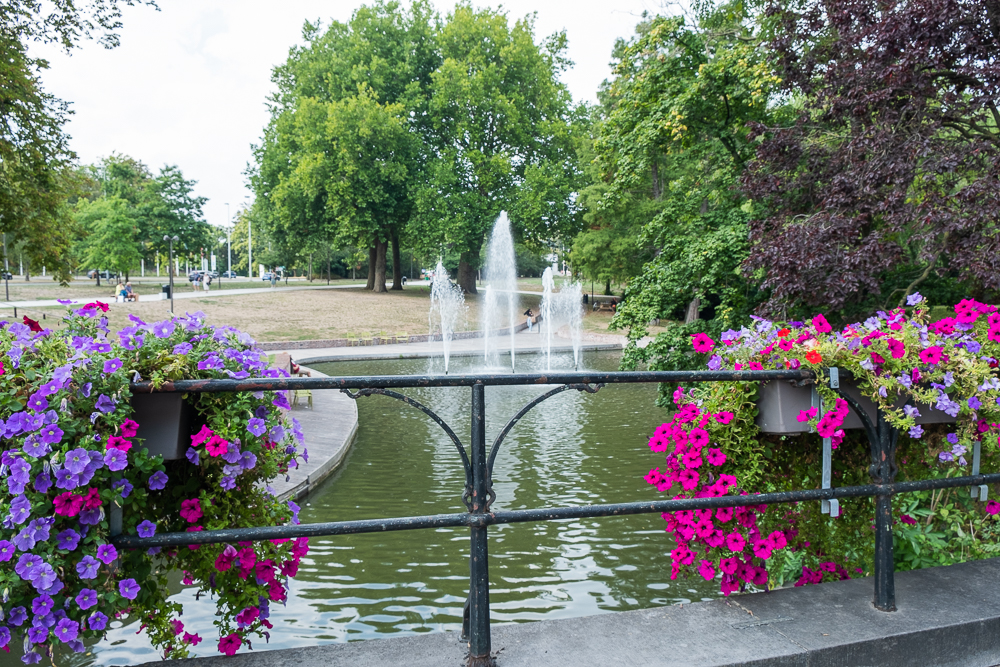
Today, I woke up after a short night’s sleep to a delicious breakfast served by my B&B hosts, Daniel and Christine. If you’re ever in Bruges, I highly recommend B&B Stoega. Daniel and Christine, who are just a few years older than I, converted their children’s upstairs bedrooms to en-suite units so they could host guests. The room itself is large, fully furnished, and incredibly comfortable. A surprise for those of us always trying to charge our phone: they have wireless and USB charging stations by each bedside. Breakfast was a delectable array of yummy and healthy food. Daniel and Christine both gave me great ideas of where to visit, adapting their recommendations to my preferences. They even gave me a book with four local walking tours. This is one of my most favorite lodging experiences!
After breakfast, I went on my second free walking tour – this one with a yellow rather than red umbrella! Pascal, this guide, was fantastic! Young, energetic, theatrical, knowledgeable, engaging. He showed us areas of Bruges I hadn’t seen the night before with Louis. Although Louis gave a good tour, his English was hard to understand. Pascal, a Dutchman who relocated to Bruges, spoke very clearly. It took no work to understand his English, so I could focus much more on his entertaining and interesting stories rather than on deciphering his words.
Next, I went to Cafe Vlissinghe, the oldest pub in Bruges, for a light lunch – salad, soup, small beer – and then walked…and walked…and walked. There are so many intriguing sites to see in this small city!
Following a luxurious nap, I joined Janet and Geerte, the two women I met on the previous evening’s tour, for dinner. What a wonderful evening! For three hours, we ate, drank, talked, and laughed!
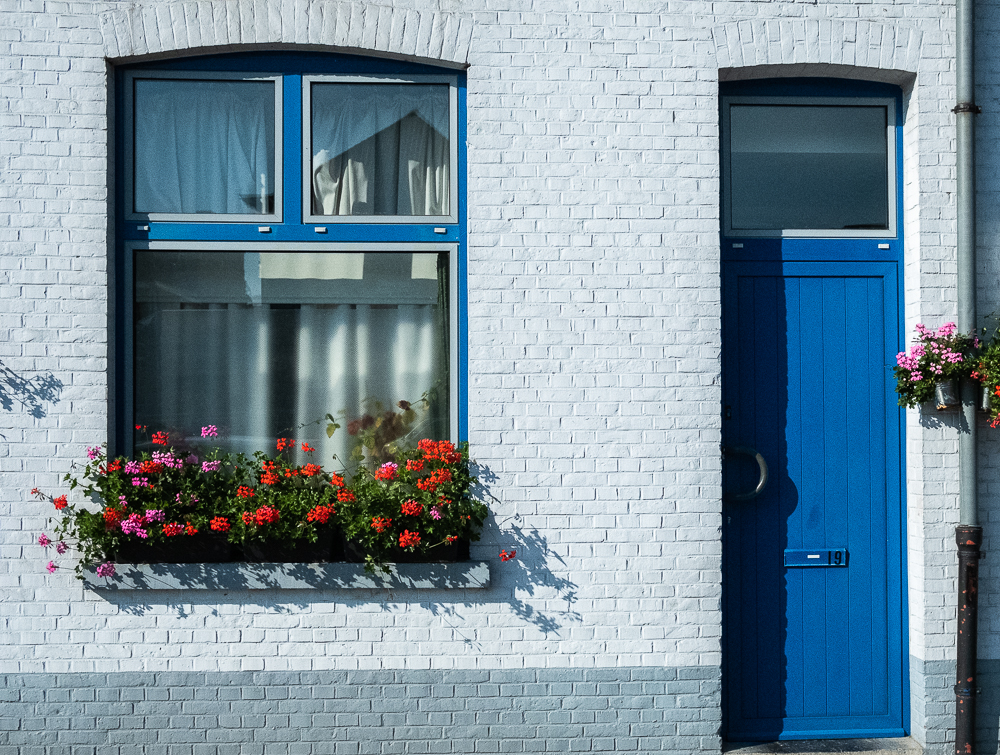
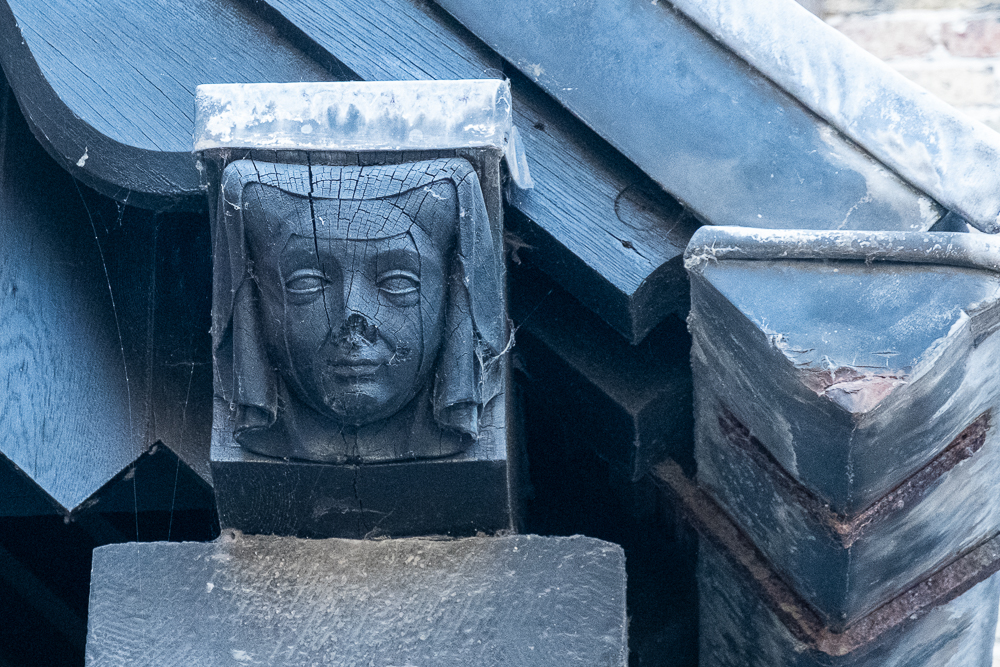



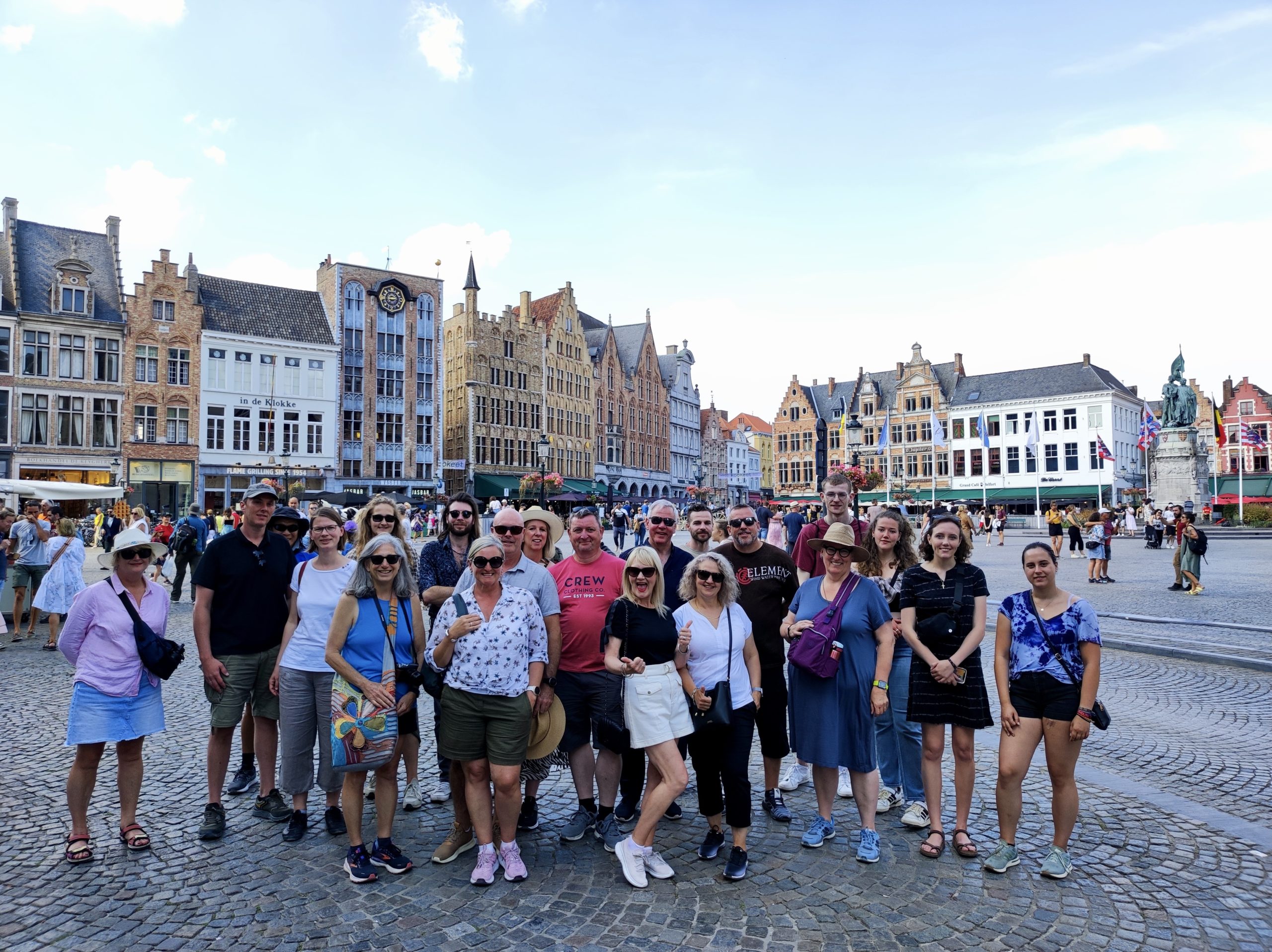
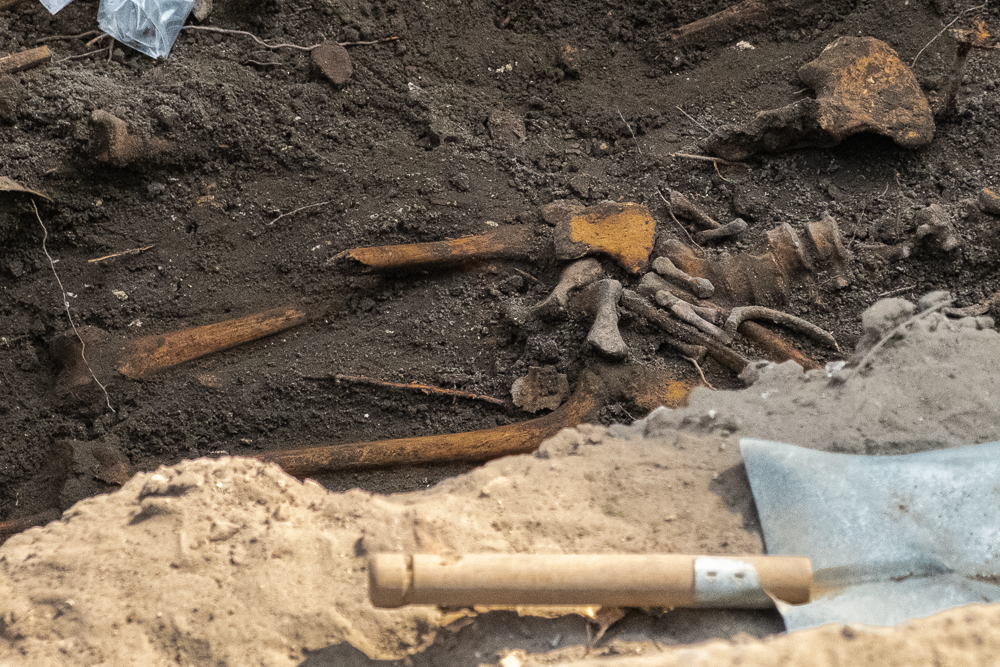
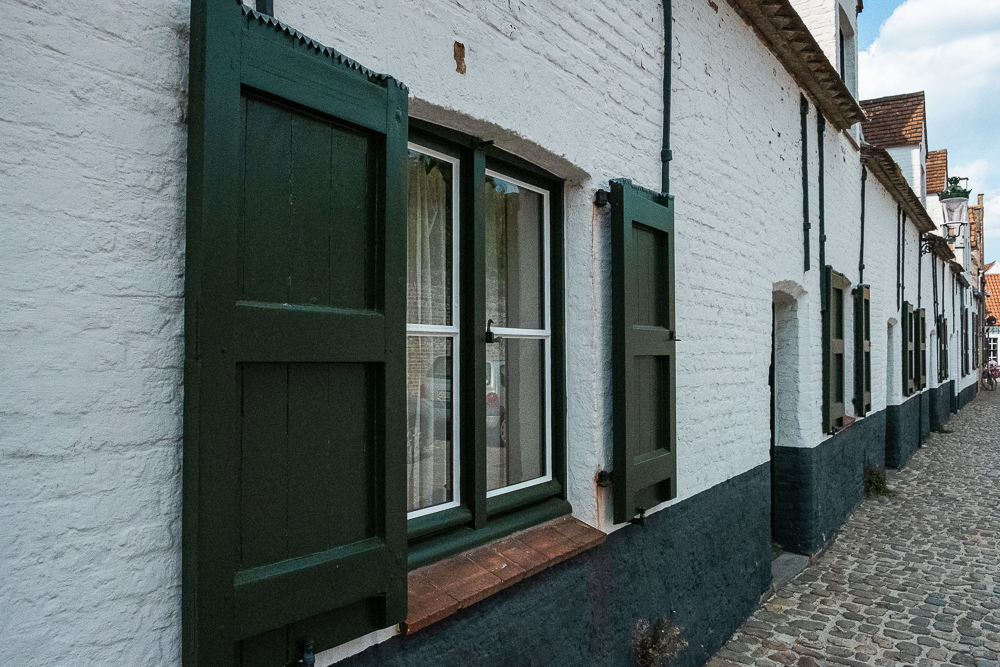
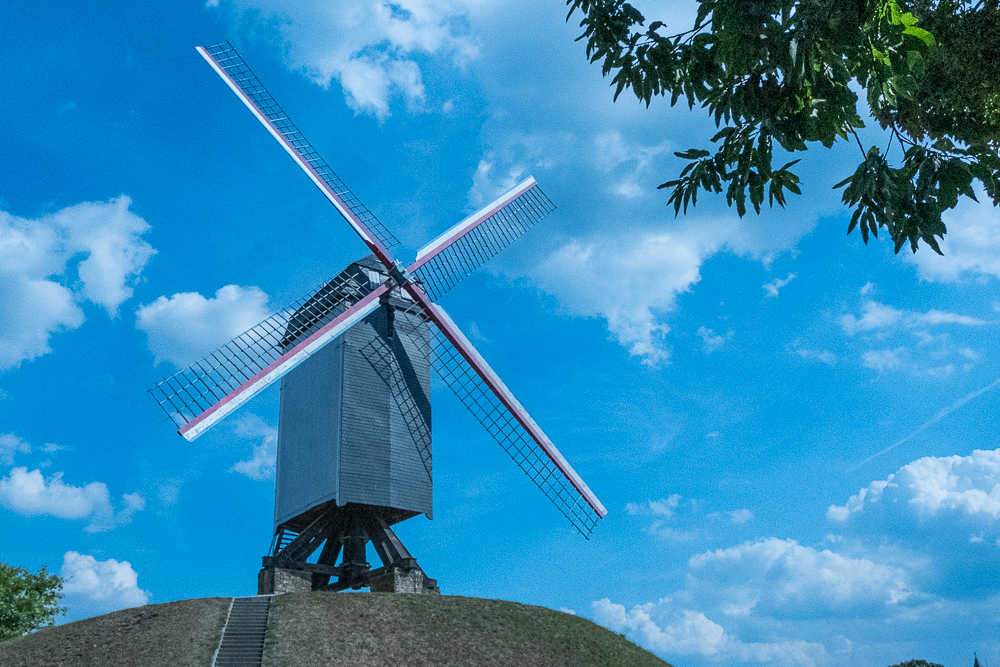


I love travel, whether with Joel, friends, or solo. The first phase of this adventure involved traveling with friends; the second part encompassed traveling with Joel. For this part, I’m traveling solo.
What do I like about solo traveling? I think of it as “squirrel traveling.” Consider a dog. If, say, Viza is walking with me in Poly Canyon and sees a squirrel, she’s OFF running after it. She has no thought about checking in with me to see if it’s okay if she chases her new friend.
When I’m traveling on my own, if there’s something I want to see or do, I can take off in that direction without having a conversation. Even when I travel with someone very compatible, it’s important to check in with each other if we see a “squirrel.” When I’m on my own, I see the squirrel and off I run – just like Viza.
In Luxembourg, though, I didn’t have that “squirrel travel” feeling. Maybe it was because of the train strike transportation drama on Monday. Maybe it was adjusting to being on my own after being with Astrid and her cousins in Germany. Maybe it was missing being with Joel after our fabulous barge and bike trip in Holland.
Regardless, while on the train from Luxembourg to Bruges, I felt I no longer enjoyed solo traveling. Then I arrived in Bruges. I LOVE IT HERE!!! Not only is the city beautiful but also my B&B hosts are phenomenal. Furthermore, I went on a free evening walk and met a couple of other solo female travelers. After the walk, we grabbed a beer and decided to connect for dinner the next day. All in all, a great welcome to this fabulous city!
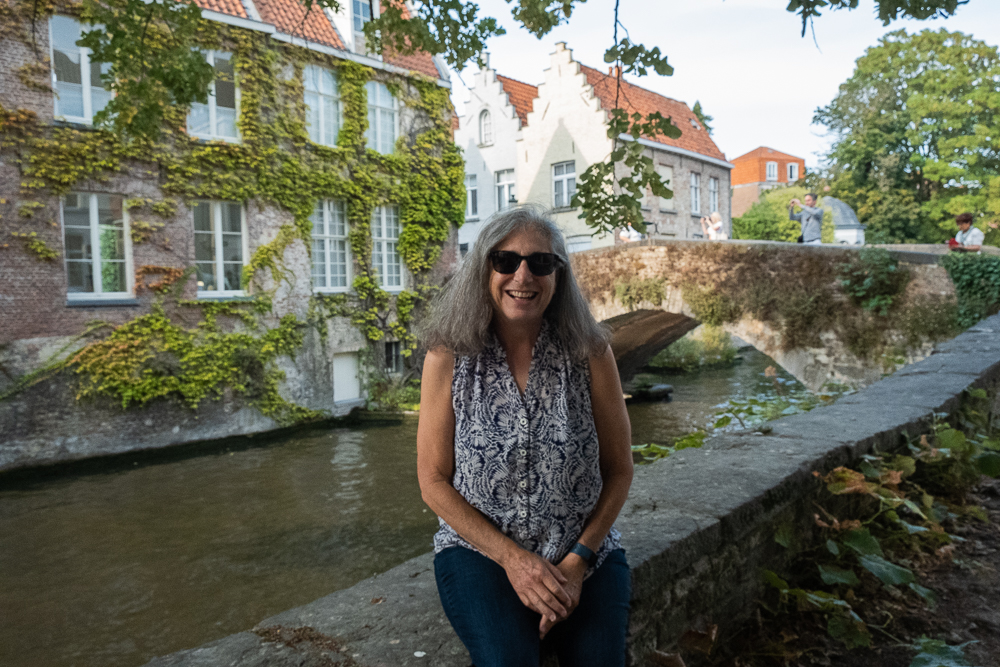

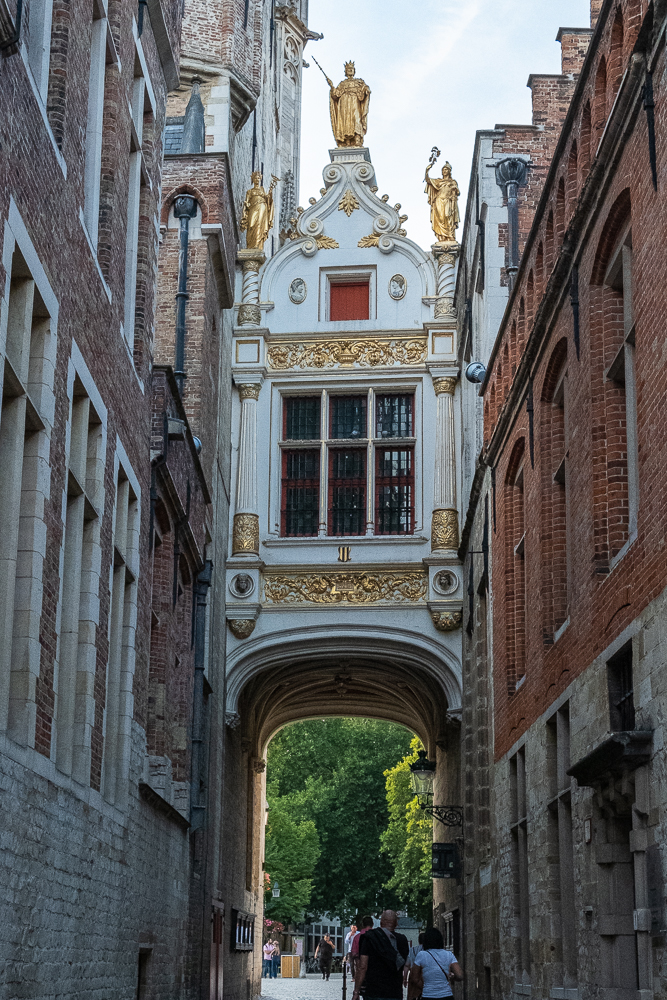


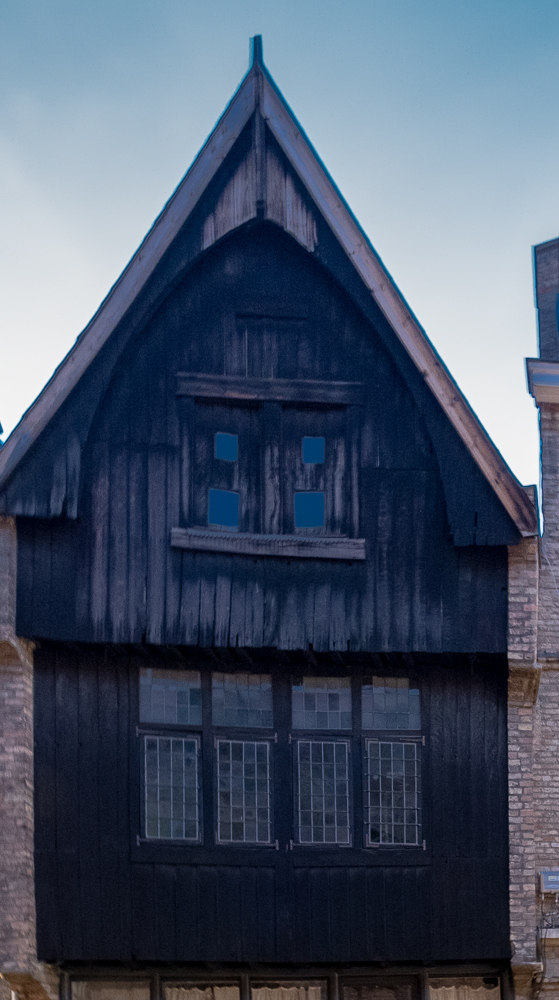


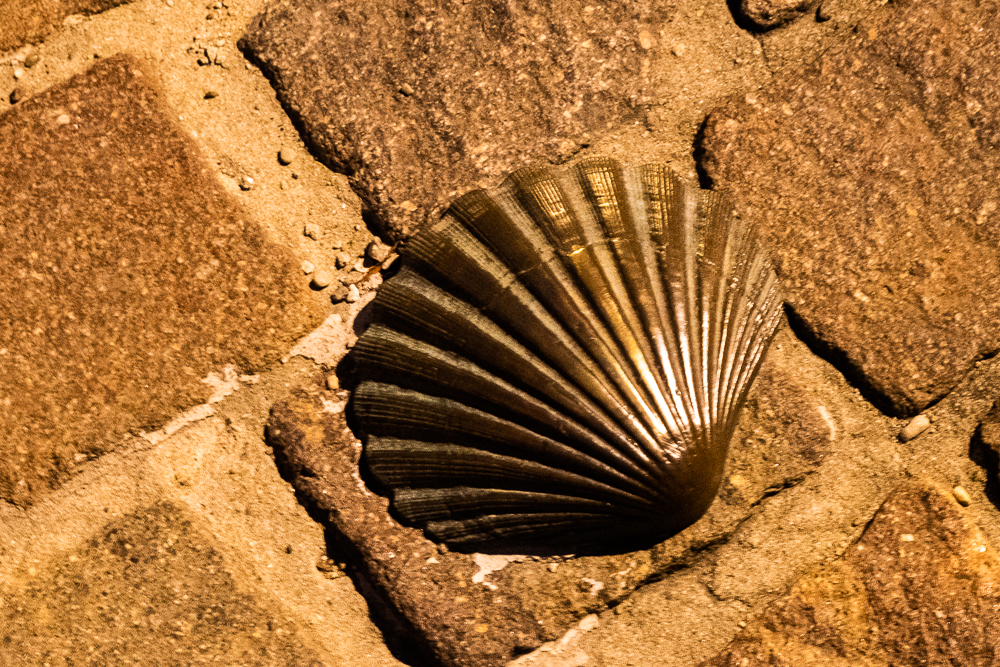
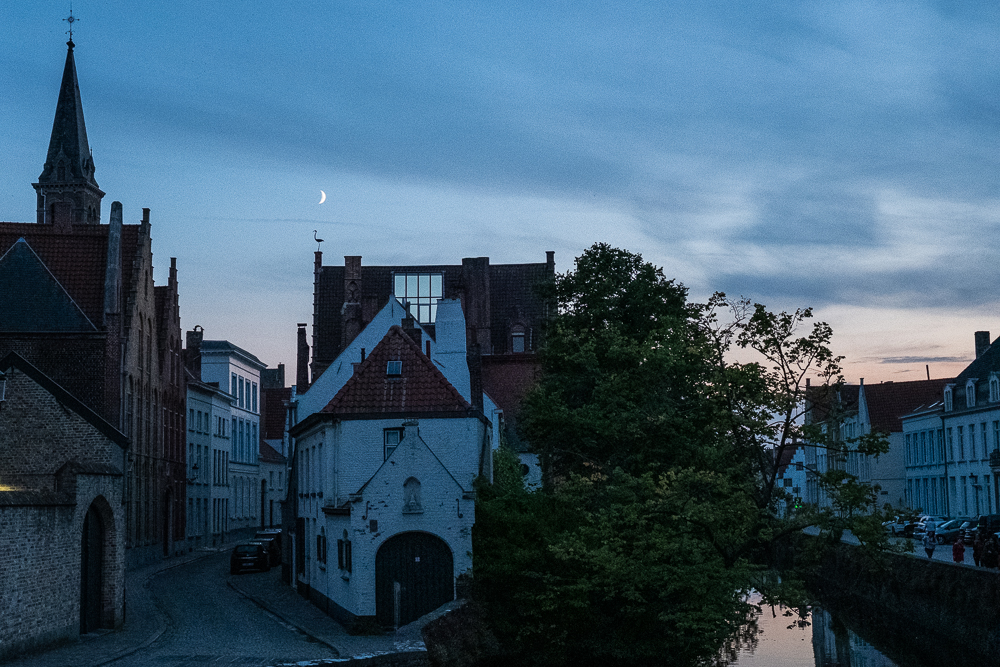
I woke this morning to a sound Californians are not familiar with – rain! Not only did I hear the sound of rain splashing all over but also the boom of thunder! My initial idea of hiking in the hills of Luxembourg – or even exploring some of the faraway parks – disappeared with the wet stuff falling from the sky.
Instead, I had a leisurely breakfast – even achieved Queen Bee status while playing the New York Times’ Spelling Bee game! – and walked with raincoat on and umbrella in hand to the Cathédrale Notre-Dame and the Musée national d’histoire et d’art Luxembourg.
The cathedral tickled me in an ironic way. Signs posted all over the cathedral warned visitors to be quiet, while the noise generated by renovation power tools drowned out any possible conversation.
The museum, though, captivated me. A combination natural history, archeological, and art museum, the five floors each offered new insights into life long ago and currently in Luxembourg. The final exhibit, The Rape of Europe, evoked the pain of Putin and his military campaign again Ukraine. See below for details.
While enjoying today’s lunch (a goat cheese salad and sparkling water at the museum cafe), the rain stopped and sky cleared. Next up, a nice walk around the old city.
Dinner…well, at lunch yesterday, my server said Rock Solid has the biggest selection of beers on tap…and patrons can buy tasters…so… 🙂
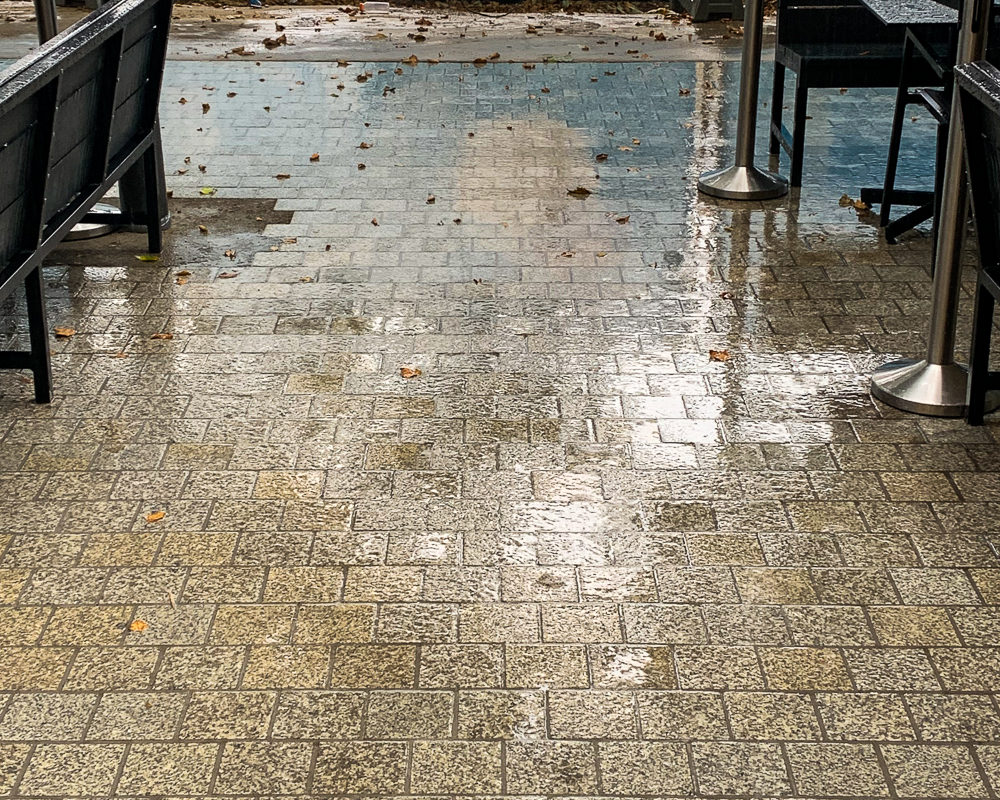
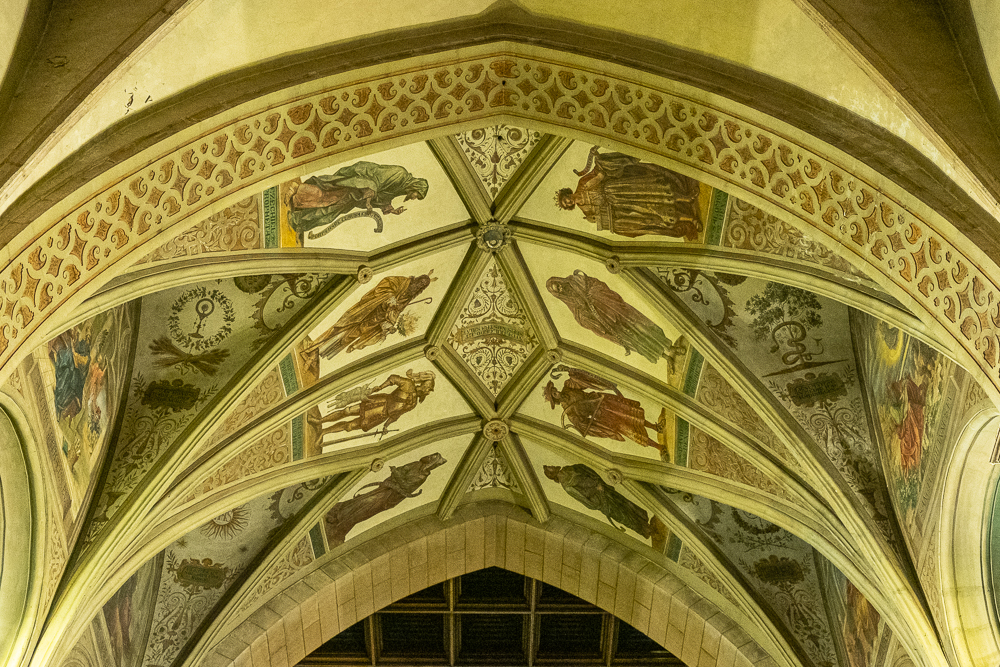
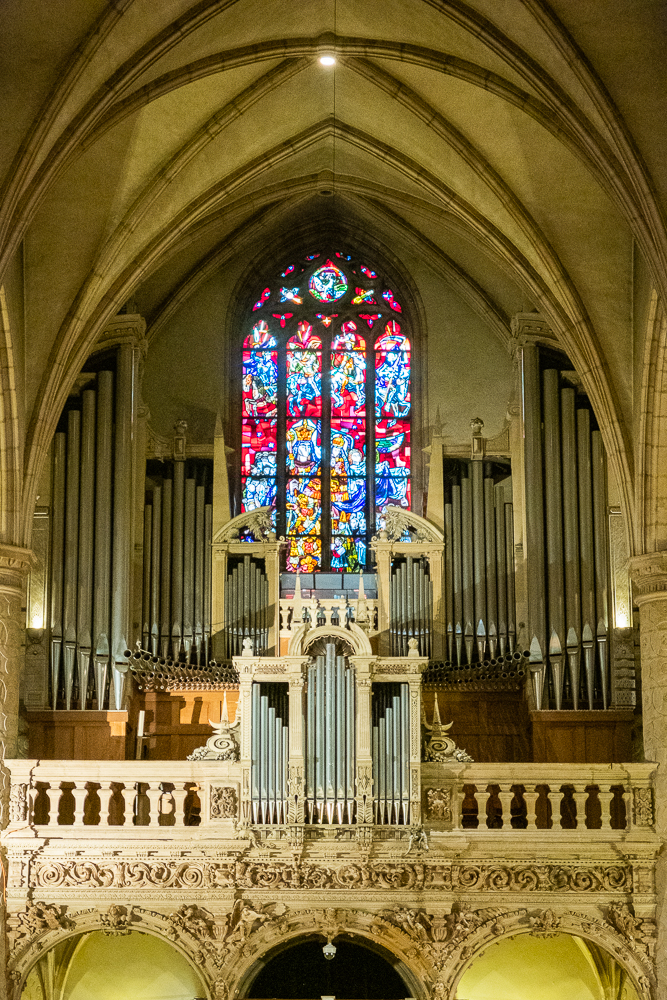
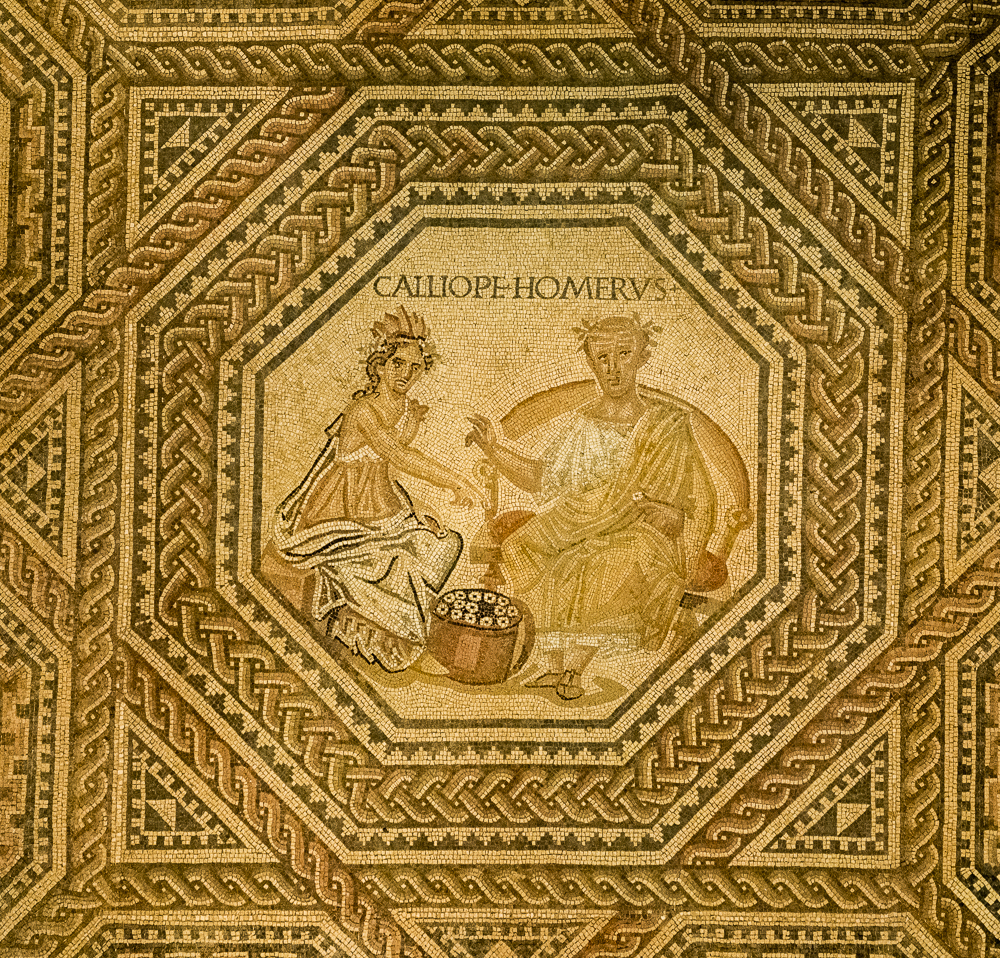
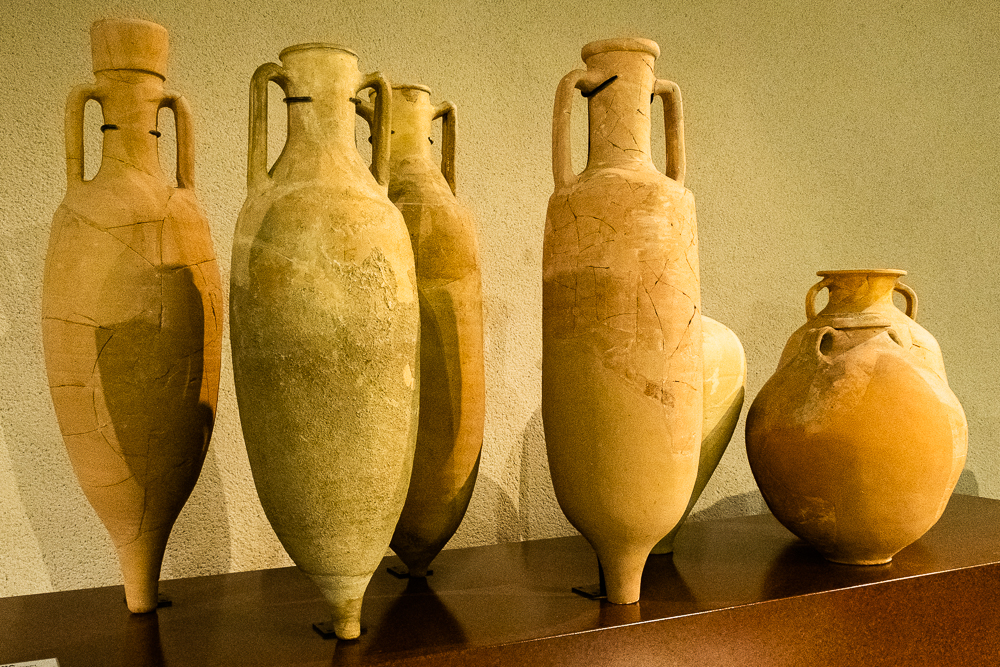
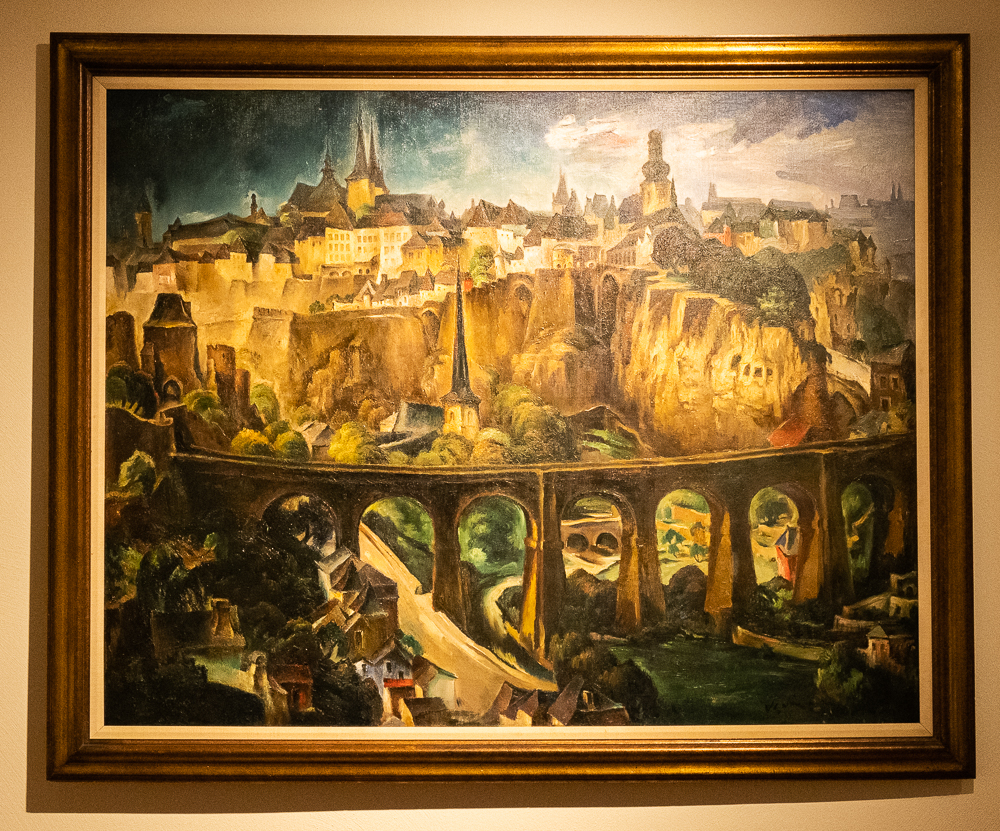
Since 24 February 2022, Russian aggression and the murderous war against the Ukrainian people take us back to the darkest times in European history. Tens of thousands dead, cities partially razed, millions of Ukrainian refugees wandering across Europe. How to react, as a museum, how to show a sign of solidarity with those under attack when direct cooperation with a Ukrainian museum is currently proving impossible and our own collections contain almost no objects related to this country?
By pure coincidence, MNHA was already long before the start of hostilities in contact with Russian born artist Maxim Kantor, well known for his very critical attitude towards the Putin regime and recent developments in Russia. Kantor spontaneously agreed to show more than sixty of his works that unmask the totalitarian and aggressive character of the current Russian regime.
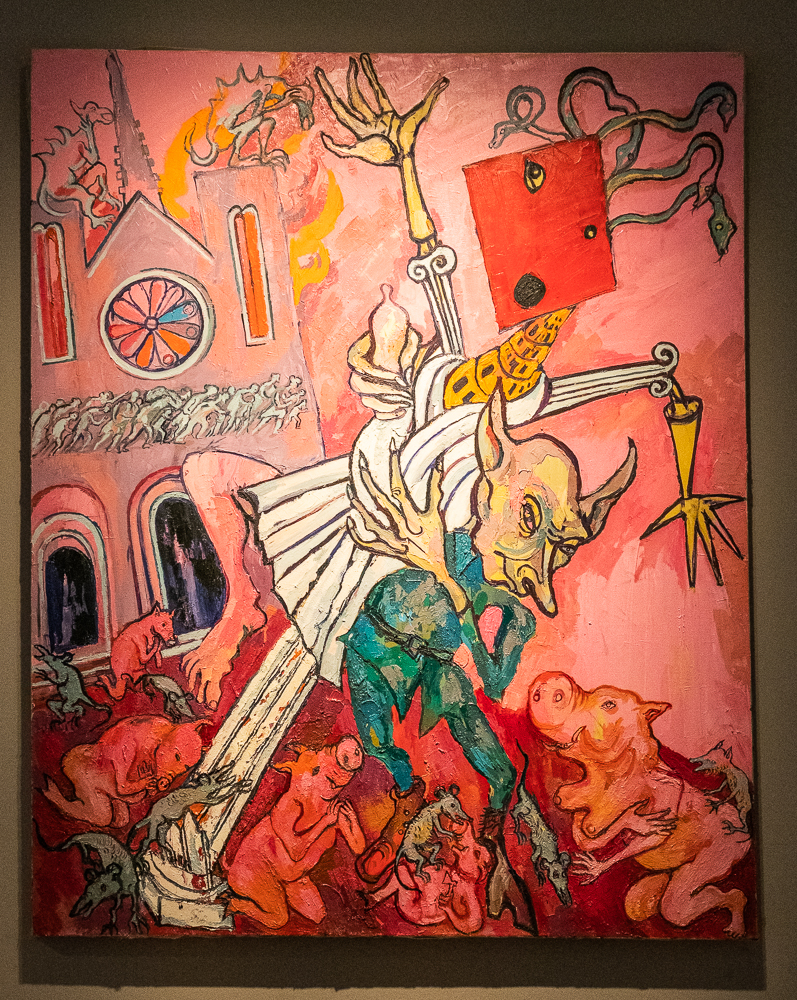


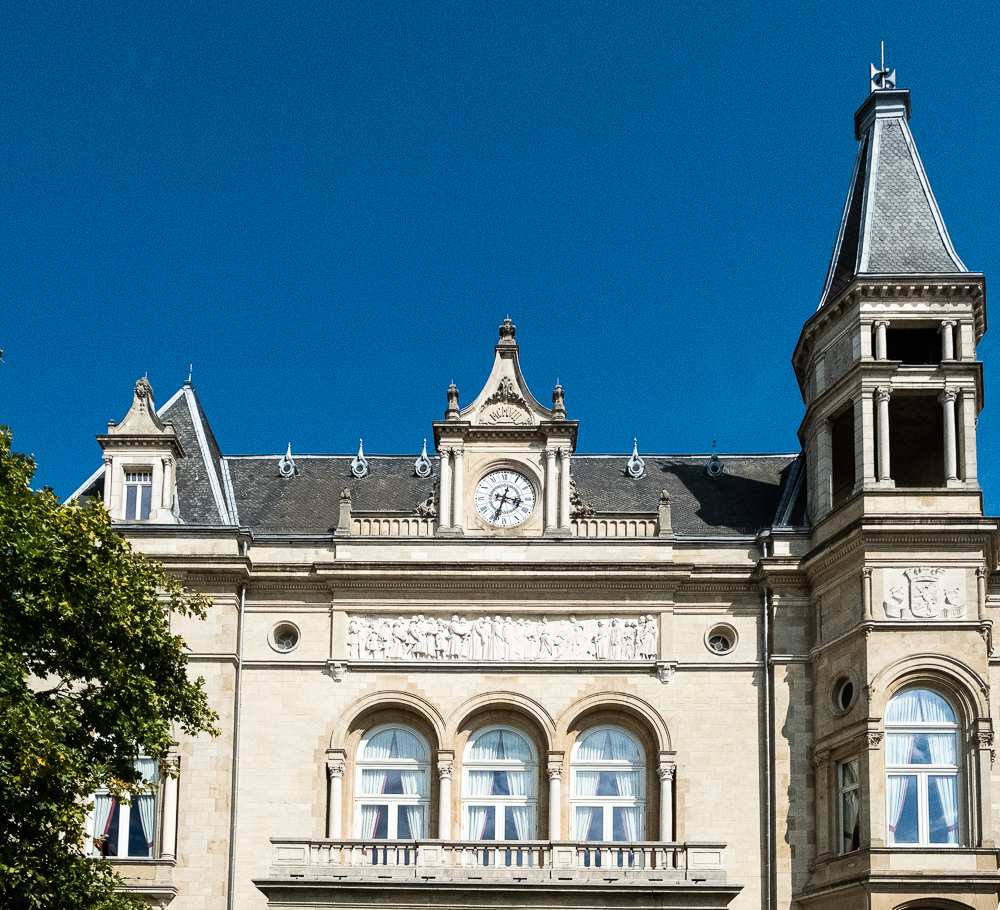
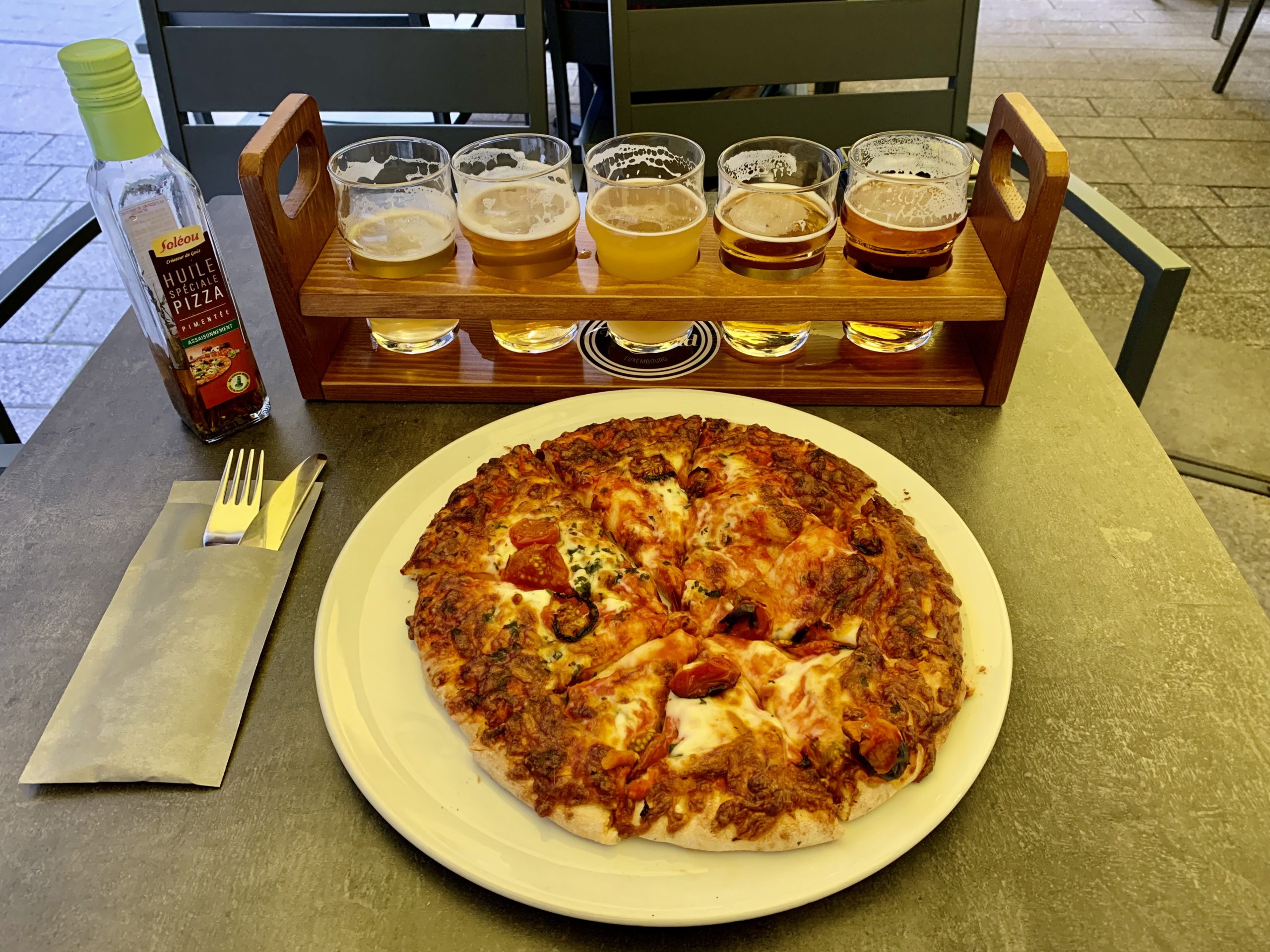
Yesterday is a bit of a blur. I woke up early, after a tough pre-travel night’s sleep, and said goodbye to Joel outside our hotel. The plan (ah, that word!) was for him to take a bus to the airport so he could meet his son, son-in-law, and a friend in Turkey for a mountain bike trip. My plan was to take the tram to the train station and take a train to Luxembourg, via Brussels, for the third phase of my adventure – the solo travel portion. We had heard that there was going to be a train strike in Amsterdam, which is why Joel took a bus. The clerk at our hotel said my trains should not be affected. WRONG! Joel’s bus and plane rides went swimmingly. My journey was much more convoluted. I get to the train station and what do I see? ALL TRAINS ARE CANCELED!
I considered flying to Luxembourg ($$$$$) or renting a car (none available) and instead decided to take FLIX bus. The bus wasn’t scheduled to leave until 4:00 p.m., but I headed to the other train station thinking I could, perhaps, squeeze onto an earlier bus. Nope. Impossible. And then…my 4:00 p.m. bus is CANCELED. I rebook for a 5:55 p.m. bus to Brussels with an hour and a half layover before hopping onto another bus to Luxembourg, set to arrive at 2:25 a.m. Those two buses were NOT canceled. Although I arrived very late to my hotel, taking a taxi from the train station to my lodging rather than walking at that hour, my key and room were ready for my sleepy head.
When I decided to visit Luxembourg, I thought Joel and I would have been barging and biking in Germany on the Mosel and Saar rivers…so very close to Luxembourg…that trip, of course, was canceled due to low water levels in the Rhine River.
Oh, well, I woke up at 8:00 a.m., had a nice breakfast at my hotel, and headed out to explore this gorgeous city. After lunching on a veggie burger, salad, and beer, I took a very long and refreshing nap!
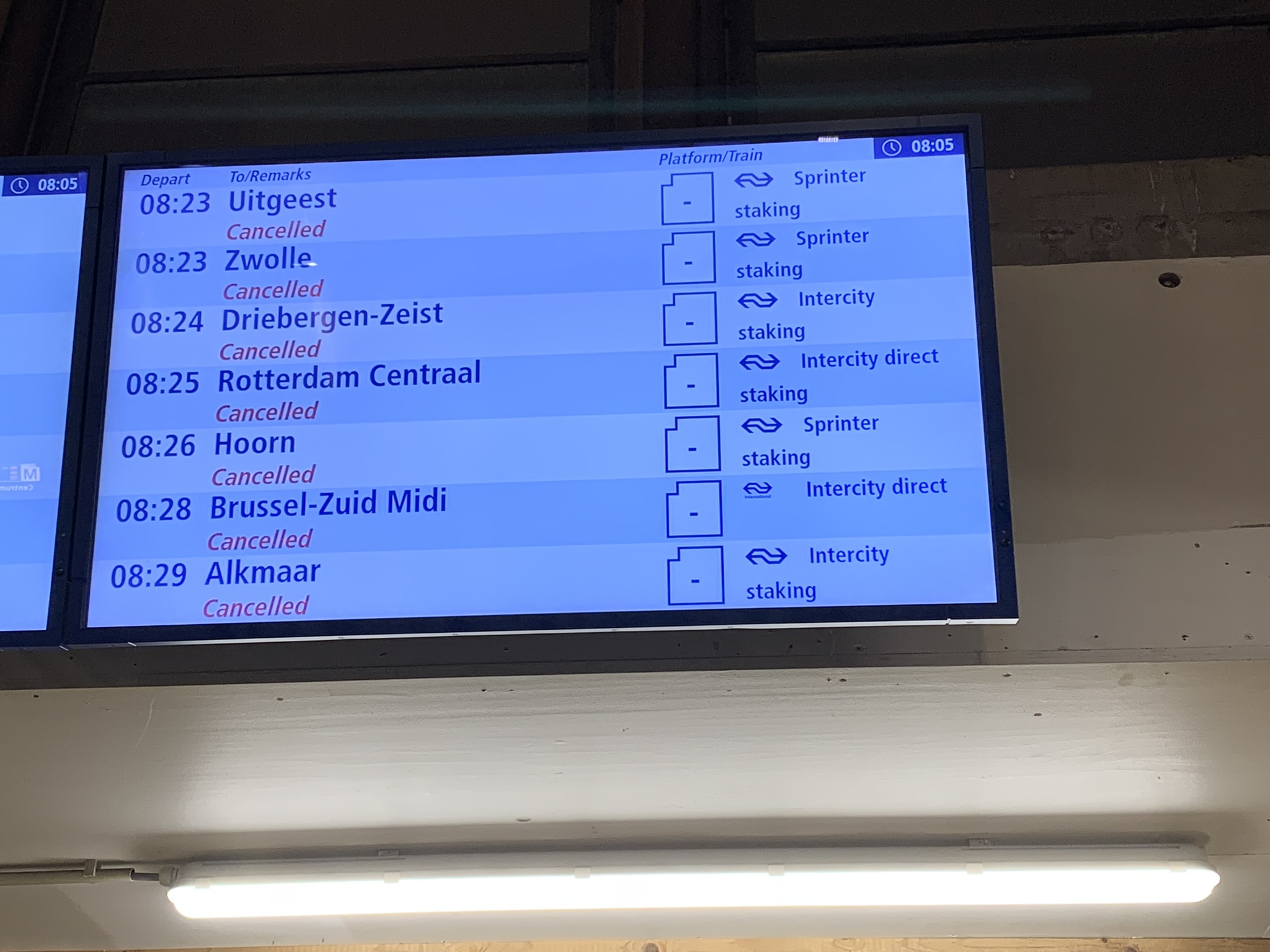
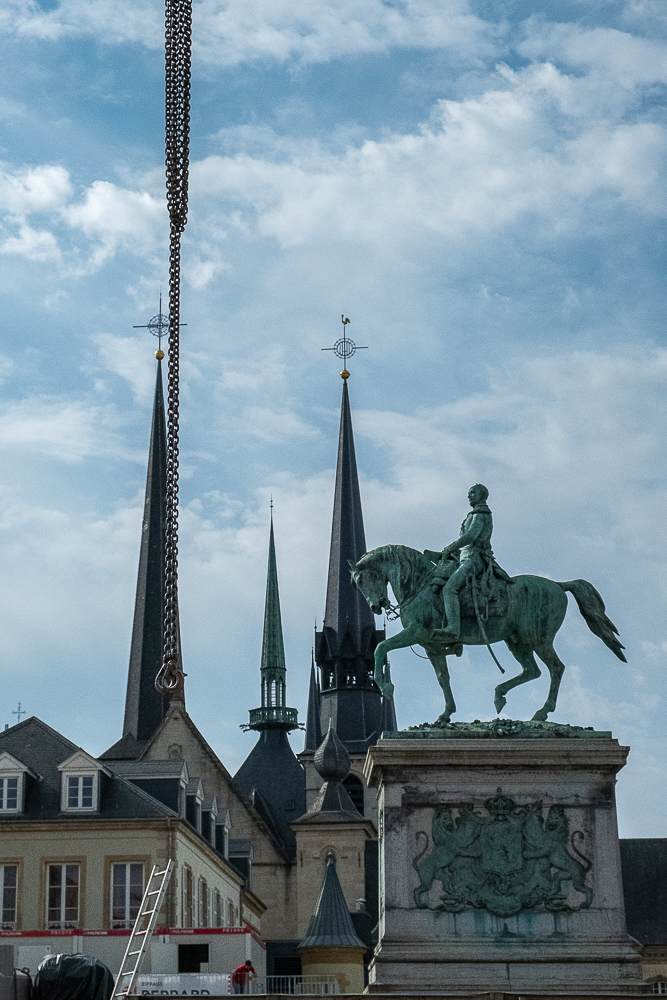
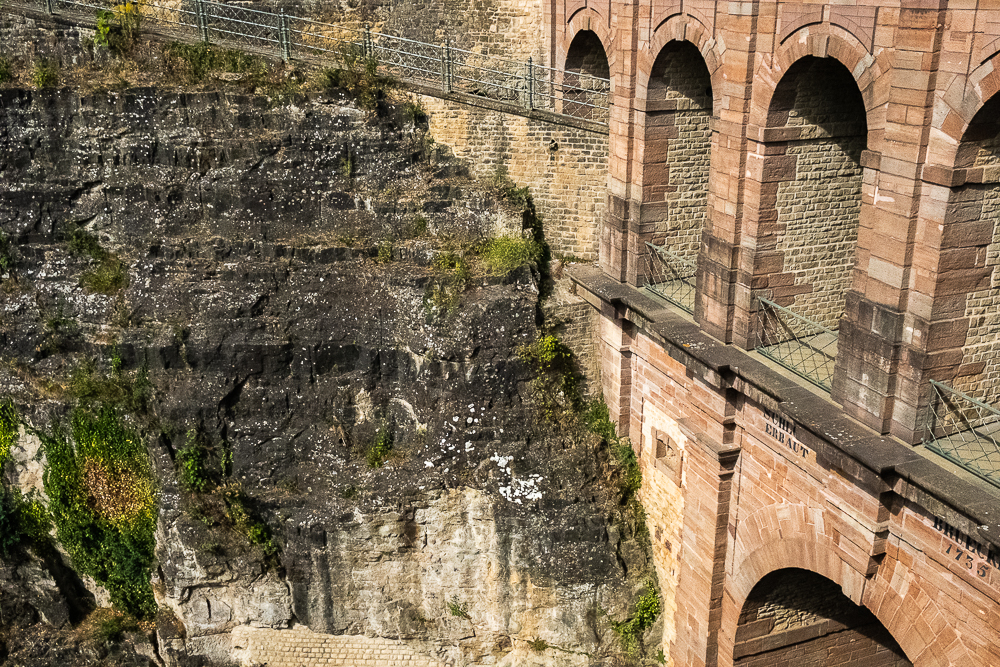



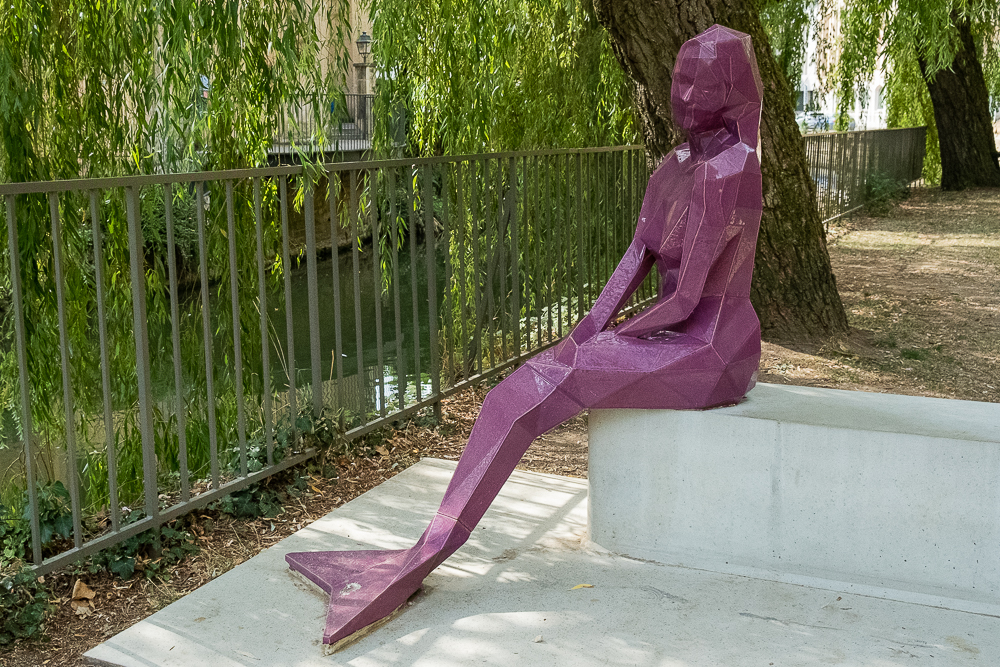

On 17 June, 2018, a monumental 4-meter high sculpture commemorating the victims of the Holocaust was inaugurated in Luxembourg City. It is a work by Shelomo Selinger, a French-Israeli artist of Polish origin who is a survivor of nine concentration camps, among them Theresienstadt. [https://www.holocaustremembrance.com/news-archive/unveiling-luxembourgs-first-monument-honouring-victims-holocaust]
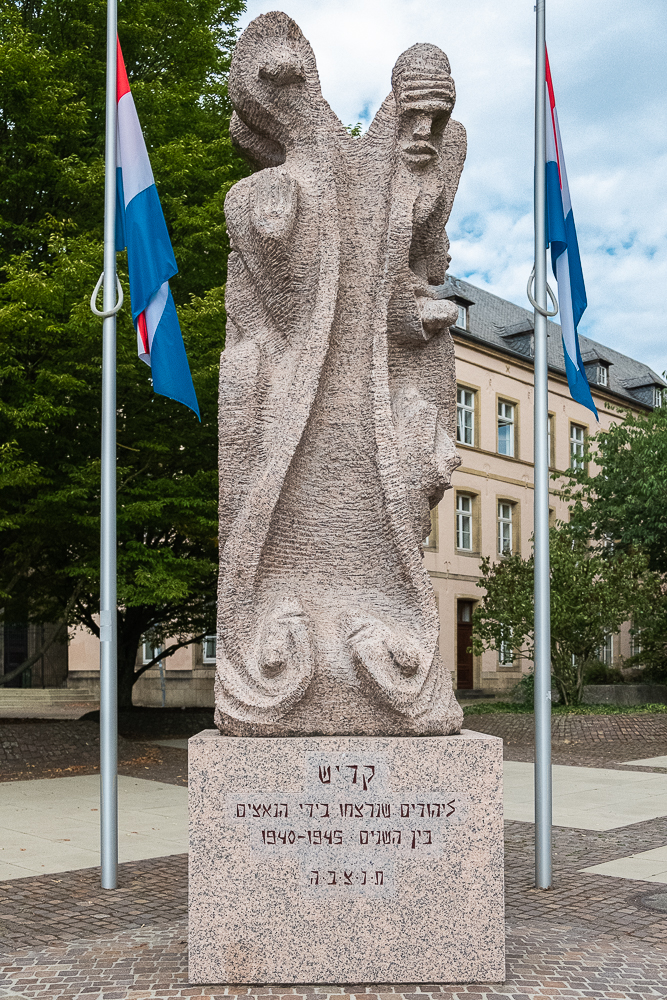

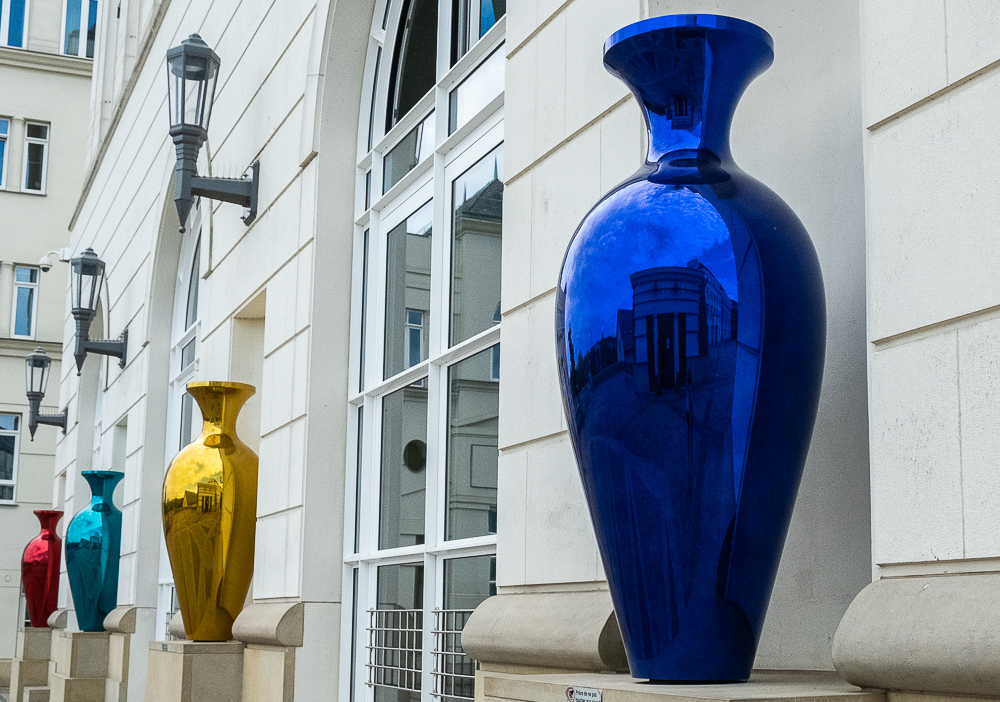

I thought I’d be typing today’s reflections on the train from Amsterdam to Luxembourg. Instead, I’m sitting in a cafe waiting for my bus…
Train strike: Yep, another Plan B! Or I should say Plan C since this delay is due to Conveyances. (So far, plans have changed because of Covid, Climate, and Conveyances!) Amsterdam is having a one-day train strike. I had been told that my trains from Amsterdam to Brussels to Luxembourg would be okay. Wrong! The earliest bus I can get leaves at 4:00 pm, arriving in Luxembourg just before midnight. Flexibility and travel insurance are key! [Update: Bus cancelled. Rescheduled to leave almost two hours later and arrive in Luxembourg almost three hours later. Total delay: 12 hours.]
Jewish and Dutch Resistance: In the Netherlands, due in part to extraordinary record keeping including logging each resident’s religion, the greatest percentage of Jewish citizens were killed in the Holocaust than in any other country. For example, only 5,000 of Amsterdam’s 80,000 Jews survived. Jews were once nearly 10% of the Dutch population. Jewish resisters, located mainly in the poorer parts of Amsterdam, tried to fight back and, if caught, were immediately murdered. The Dutch Resistance tried to help, including hiding some Jews in the zoo.
Windmills, dikes, and technology of the 1600s: Necessity breeds innovation! Located below sea level, Holland developed techniques to reclaim land by draining lakes and moving excess water via canals, surrounded by dikes, to the North Sea. Windmills and then steam engines – along with human power and ingenuity – created land fertile for agriculture and livable for people.
Boat/bike travel: I’ve been reticent to go on a bike trip since I’m not a cyclist – I’m much more of a hiker than a biker. Buying an e-bike about a month before this trip and deciding to rent an e-bike for this adventure made the riding so much easier. Add to that only having to unpack ONCE for a week in a comfortable cabin and having all meals handled – wowza! I’m definitely a fan of boat/bike trips!


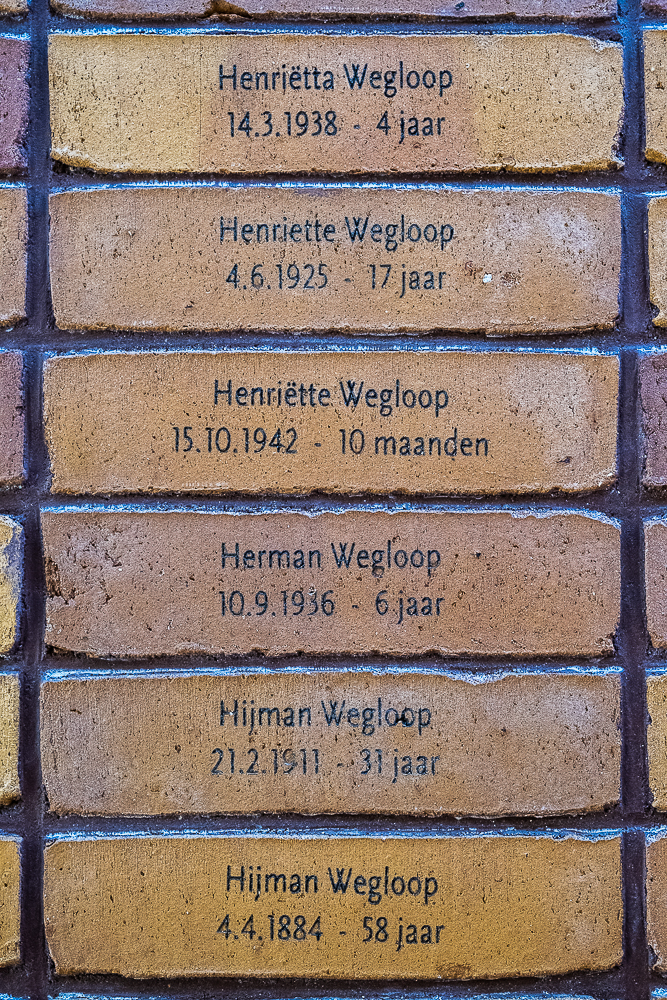

Following our barge & bike trip, Joel and I spent two wonderful days exploring Amsterdam. After dropping off our luggage at the Apollofirst Boutique Hotel, we embarked on Rick Steves’ audio tour of the city, hitting some of the tourist highlights from the outside. We lunched at a canal cafe before heading back to our hotel for naps and a nice dinner.
On our second day, we explored the Jewish Quarter with a tour guide. Next, we visited the largest Sephardic synagogue in Europe (the Portuguese Synagogue) and the Jewish Museum. While walking back to the tram, we saw 3,000 swimmers in the canals for an ALS fundraiser.
Dinner tonight was delicious Indonesian rijstafel, with many types of foods and a big variety of flavors.









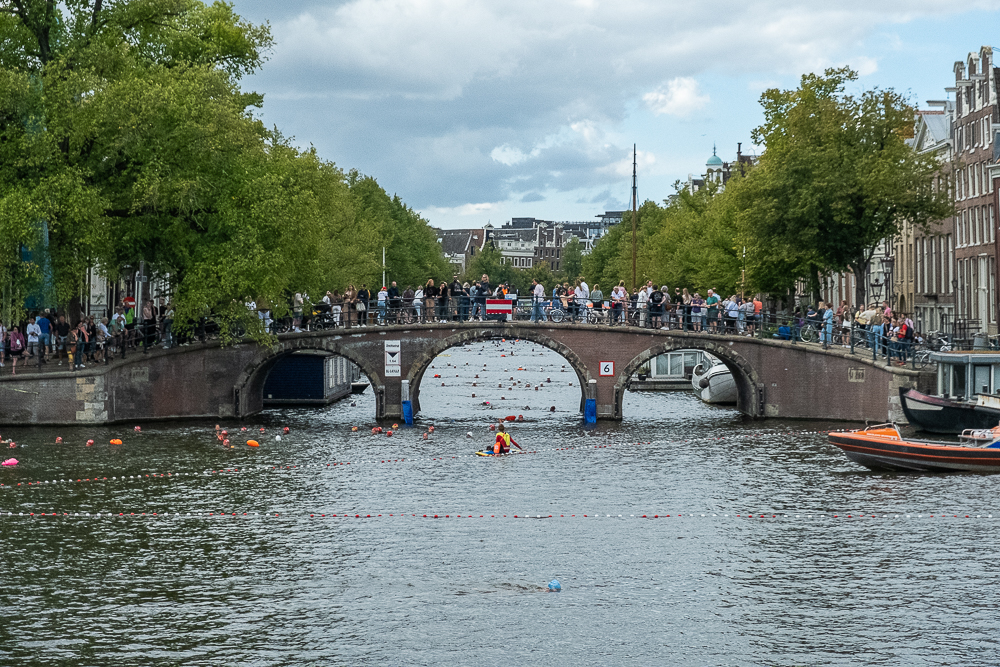
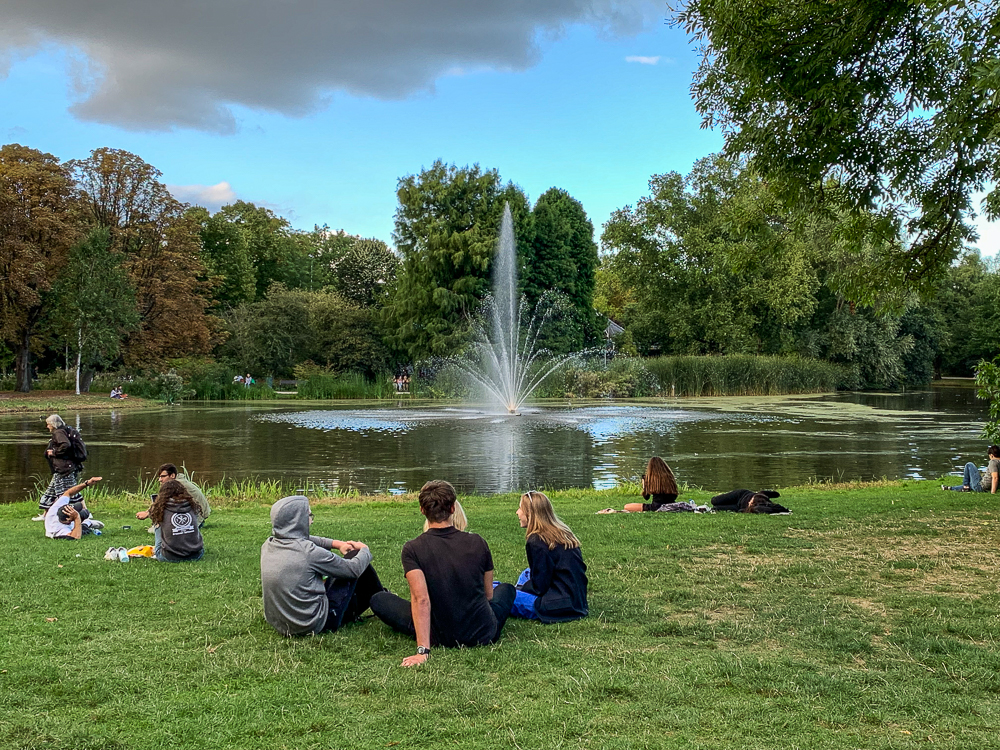

I have mixed feelings about our last day of riding. On the one hand, sitting on a bike for many hours can be a bit…uncomfortable (frequent sightseeing stops help!). On the other hand, an e-bike, great company, and beautiful scenery make the cycling very enjoyable.
We began in Zaandam and went to the open-air museum Zaanse Schans with beautiful windmills, traditional wooden houses, an old Dutch village, a cheese farm, and a traditional wooden clog maker. After spending over two hours at Zaanse Schans, we cycled through the recreational area of Twiske to Amsterdam.
Upon returning to the boat, we packed in time for the Captain’s dinner – mimosas and a toast in the lounge followed by our last dinner on board. Dessert? Flaming baked Alaska.
I thoroughly enjoyed my first bike tour. Yes, it was luxurious – a cruise, full meals, great service, a comfortable cabin. Riding an e-bike made the biking part much much easier. The scenery, the experiences, and the excitement of the whole tour make me ready to book my next boat and bike adventure!
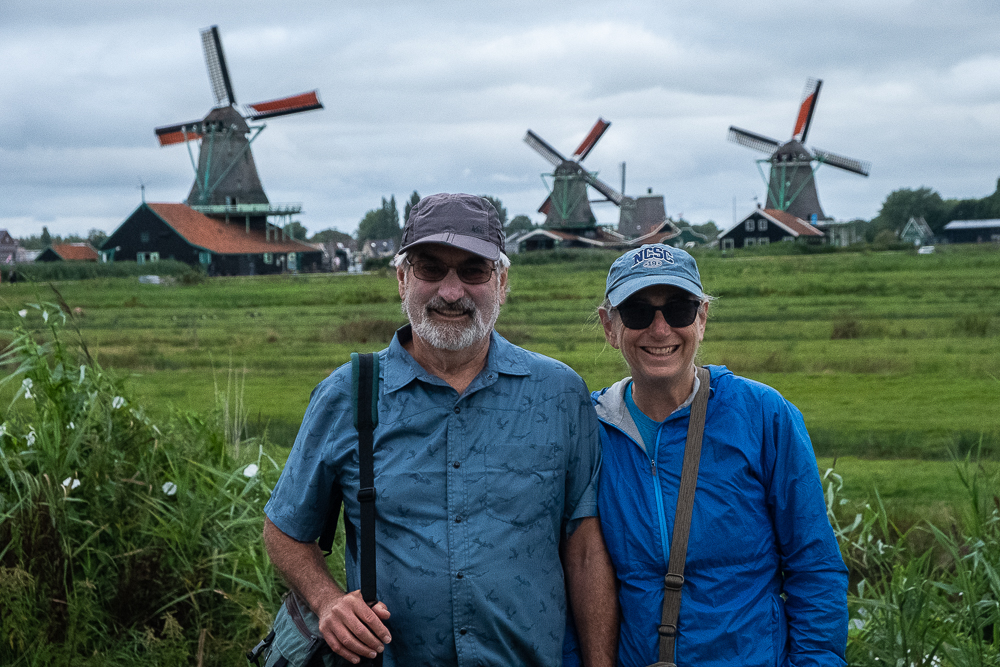

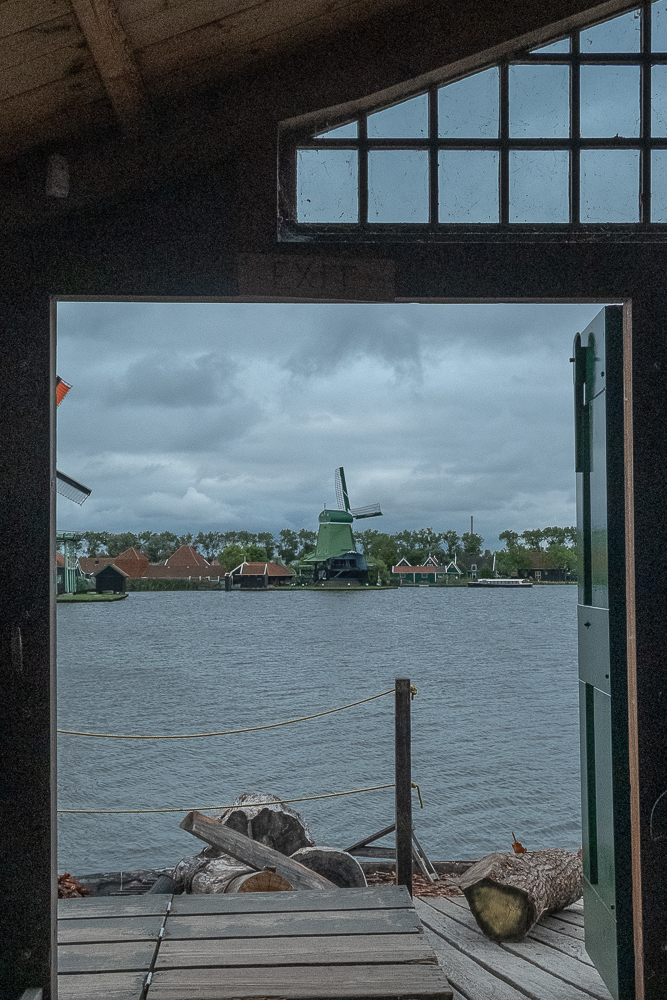
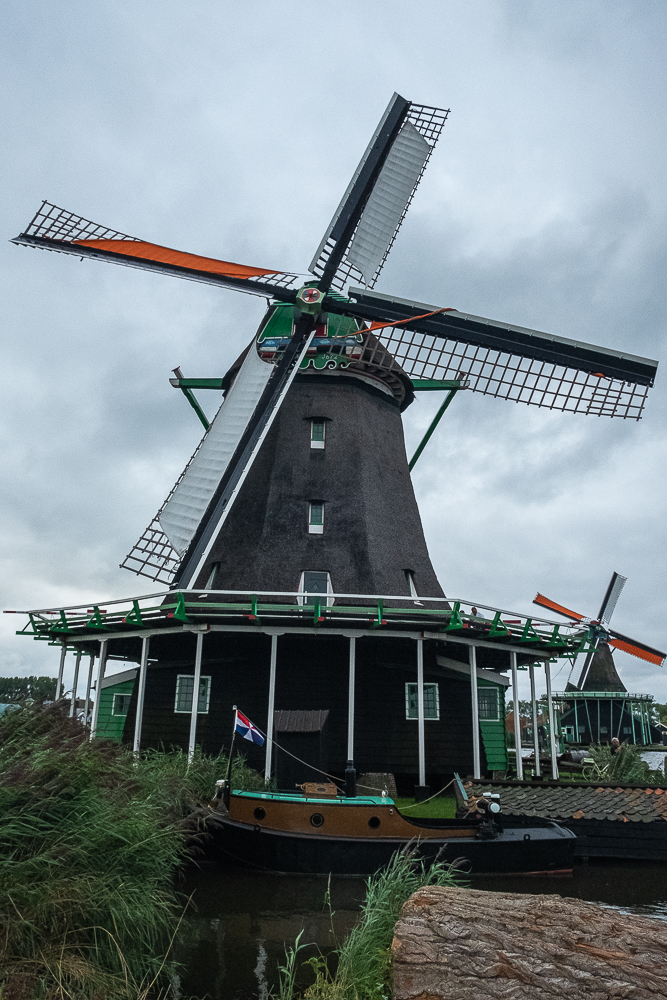
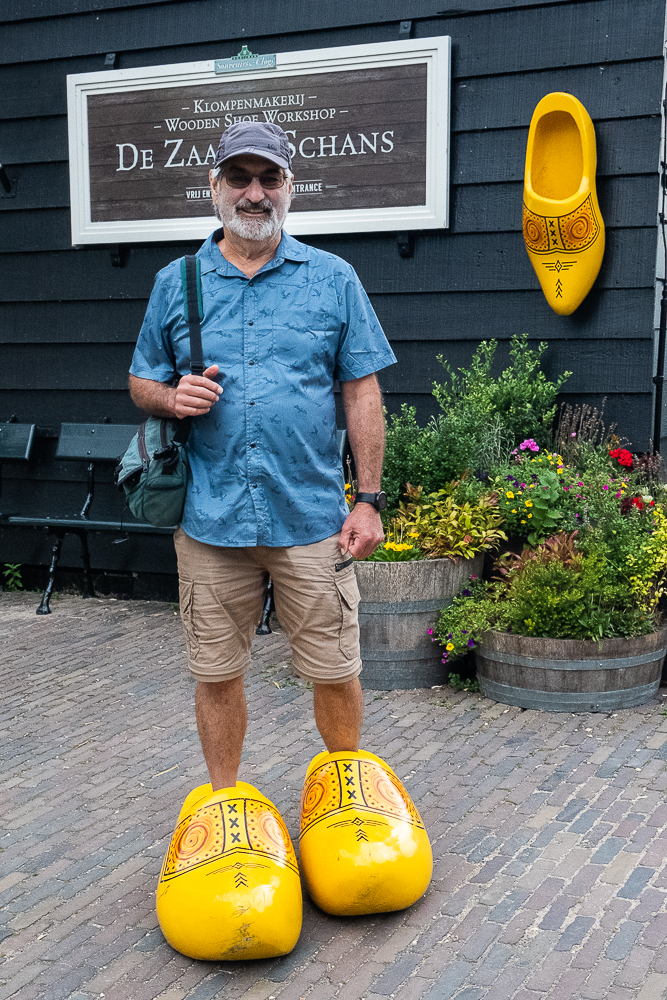
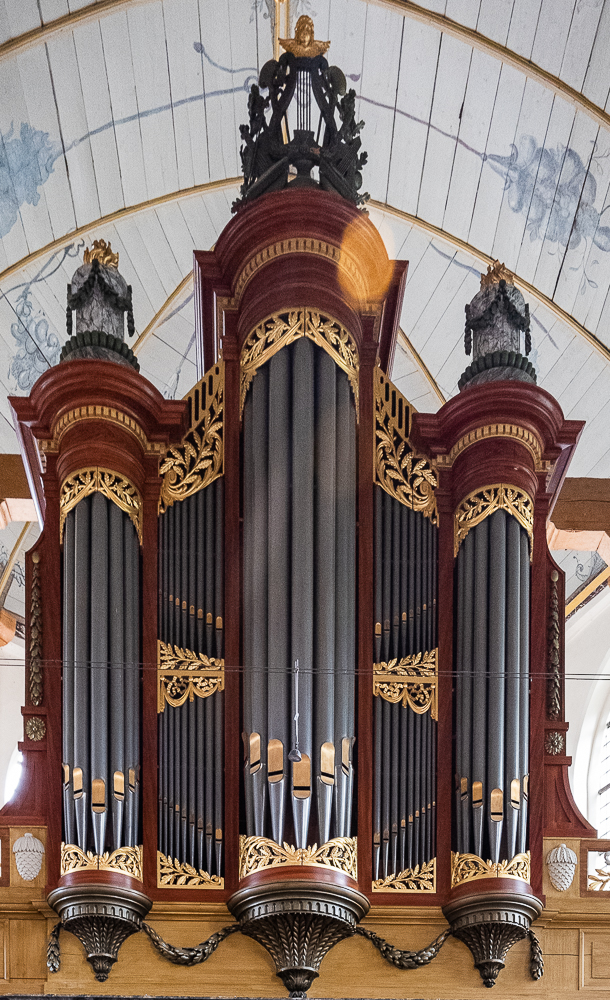



This was by far my favorite day of cycling! Riding on dikes and seeing windmills have been wonderful. Today, though, we rode through not only dikes but also dunes, beaches, and forests. The riding was variable, which added more excitement to the day. And, we saw Highland Cattle!!!
Where did we go? We started cycling through the beautiful Kennemer dunes, a national park where we spotted the Scottish Highland cows. Then we hung out at the beach in Zandvoort, going into the North Sea. We saw the largest steam engine of the world, the Cruquius pumping station, which helped to drain the lake into canals, before riding through forests and the center of Haarlem back to the ship.

